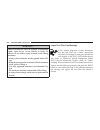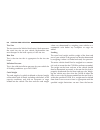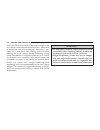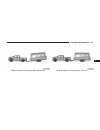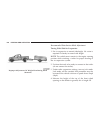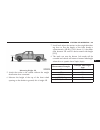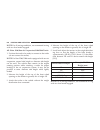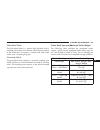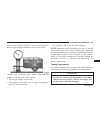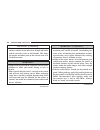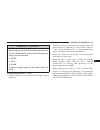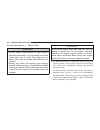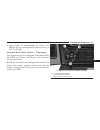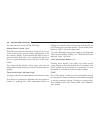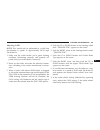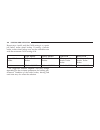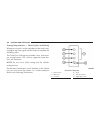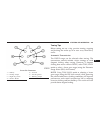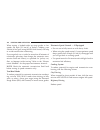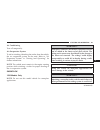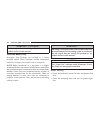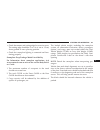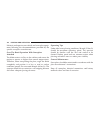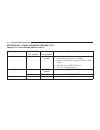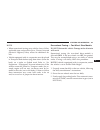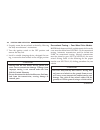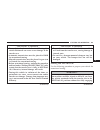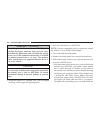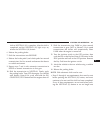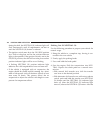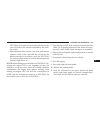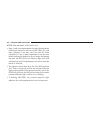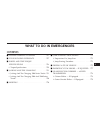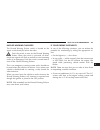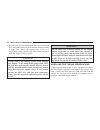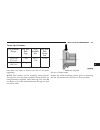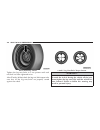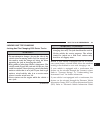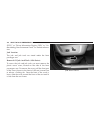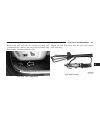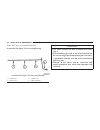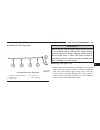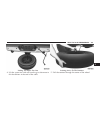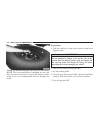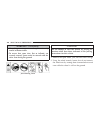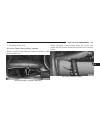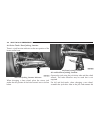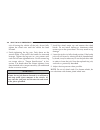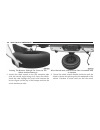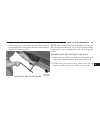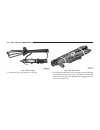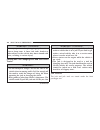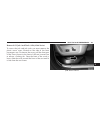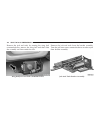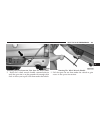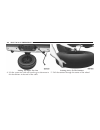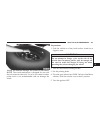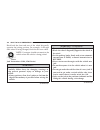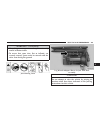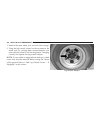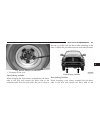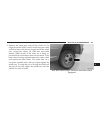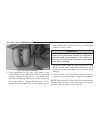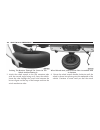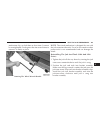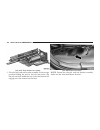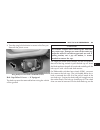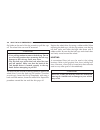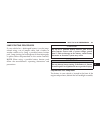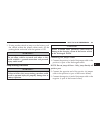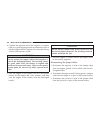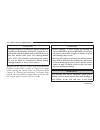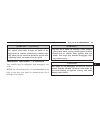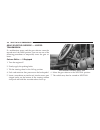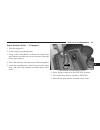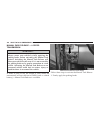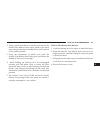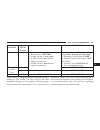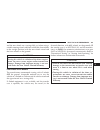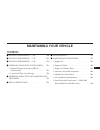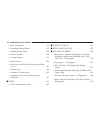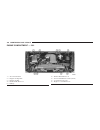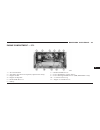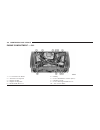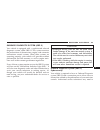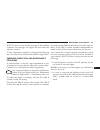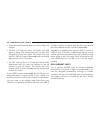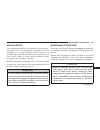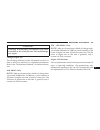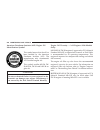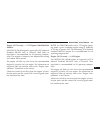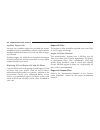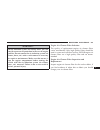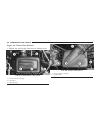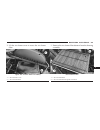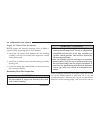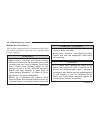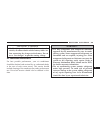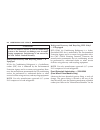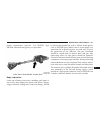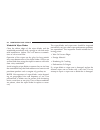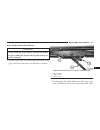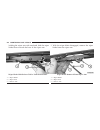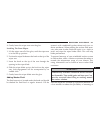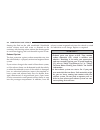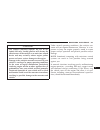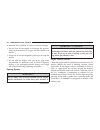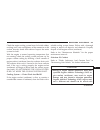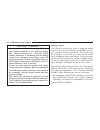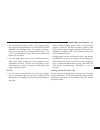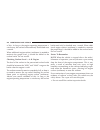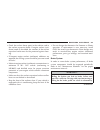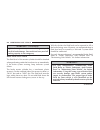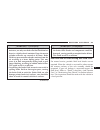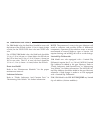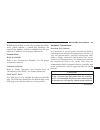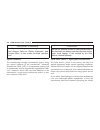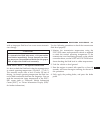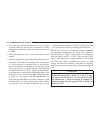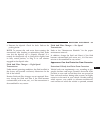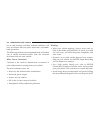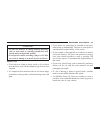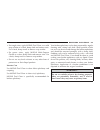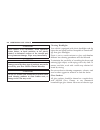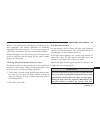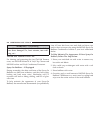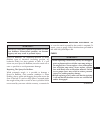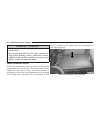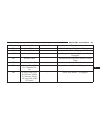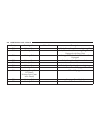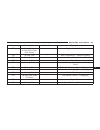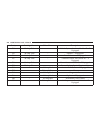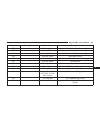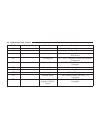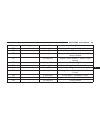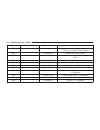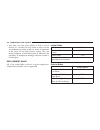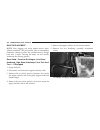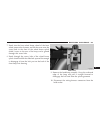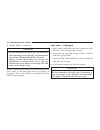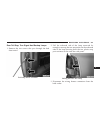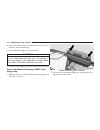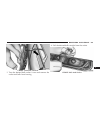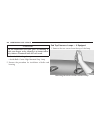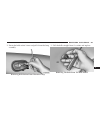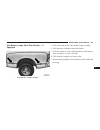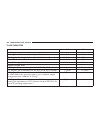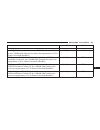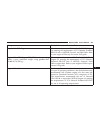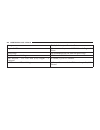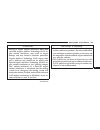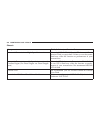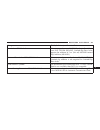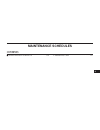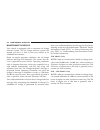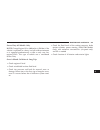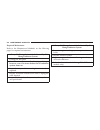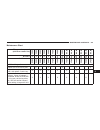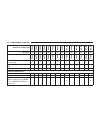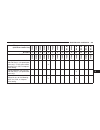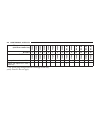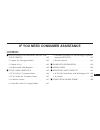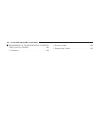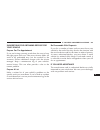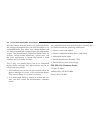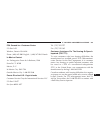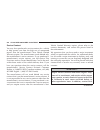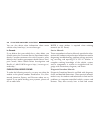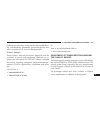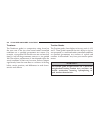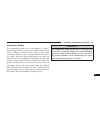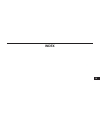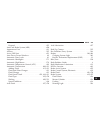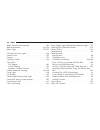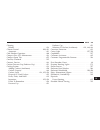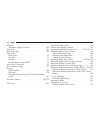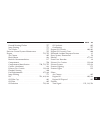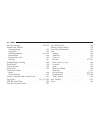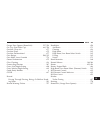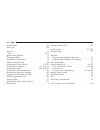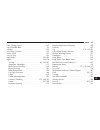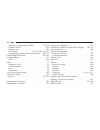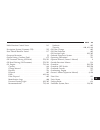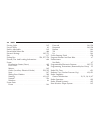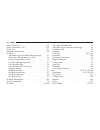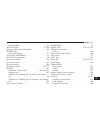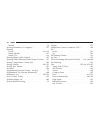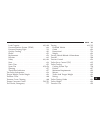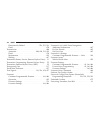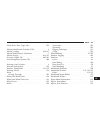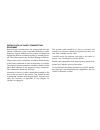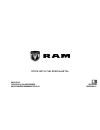- DL manuals
- RAM
- Trucks
- Trucks 1500
- Owner's Manual
RAM Trucks 1500 Owner's Manual
Summary of Trucks 1500
Page 1
1 5 0 0 / 2 5 0 0 / 3 5 0 0 o w n e r ’ s m a n u a l 2 0 1 6 r a m t r u c k.
Page 2
Vehicles sold in canada with respect to any vehicles sold in canada, the name fca us llc shall be deemed to be deleted and the name fca canada inc. Used in substitution therefore. Driving and alcohol drunken driving is one of the most frequent causes of accidents. Your driving ability can be serious...
Page 3: Table Of Contents
Table of contents section page 1 introduction . . . . . . . . . . . . . . . . . . . . . . . . . . . . . . . . . . . . . . . . . . . . . . . . . . . . . . . . . . . . . . . 3 2 things to know before starting your vehicle . . . . . . . . . . . . . . . . . . . . . . . . . . . . . . . . . . 9 3 understa...
Page 5: Introduction
Introduction contents 䡵 introduction . . . . . . . . . . . . . . . . . . . . . . . .4 䡵 how to use this manual . . . . . . . . . . . . . .4 䡵 warnings and cautions . . . . . . . . . . . . . .6 䡵 van conversions/campers . . . . . . . . . . . .6 䡵 vehicle identification number . . . . . . . .6 䡵 vehic...
Page 6
Introduction congratulations on selecting your new fca us llc vehicle. Be assured that it represents precision workman- ship, distinctive styling, and high quality - all essentials that are traditional to our vehicles. This owner’s manual has been prepared with the assis- tance of service and engine...
Page 7
1 introduction 5.
Page 8
Warnings and cautions this owner’s manual contains warnings against operating procedures that could result in a collision, bodily injury and/or death. It also contains cautions against procedures that could result in damage to your vehicle. If you do not read this entire owner’s manual, you may miss...
Page 9
Frame and underbody as well as the automobile infor- mation disclosure label affixed to a window on your vehicle, the vehicle registration and title. Note: it is illegal to remove or alter the vin. Vehicle modifications/alterations warning! Any modifications or alterations to this vehicle could seri...
Page 11: Contents
Things to know before starting your vehicle contents 䡵 a word about your keys . . . . . . . . . . . . .12 ▫ ignition node module (ignm) . . . . . . . . . . . .12 ▫ keyless push button ignition — if equipped . . .13 ▫ key fob . . . . . . . . . . . . . . . . . . . . . . . . . . . . .14 ▫ removing key ...
Page 12
▫ sound horn with remote key lock . . . . . . . . .28 ▫ using the panic alarm . . . . . . . . . . . . . . . . . .29 ▫ rke air suspension (remote lowering of the vehicle) — if equipped . . . . . . . . . . . . . . . . . .30 ▫ programming additional transmitters. . . . . . . .30 ▫ transmitter battery r...
Page 13
䡵 occupant restraint systems . . . . . . . . . .52 ▫ important safety precautions . . . . . . . . . . . . . .52 ▫ seat belt systems . . . . . . . . . . . . . . . . . . . . . .54 ▫ supplemental restraint system (srs) . . . . . . . .71 ▫ child restraints . . . . . . . . . . . . . . . . . . . . . . .85...
Page 14
A word about your keys your vehicle uses either a key start ignition system or keyless ignition system. The key start ignition system consists of a either a bladed key with an immobilizer chip in it, or a key fob with remote keyless entry (rke) transmitter and an ignition node module (ignm). The key...
Page 15
Keyless push button ignition — if equipped this feature allows the driver to operate the ignition switch with the push of a button as long as the remote keyless entry (rke) transmitter is in the passenger compartment. The keyless push button ignition has four operating positions; three of which are ...
Page 16
Key fob key fob — if equipped the key fob operates the ignition switch. Insert the square end of the key fob into the ignition switch located on the instrument panel and rotate to the desired posi- tion. It also contains the remote keyless entry (rke) transmitter and an emergency key, which stores i...
Page 17
Keyless push button ignition key fob — if equipped this keyless push button ignition key fob allows the driver to operate the ignition switch with the push of a button, as long as the remote keyless entry (rke) transmitter is in the passenger compartment. The keyless push button ignition has four op...
Page 18
Note: you can insert the double-sided emergency key into the door lock cylinder with either side up. Removing key fob from ignition place the shift lever in park (if equipped with an automatic transmission). Turn the key fob to the off position and then remove the key fob. Note: • the power window s...
Page 19
• for vehicles equipped with a touchscreen radio, refer to “uconnect settings” in “understanding your instru- ment panel” for further information. Caution! • if your vehicle battery becomes low or dead, your key fob will become locked in the ignition. • do not attempt to remove the key fob while in ...
Page 20
Warning! (continued) • do not leave the key fob in or near the vehicle, or in a location accessible to children, and do not leave the ignition of a vehicle equipped with keyless enter-n-go in the acc or on/run mode. A child could operate power windows, other con- trols, or move the vehicle. • do not...
Page 21
General information the following regulatory statement applies to all radio frequency (rf) devices equipped in this vehicle: this device complies with part 15 of the fcc rules and with industry canada license-exempt rss standard(s). Operation is subject to the following two conditions: 1. This devic...
Page 22
Note: a key fob that has not been programmed is also considered an invalid key. During normal operation, after turning on the ignition switch, the vehicle security light will turn on for three seconds for a bulb check. If the light remains on after the bulb check, it indicates that there is a proble...
Page 23
Caution! • always remove the key fobs from the vehicle and lock all doors when leaving the vehicle unat- tended. • for vehicles equipped with keyless enter-n-go, always remember to place the ignition in the off position. Note: duplication of key fobs may be performed at an authorized dealer. This pr...
Page 24
Vehicle security alarm the vehicle security alarm monitors the vehicle doors and ignition for unauthorized operation. When the ve- hicle security alarm is activated, interior switches for door locks are disabled. The system provides both au- dible and visible signals for the first three minutes the ...
Page 25
Same exterior zone (refer to ⬙ keyless enter- n-go ⬙ in ⬙ things to know before starting your vehicle ⬙ for further information). • push the lock button on the remote keyless entry (rke) transmitter. 3. If any doors are open, close them. The vehicle security alarm will set when you use the power doo...
Page 26
System will give you a false alarm. If one of the previ- ously described arming sequences has occurred, the vehicle security alarm will arm regardless of whether you are in the vehicle or not. If you remain in the vehicle and open a door, the alarm will sound. If this occurs, disarm the vehicle secu...
Page 27
The illuminated entry system will not operate if the dimmer control is in the “dome off” position (rotate horizontal thumb wheel on the bottom of the switch to the far left detent position). Note: if your vehicle is equipped with illuminated approach lights under the outside mirrors, they can be tur...
Page 28
Push and release the lock button on the rke transmit- ter to lock all doors, the tailgate and the rambox (if equipped). The turn signal lights will flash and the horn will chirp to acknowledge the signal. Note: inserting the key fob with rke transmitter into the ignition switch disables the system f...
Page 29
Remote unlock the doors push and release the unlock button on the rke transmitter once to unlock the driver’s door. Push the unlock button twice within five seconds to unlock all doors, the tailgate and the rambox (if equipped). The turn signal lights will flash to acknowledge the unlock signal. The...
Page 30
Note: pushing the lock button on the rke transmitter while you are inside the vehicle will activate the vehicle security alarm system. Opening a door with the vehicle security alarm system activated will cause the alarm to sound. Push the unlock button to deactivate the vehicle security alarm system...
Page 31
(evic)/settings (customer-programmable features)” in “understanding your instrument panel” for further information. • for vehicles equipped with a touchscreen radio, refer to “uconnect settings” in “understanding your instru- ment panel” for further information. Note: pushing the lock button on the ...
Page 32
Rke air suspension (remote lowering of the vehicle) — if equipped for easy entry and loading, your vehicle can be lowered by pushing the key fob air suspension lowering button two times. When remote key fob lowering is requested, the vehicle will send a series of chirps and flashes to alert the cust...
Page 33
Transmitter battery replacement the recommended replacement battery is one cr2032 battery. Note: • perchlorate material — special handling may apply. See www.Dtsc.Ca.Gov/hazardouswaste/perchlorate • do not touch the battery terminals that are on the back housing or the printed circuit board. 1. Remo...
Page 34
2. Separating rke halves requires screw removal – if equipped, and gently prying the two halves of the rke transmitter apart. Make sure not to damage the seal during removal. Emergency key removal remove screw from transmitter case 32 things to know before starting your vehicle.
Page 35
3. Remove the battery by turning the back cover over (battery facing downward) and tapping it lightly on a solid surface such as a table or similar, then replace the battery. When replacing the battery, match the + sign on the battery to the + sign on the inside of the battery clip, located on the b...
Page 36
New battery with your fingers. Skin oils may cause battery deterioration. If you touch a battery, clean it with rubbing alcohol. 4. To assemble the rke transmitter case, snap the two halves together, reposition and secure the screw as shown in step #2 for removal. General information the following r...
Page 37
How to use remote start all of the following conditions must be met before the engine will remote start: • shift lever in park • doors closed • hood closed • hazard switch off • brake switch inactive (brake pedal not pushed) • ignition key removed from ignition switch • battery at an acceptable char...
Page 38
Remote start abort message the following messages will display in the evic/did if the vehicle fails to remote start or exits remote start prematurely: • remote start cancelled — door open • remote start cancelled — hood open • remote start cancelled — fuel low • remote start cancelled — system fault...
Page 39
The ignition switch must be cycled to the on/run position before you can repeat the start sequence for a third cycle. To exit remote start mode without driving the vehicle push and release the remote start button one time or allow the engine to run for the entire 15-minute cycle. Note: to avoid unin...
Page 40
General information the following regulatory statement applies to all radio frequency (rf) devices equipped in this vehicle: this device complies with part 15 of the fcc rules and with industry canada licence-exempt rss standard(s). Operation is subject to the following two conditions: 1. This devic...
Page 41
Front doors may be opened with the inside door handle without lifting the lock knob. Doors locked before closing will remain locked when closed. The emergency key will unlock the driver door lock on your vehicle. Warning! • do not leave children or animals inside parked vehicles in hot weather. Inte...
Page 42
Warning! (continued) • do not leave the key fob in or near the vehicle, or in a location accessible to children, and do not leave the ignition of a vehicle equipped with keyless enter-n-go in the acc or on/run mode. A child could operate power windows, other con- trols, or move the vehicle. Power do...
Page 43
Operate. A chime will sound if the key fob is in the ignition switch and a door is open, as a reminder to remove the key fob. Automatic door locks — if equipped the auto door lock feature default condition is enabled. When enabled, the door locks will lock automatically when the vehicle’s speed exce...
Page 44
Child-protection door lock to provide a safer environment for children riding in the rear seat, the rear doors (if equipped) of your vehicle have the child-protection door lock system. To use the system, open each rear door, use a flat blade screwdriver (or emergency key) and rotate the dial to enga...
Page 45
Warning! Avoid trapping anyone in a vehicle in a collision. Remember that the rear doors can only be opened from the outside when the child-protection locks are engaged. Note: • after setting the child-protection door lock system, always test the door from the inside to make certain it is in the des...
Page 46
• if the vehicle is unlocked by passive entry and no door is opened within 60 seconds, the vehicle will re-lock and if equipped will arm the security alarm. • the vehicles security alarm can be armed/disarmed by pushing the passive entry key fob lock/unlock buttons (if equipped). To unlock from the ...
Page 47
To unlock from the passenger side: with a valid passive entry rke transmitter within 5 ft (1.5 m) of the passenger door handle, grab the front passenger door handle to unlock all doors automatically. The interior door panel lock knob will raise when the door is unlocked. Note: all doors will unlock ...
Page 48
To lock the vehicle’s doors: with one of the vehicle’s passive entry rke transmitters within 5 ft (1.5 m) of the driver or passenger front door handles, push the door handle lock button to lock all doors. Do not grab the door handle when pushing the door handle lock button. This could unlock the doo...
Page 49
Note: • after pushing the door handle lock button, you must wait two seconds before you can lock or unlock the doors, using either passive entry door handle. This is done to allow you to check if the vehicle is locked by pulling the door handle, without the vehicle reacting and unlocking. • the pass...
Page 50
Windows power windows — if equipped the control on the left front door panel has up-down switches that give you fingertip control of all power windows. There is a single opening and closing switch on the front passenger door for passenger window control and on the rear doors of the quad cab and crew...
Page 51
Warning! (continued) particularly unattended children, can become en- trapped by the windows while operating the power window switches. Such entrapment may result in serious injury or death. Auto-down both the driver and front passenger window switch have an auto-down feature. Push the window switch...
Page 52
Note: if the window runs into any obstacle during the auto-closure, it will reverse direction and then go back down. Remove the obstacle and use the window switch again to close the window. Any impact due to rough road conditions may trigger the auto reverse function unex- pectedly during auto closu...
Page 53
Window lockout switch (4–door models only) the window lockout switch on the driver’s door allows you to disable the window control on the rear passenger doors. To disable the window controls on the rear passenger doors, push the window lock button into the latched or down position. To enable the win...
Page 54
Open or partially open positions. This is a normal occur- rence and can be minimized. If the buffeting occurs with the rear windows open, then open the front and rear windows together to minimize the buffeting. If the buffeting occurs with the sunroof open, adjust the sun- roof opening to minimize t...
Page 55
Restraints or belt-positioning booster seats. Older chil- dren who do not use child restraints or belt- positioning booster seats should ride properly buckled up in a vehicle with a rear seat. 4. Never allow children to slide the shoulder belt behind them or under their arm. 5. You should read the i...
Page 56
Seat belt systems buckle up even though you are an excellent driver, even on short trips. Someone on the road may be a poor driver and could cause a collision that includes you. This can happen far away from home or on your own street. Research has shown that seat belts save lives, and they can redu...
Page 57
Beltalert warning sequence the beltalert warning sequence is activated when the vehicle is moving above a specified vehicle speed range and the driver or outboard front seat passenger is un- buckled (if equipped with outboard front passenger seat beltalert). The beltalert warning sequence starts by ...
Page 58
Note: if beltalert has been deactivated and the driver or outboard front seat passenger (if equipped with out- board front passenger seat beltalert) is unbuckled the seat belt reminder light will turn on and remain on until the driver and outboard front seat passenger seat belts are buckled. Lap/sho...
Page 59
Warning! (continued) • do not allow people to ride in any area of your vehicle that is not equipped with seats and seat belts. • be sure everyone in your vehicle is in a seat and using a seat belt properly. • wearing your seat belt incorrectly could make your injuries in a collision much worse. You ...
Page 60
Warning! (continued) • a seat belt that is too loose will not protect you properly. In a sudden stop, you could move too far forward, increasing the possibility of injury. Wear your seat belt snugly. • a seat belt that is worn under your arm is danger- ous. Your body could strike the inside surfaces...
Page 61
Lap/shoulder belt operating instructions 1. Enter the vehicle and close the door. Sit back and adjust the seat. 2. The seat belt latch plate is above the back of the front seat, and next to your arm in the rear seat (for vehicles equipped with a rear seat). Grasp the latch plate and pull out the sea...
Page 62
4. Position the lap belt so that it is snug and lies low across your hips, below your abdomen. To remove slack in the lap belt portion, pull up on the shoulder belt. To loosen the lap belt if it is too tight, tilt the latch plate and pull on the lap belt. A snug seat belt reduces the risk of sliding...
Page 63
6. To release the seat belt, push the red button on the buckle. The seat belt will automatically retract to its stowed position. If necessary, slide the latch plate down the webbing to allow the seat belt to retract fully. Lap/shoulder belt untwisting procedure use the following procedure to untwist...
Page 64
As a guide, if you are shorter than average, you will prefer the shoulder belt anchorage in a lower position, and if you are taller than average, you will prefer the shoulder belt anchorage in a higher position. After you release the anchorage button, try to move it up or down to make sure that it i...
Page 65
1. Remove the mini-latch plate and regular latch plate from its stowed position on the seat. 2. Grasp the mini-latch plate and pull the seat belt over the seat. 3. Route the shoulder belt to the inside of the right head restraint. Inserting latch plate in use position 2 things to know before startin...
Page 66
4. When the seat belt is long enough to fit, insert the mini-latch plate into the mini-buckle until you hear a “click.” 5. Sit back in seat. Slide the regular latch plate up the webbing as far as necessary to allow the seat belt to go around your lap. 6. When the seat belt is long enough to fit, ins...
Page 67
Warning! • if the mini-latch plate and mini-buckle are not properly connected when the seat belt is used by an occupant, the seat belt will not be able to provide (continued) warning! (continued) proper restraint and will increase the risk of injury in a collision. • when reattaching the mini-latch ...
Page 68
To remove slack, pull the loose end of the webbing. Wear the lap belt snug against the hips. Sit back and upright in the seat, then adjust the seat belt as tightly as is comfort- able. Seat belt extender if a seat belt is not long enough to fit properly, even when the webbing is fully extended and t...
Page 69
Seat belts and pregnant women seat belts must be worn by all occupants including pregnant women: the risk of injury in the event of an accident is reduced for the mother and the unborn child if they are wearing a seat belt. Position the lap belt snug and low below the abdomen and across the strong b...
Page 70
The pretensioners are triggered by the occupant re- straint controller (orc). Like the air bags, the preten- sioners are single use items. A deployed pretensioner or a deployed air bag must be replaced immediately. Energy management feature — if equipped this vehicle has a seat belt system with an e...
Page 71
If the passenger seating position is equipped with an alr and is being used for normal usage, only pull the seat belt webbing out far enough to comfortably wrap around the occupant’s mid-section so as to not activate the alr. If the alr is activated, you will hear a clicking sound as the seat belt r...
Page 72
Warning! (continued) 12 years or younger, including a child in a rear- facing child restraint. • only use a rear-facing child restraint in a vehicle with a rear seat. How to engage the automatic locking mode 1. Buckle the combination lap and shoulder belt. 2. Grasp the shoulder portion and pull down...
Page 73
Supplemental restraint system (srs) air bag system components your vehicle may be equipped with the following air bag system components: • occupant restraint controller (orc) • air bag warning light • steering wheel and column • instrument panel • knee impact bolsters • advanced front air bags • sup...
Page 74
Warning! • being too close to the steering wheel or instrument panel during advanced front air bag deployment could cause serious injury, including death. Air bags need room to inflate. Sit back, comfortably extending your arms to reach the steering wheel or instrument panel. • never place a rear-fa...
Page 75
Advanced front air bag features the advanced front air bag system has multistage driver and front passenger air bags. This system provides output appropriate to the severity and type of collision as determined by the occupant restraint controller (orc), which may receive information from the front i...
Page 76
Warning! (continued) some collisions, air bags won’t deploy at all. Al- ways wear your seat belts even though you have air bags. Advanced front air bag operation advanced front air bags are designed to provide addi- tional protection by supplementing the seat belts. Ad- vanced front air bags are not...
Page 77
Knee impact bolsters the knee impact bolsters help protect the knees of the driver and front passenger, and position the front occu- pants for improved interaction with the advanced front air bags. Warning! • do not drill, cut, or tamper with the knee impact bolsters in any way • do not mount any ac...
Page 78
When the sab deploys, it opens the seam on the out- board side of the seatback’s trim cover. The inflating sab deploys through the seat seam into the space between the occupant and the door. The sab moves at a very high speed and with such a high force that it could injure occupants if they are not ...
Page 79
Sabics may help reduce the risk of head or other injuries to front and rear seat outboard occupants in certain side impacts and/or vehicle rollover events, in addition to the injury reduction potential provided by the seat belts and body structure. The sabics deploy downward, covering the side win- ...
Page 80
The sabics and sabs (“side air bags”) are designed to activate in certain side impacts and certain rollover events. The occupant restraint controller (“orc”) de- termines whether the deployment of the side air bags in a particular side impact or rollover event is appropriate, based on the severity a...
Page 81
Warning! (continued) properly. In some collisions, side air bags won’t deploy at all. Always wear your seat belt even though you have side air bags. Note: air bag covers may not be obvious in the interior trim, but they will open during air bag deployment. Side impacts in side impacts, the side impa...
Page 82
Faster-developing event may deploy the seat belt preten- sioners as well as the side air bags on both sides of the vehicle. The rollover sensing-system may also deploy the seat belt pretensioners, with or without the side air bags, on both sides of the vehicle if the vehicle experiences a near rollo...
Page 83
Do not drive your vehicle after the air bags have de- ployed. If you are involved in another collision, the air bags will not be in place to protect you. Warning! Deployed air bags and seat belt pretensioners cannot protect you in another collision. Have the air bags, seat belt pretensioners, and th...
Page 84
Enhanced accident response system reset procedure in order to reset the enhanced accident response system functions after an event, the ignition switch must be changed from ignition start or on/run to ignition off. Carefully check the vehicle for fuel leaks in the engine compartment and on the groun...
Page 85
While the air bag system is designed to be maintenance free, if any of the following occurs, have an authorized dealer service the air bag system immediately. • the air bag warning light does not come on during the four to eight seconds when the ignition switch is first turned to the on/run position...
Page 86
Warning! (continued) wiring, including adding any kind of badges or stickers to the steering wheel hub trim cover or the upper right side of the instrument panel. Do not modify the front bumper, vehicle body structure, or add aftermarket side steps or running boards. • it is dangerous to try to repa...
Page 87
• whether or not the driver and passenger safety belts were buckled/fastened; • how far (if at all) the driver was depressing the accelerator and/or brake pedal; and, • how fast the vehicle was traveling. These data can help provide a better understanding of the circumstances in which crashes and in...
Page 88
Warning! In a collision, an unrestrained child can become a projectile inside the vehicle. The force required to hold even an infant on your lap could become so great that you could not hold the child, no matter how strong you are. The child and others could be badly injured. Any child riding in you...
Page 89
Summary of recommendations for restraining children in vehicles child size, height, weight or age recommended type of child restraint infants and toddlers children who are two years old or younger and who have not reached the height or weight limits of their child re- straint either an infant carrie...
Page 90
Infants and child restraints safety experts recommend that children ride rear-facing in the vehicle until they are two years old or until they reach either the height or weight limit of their rear-facing child restraint. Two types of child restraints can be used rear-facing: infant carriers and conv...
Page 91
Warning! Do not install a rear-facing car seat using a rear support leg in this vehicle. The floor of this vehicle is not designed to manage the crash forces of this type of car seat. In a crash, the support leg may not function as it was designed by the car seat manufacturer, and your child may be ...
Page 92
Warning! • improper installation can lead to failure of an infant or child restraint. It could come loose in a collision. The child could be badly injured or killed. Follow the child restraint manufacturer’s directions exactly when installing an infant or child restraint. • after a child restraint i...
Page 93
2. Do the child’s knees bend comfortably over the front of the vehicle seat – while they are still sitting all the way back? 3. Does the shoulder belt cross the child’s shoulder between their neck and arm? 4. Is the lap part of the belt as low as possible, touching the child’s thighs and not their s...
Page 94
Recommendations for attaching child restraints restraint type combined weight of the child + child restraint use any attachment method shown with an “x” below latch – lower anchors only seat belt only latch – lower anchors + top tether anchor seat belt + top tether anchor rear-facing child restraint...
Page 95
Lower anchors and tethers for children (latch) restraint system your vehicle is equipped with the child restraint anchor- age system called latch, which stands for lower anchors and tethers for children. The latch system has three vehicle anchor points for installing latch- equipped child seats. The...
Page 96
Latch positions for installing child restraints in this vehicle regular cab • lower anchorage symbol – 2 anchorages per seating position • top tether anchorage symbol quad cab/crew cab/mega cab 60/40 split bench • lower anchorage symbol - 2 anchorages per seating position • top tether anchorage symb...
Page 97
Quad cab/crew cab full bench • lower anchorage symbol 2 anchorages per seating position • top tether anchorage symbol 2 things to know before starting your vehicle 95.
Page 98
Frequently asked questions about installing child restraints with latch what is the weight limit (child’s weight + weight of the child re- straint) for using the latch an- chorage system to attach the child restraint? 65 lbs (29.5 kg) use the latch anchorage system until the combined weight of the c...
Page 99
Frequently asked questions about installing child restraints with latch can two child restraints be at- tached using a common lower latch anchorage? No never “share” a latch anchorage with two or more child restraints. If the center position does not have dedicated latch lower anchor- ages, use the ...
Page 100
Locating latch anchorages the lower anchorages are round bars that are found at the rear of the seat cushion where it meets the seatback. They are just visible when you lean into the rear seat to install the child restraint. You will easily feel them if you run your finger along the gap between the ...
Page 101
Quad cab, mega cab and crew cab models have tether strap anchorages located behind each of the rear seats. 1 — tether strap hook 2 — tether strap to child restraint 3 — tether anchor latch-compatible child restraint systems will be equipped with a rigid bar or a flexible strap on each side. Each wil...
Page 102
Tether strap. The tether strap will have a hook at the end to attach to the top tether anchorage and a way to tighten the strap after it is attached to the anchorage. Center seat latch — regular cab/quad cab/crew cab full bench warning! • do not install a child restraint in the center posi- tion usi...
Page 103
To install a latch-compatible child restraint if the selected seating position has a switchable auto- matic locking retractor (alr) seat belt, stow the seat belt, following the instructions below. See the section “installing child restraints using the vehicle seat belt” to check what type of seat be...
Page 104
How to stow an unused alr seat belt: when using the latch attaching system to install a child restraint, stow all alr seat belts that are not being used by other occupants or being used to secure child restraints. An unused belt could injure a child if they play with it and accidentally lock the sea...
Page 105
Installing child restraints using the vehicle seat belt the seat belts in the passenger seating positions are equipped with either a switchable automatic locking retractor (alr) or a cinching latch plate or both. Both types of seat belts are designed to keep the lap portion of the seat belt tight ar...
Page 106
Lap/shoulder belt systems for installing child restraints in this vehicle regular cab • alr = switchable automatic locking retractor • cinch = cinching latch plate • top tether anchorage symbol quad cab/mega cab/crew cab • alr = switchable automatic locking retractor • cinch = cinching latch plate •...
Page 107
Lap/shoulder belt systems frequently asked questions about installing child restraints with seat belts what is the weight limit (child’s weight + weight of the child restraint) for using the tether anchor with the seat belt to attach a forward facing child restraint? Weight limit of the child restra...
Page 108
Installing a child restraint with a switchable automatic locking retractor (alr) 1. Place the child seat in the center of the seating position. For some second row seats, you may need to recline the seat and/or raise the head restraint to get a better fit. If the rear seat can be moved forward and r...
Page 109
Strap. See the section “installing child restraints using the top tether anchorage” for directions to attach a tether anchor. 9. Test that the child restraint is installed tightly by pulling back and forth on the child seat at the belt path. It should not move more than 1 inch (25.4 mm) in any direc...
Page 110
Strap. See the section “installing child restraints using the top tether anchorage” for directions to attach a tether anchor. 6. Test that the child restraint is installed tightly by pulling back and forth on the child seat at the belt path. It should not move more than 1 inch (25.4 mm) in any direc...
Page 111
Warning! (continued) (latch) restraint system” for the location of ap- proved tether anchorages in your vehicle. Regular and mega cab trucks: in the regular cab truck, the top tether anchorages are located behind the center and right passenger seats. In the mega cab truck, the top tether anchorages ...
Page 112
1 — tether strap hook 2 — tether strap to child restraint 3 — tether anchor 2. Route the tether strap to provide the most direct path between the anchorage and the child seat. The tether strap should go between the head restraint posts underneath the head restraint. You may need to adjust the head r...
Page 113
Warning! Never place a rear-facing child restraint in front of an air bag. A deploying passenger advanced front air bag can cause death or serious injury to a child 12 years or younger, including a child in a rear-facing child restraint. Quad cab or crew cab trucks: the top tether anchorages in this...
Page 114
Right or left outboard seats: 1. Raise the head restraint and reach between the rear seat and rear glass to access the tether strap loop. 2. Place a child restraint on the seat and adjust the tether strap so that it will reach over the seat back, under the head restraint, through the tether strap lo...
Page 115
3. Pass the tether strap hook under the head restraint behind the child seat, though the tether strap loop behind the seat and over to the center tether strap loop. 4. Attach the hook to the center tether strap loop (see diagram). Tighten the tether strap according to the child seat manufacturer’s i...
Page 116
Note: if there are child seats in both of the outboard (left and right) seating positions, the tether strap hooks of both child seats should be connected to the center tether strap loop. This is the correct way to tether two outboard child seats. Center seat: 1. Raise the head restraint and reach be...
Page 117
3. Pass the tether strap hook under the head restraint behind the child seat, though the tether strap loop behind the seat and over to the right or left outboard tether strap loop. 4. Attach the hook to the outboard tether strap loop (see diagram). Tighten the tether strap according to the child sea...
Page 118
Installing three child restraints: 1. Place a child restraint on each outboard rear seat. Route the tether straps following the directions for right and left seating positions, above. 2. Attach both hooks to the center tether strap loop, but do not tighten the straps yet. 3. Place a child restraint ...
Page 119
Warning! (continued) behind the child seat to secure a child restraint top tether strap. • if your vehicle is equipped with a split rear seat, make sure the tether strap does not slip into the opening between the seatbacks as you remove slack in the strap. Transporting pets air bags deploying in the...
Page 120
Caution! Never use non-detergent oil or straight mineral oil in the engine or damage may result. Note: a new engine may consume some oil during its first few thousand miles (kilometers) of operation. This should be considered a normal part of the break-in and not interpreted as a problem. Safety tip...
Page 121
Exhaust gas warning! Exhaust gases can injure or kill. They contain carbon monoxide (co), which is colorless and odorless. Breathing it can make you unconscious and can eventually poison you. To avoid breathing (co), follow these safety tips: • do not run the engine in a closed garage or in confined...
Page 122
Safety checks you should make inside the vehicle seat belts inspect the seat belt system periodically, checking for cuts, frays, and loose parts. Damaged parts must be replaced immediately. Do not disassemble or modify the system. Front seat belt assemblies must be replaced after a collision. Rear s...
Page 123
Unobstructed and that are firmly secured so that they cannot slip out of position and interfere with the pedals or impair safe operation of your vehicle in other ways. Warning! Pedals that cannot move freely can cause loss of vehicle control and increase the risk of serious per- sonal injury. • alwa...
Page 124
Periodic safety checks you should make outside the vehicle tires examine tires for excessive tread wear and uneven wear patterns. Check for stones, nails, glass, or other objects lodged in the tread or sidewall. Inspect the tread for cuts and cracks. Inspect sidewalls for cuts, cracks, and bulges. C...
Page 125: Contents
Understanding the features of your vehicle contents 䡵 mirrors . . . . . . . . . . . . . . . . . . . . . . . . . . . .130 ▫ inside day/night mirror — if equipped . . . .130 ▫ automatic dimming mirror — if equipped . . .131 ▫ automatic dimming mirror with rear view camera display — if equipped . . . ....
Page 126
▫ passenger’s power seat — if equipped . . . . . .149 ▫ power lumbar — if equipped . . . . . . . . . . . .150 ▫ heated seats — if equipped . . . . . . . . . . . . .150 ▫ ventilated seats — if equipped . . . . . . . . . . . .153 ▫ manual seat adjuster — if equipped . . . . . . .154 ▫ 40-20-40 front b...
Page 127
▫ lights-on reminder . . . . . . . . . . . . . . . . . . .177 ▫ battery saver. . . . . . . . . . . . . . . . . . . . . . . . .177 ▫ interior lights . . . . . . . . . . . . . . . . . . . . . . .177 ▫ cargo light with bed lights — if equipped . .180 ▫ multifunction lever . . . . . . . . . . . . . . . ...
Page 128
▫ to accelerate for passing . . . . . . . . . . . . . . .193 䡵 parksense rear park assist — if equipped . . . . . . . . . . . . . . . . . . . . . . . . . . .194 ▫ parksense sensors . . . . . . . . . . . . . . . . . . . . .194 ▫ parksense warning display . . . . . . . . . . . . . .194 ▫ parksense dis...
Page 129
▫ programming a non-rolling code . . . . . . . . .221 ▫ canadian/gate operator programming . . . . .223 ▫ using homelink . . . . . . . . . . . . . . . . . . . . .224 ▫ security . . . . . . . . . . . . . . . . . . . . . . . . . . . .224 ▫ troubleshooting tips . . . . . . . . . . . . . . . . . . .225 ...
Page 130
䡵 storage . . . . . . . . . . . . . . . . . . . . . . . . . . . .239 ▫ glove compartment . . . . . . . . . . . . . . . . . . .239 ▫ door storage . . . . . . . . . . . . . . . . . . . . . . . . .241 ▫ center storage compartment — if equipped . .242 ▫ second row in-floor storage bin — if equipped . . ...
Page 131
▫ camper applications . . . . . . . . . . . . . . . . . . .271 䡵 easy-off tailgate . . . . . . . . . . . . . . . . . . .271 ▫ disconnecting the rear camera or remote keyless entry — if equipped . . . . . . . . . . . . .271 ▫ removing the tailgate. . . . . . . . . . . . . . . . . .273 ▫ locking tailg...
Page 132
Mirrors inside day/night mirror — if equipped the mirror head can be adjusted up, down, left, and right for various drivers. The mirror should be adjusted to center on the view through the rear window. Headlight glare from vehicles behind you can be reduced by moving the small control under the mirr...
Page 133
Automatic dimming mirror — if equipped the mirror head can be adjusted up, down, left, and right for various drivers. The mirror should be adjusted to center on the view through the rear window. This mirror automatically adjusts for headlight glare from vehicles behind you. Note: the automatic dimmi...
Page 134
Warning! Always obey traffic laws and pay attention to the road. Some uconnect access services, including 9-1-1 and assist, will not work without an operable 1x (voice/data) or 3g (data) network connection. Note: • your vehicle may be transmitting data as authorized by the subscriber. • the 9–1–1 an...
Page 135
9-1-1 call 1. Push the 9-1-1 call button on the rearview mirror. Note: in case the 9-1-1 call button is pushed in error, there will be a 10 second delay before the 9-1-1 call system initiates a call to a 9-1-1 operator. To cancel the 9-1-1 call connection, push the 9-1-1 call button on the rearview ...
Page 136
Note: • your vehicle may be transmitting data as authorized by the subscriber. • once a connection is made between the vehicle’s 9-1-1 call system and the 9-1-1 operator, the 9-1-1 operator may be able to open a voice connection with the vehicle to determine if additional help is needed. Once the 9-...
Page 137
Warning! (continued) electrical equipment to the vehicle’s electrical sys- tem. This may prevent your vehicle from sending a signal to initiate an emergency call. To avoid inter- ference that can cause the 9-1-1 call system to fail, never add aftermarket equipment (e.G., two-way mobile radio, cb rad...
Page 138
Warning! • ignoring the rearview mirror light could mean you will not have 9-1-1 call services. If the rearview mirror light is illuminated, have an authorized dealer service the 9-1-1 call system immediately. • the occupant restraint control module turns on the air bag warning light on the instrume...
Page 139
Warning! Always obey traffic laws and pay attention to the road. Some uconnect access services, including 9-1-1 and assist, will not work without an operable 1x (voice/data) or 3g (data) network connection. Note: • your vehicle may be transmitting data as authorized by the subscriber. • never place ...
Page 140
Automatic dimming mirror with rear view camera display — if equipped a single ball joint mirror is provided in the vehicle. It is a twist on mirror that has a fixed position at the wind- shield. The mirror installs on the windshield button with a counterclockwise rotation and requires no tools for m...
Page 141
Note: if your vehicle is equipped with illuminated approach lights under the outside mirrors they can be turned off through the instrument cluster or the uconnect radio. For further information refer to “evic” or ”did” and “uconnect settings” in “understanding your instru- ment panel”. Warning! Vehi...
Page 142
Caution! It is recommended to fold the mirrors into the full rearward position to resist damage when entering a car wash or a narrow location. Tilt mirrors in reverse — if equipped tilt mirrors in reverse provides automatic outside mirror positioning which will aid the driver’s view of the ground re...
Page 143
The switch for the power folding mirrors is located between the power mirror switches l (left) and r (right). Push the switch once and the mirrors will fold in, push the switch a second time and the mirrors will return to the normal driving position. If the mirror is manually folded after electrical...
Page 144
Resetting the power folding outside mirrors you may need to reset the power folding mirrors if the following occurs: • the mirrors are accidentally blocked while folding. • the mirrors are accidentally manually folded/ unfolded. • the mirrors come out of the unfolded position. • the mirrors shake an...
Page 145
The power mirror controls consist of mirror select but- tons and a four-way mirror control switch. To adjust a mirror, push either the l (left) or r (right) button to select the mirror that you want to adjust. Power mirror controls location power mirror controls 1 — mirror select buttons 2 — four-wa...
Page 146
Using the mirror control switch, push on any of the four arrows for the direction that you want the mirror to move. Heated mirrors — if equipped these mirrors are heated to melt frost or ice. This feature can be activated whenever you turn on the rear window defroster (if equipped). Refer to “rear w...
Page 147
Extra-wide loads. To change position inboard or out- board, the mirror head should be rotated (flipped in or out). Note: fold the trailer towing mirrors rearward prior to entering an automated car wash. A small blindspot mirror is located next to main mirror and can be adjusted separately. Trailer t...
Page 148
Illuminated vanity mirror — if equipped illuminated vanity mirrors are located on each sun visor. To use the mirror, rotate the sun visor down and swing the mirror cover upward. The lights will turn on auto- matically. Closing the mirror cover turns off the light. “slide-on-rod” features of sun viso...
Page 149
Seats seats are a part of the occupant restraint system of the vehicle. Warning! • it is dangerous to ride in a cargo area, inside or outside of a vehicle. In a collision, people riding in these areas are more likely to be seriously injured or killed. • do not allow people to ride in any area of you...
Page 150
Adjusting the seat forward or rearward the seat can be adjusted both forward and rearward. Push the seat switch forward or rearward. The seat will move in the direction of the switch. Release the switch when the desired position has been reached. Adjusting the seat up or down the height of the seats...
Page 151
The seat will move in the direction of the switch. Release the switch when the desired position is reached. Caution! Do not place any article under a power seat or impede its ability to move as it may cause damage to the seat controls. Seat travel may become limited if movement is stopped by an obst...
Page 152
Adjusting the seat forward or rearward the seat can be adjusted both forward and rearward. Push the seat switch forward or rearward. The seat will move in the direction of the switch. Release the switch when the desired position has been reached. Power lumbar — if equipped vehicles equipped with pow...
Page 153
Warning! • persons who are unable to feel pain to the skin because of advanced age, chronic illness, diabetes, spinal cord injury, medication, alcohol use, exhaus- tion or other physical condition must exercise care when using the seat heater. It may cause burns even at low temperatures, especially ...
Page 154
Time, the display will change from hi to lo, indicating the change. The lo-level setting will turn off automati- cally after approximately 45 minutes. Note: the engine must be running for the heated seats to operate. Vehicles equipped with remote start on models that are equipped with remote start, ...
Page 155
Note: • once a heat setting is selected, heat will be felt within two to five minutes. • the engine must be running for the heated seats to operate. When the hi-level setting is selected, the heater will provide a boosted heat level during the first four minutes of operation. Then, the heat output w...
Page 156
Vehicles equipped with remote start on models that are equipped with remote start, the ventilated seats can be programmed to come on during a remote start. If your vehicle is equipped with a touchscreen, this feature can be programmed through the uconnect sys- tem. Refer to “uconnect settings” in “u...
Page 157
Have reached the desired position. Then, using body pressure, move forward and rearward on the seat to be sure that the seat adjusters have latched. Warning! • adjusting a seat while driving may be dangerous. Moving a seat while driving could result in loss of control which could cause a collision a...
Page 158
Mega cab rear seat features reclining rear seats — if equipped the recliner handle is located on the outside of the seat cushion. To adjust the seatback, lift upward on the handle, lean back on the seatback and when you reach the desired position, release the handle. Warning! Do not ride with the se...
Page 159
Folding rear seat (table mode) — if equipped both the left and right rear seatbacks can be folded down and used as a table. To fold down either rear seatback: 1. Lift the handle, located next to the head restraint. 2. Fold the seatback forward. 3. Lift the seatback, to return the seat to the upright...
Page 160
Folding rear seat — if equipped both the outboard rear seats will drop and move forward when the seatback is folded flat. Warning! • it is dangerous to ride in a cargo area, inside or outside of a vehicle. In a collision, people riding in these areas are more likely to be seriously injured or killed...
Page 161
To fold either rear seat flat: 1. Lift the handle, located on the outboard side of either of the rear seats. 2. Fold the seatback down and push the seat forward. 3. Lift the seatback, to return the seat to the upright position. Be sure the seat is locked in place. Folding rear seat handle rear passe...
Page 162
Warning! An improperly latched seat could cause serious in- jury or death. Make sure that the seatback is securely locked into position. If the seatback in not securely locked into position the seat will not provide the proper stability for child seats and/or passengers. Head restraints head restrai...
Page 163
Warning! • a loose head restraint thrown forward in a colli- sion or hard stop could cause serious injury or death to occupants of the vehicle. Always securely stow removed head restraints in a location outside the occupant compartment. • all the head restraints must be reinstalled in the vehicle to...
Page 164
Rear head restraints the rear seats are equipped with adjustable and remov- able head restraints. To raise the head restraint, pull upward on the head restraint. To lower the head restraint, push the adjustment button located on the base of the head restraint and push downward on the head restraint....
Page 165
Note: • the rear center head restraint (crew cab and quad cab) has only one adjustment position that is used to aid in the routing of a tether. Refer to “occupant restraints” in “things to know before starting your vehicle” for further information. • do not reposition the head restraint 180 degrees ...
Page 166
Driver memory seat — if equipped this feature allows the driver to store up to two different memory profiles for easy recall through a memory switch. Each memory profile contains desired position settings for the driver seat, side mirrors, adjustable pedals (if equipped) and a set of desired radio s...
Page 167
2. Adjust all memory profile settings to desired prefer- ences (seat, side mirrors, adjustable pedals and radio station presets). 3. Push and release the s (set) button on the memory switch. 4. Within five seconds, push and release either of the memory buttons (1) or (2). The electronic vehicle info...
Page 168
“driver information display (did)” in “understand- ing your instrument panel” for further information. To program your rke transmitters, perform the follow- ing: 1. Cycle the vehicles ignition to the off position. 2. Select desired memory profile (1) or (2). Note: if a memory profile has not already...
Page 169
Driver one memory position recall • to recall the memory settings for driver one using the memory switch, push memory button number 1 on the memory switch. • to recall the memory settings for driver one using the rke transmitter, push the unlock button on the rke transmitter linked to memory positio...
Page 170
Of the rear stop. The seat will return to its previously set position when you place the ignition into the acc or run position. • when you remove the key fob from the ignition (or change the ignition to off, for vehicles equipped with keyless enter-n-go), the driver seat will move to a position 0.3 ...
Page 171
2. Reach into the opening beneath the center of the hood and push the safety latch lever to the left to release it, before raising the hood. Caution! To prevent possible damage, do not slam the hood to close it. Use a firm downward push at the front center of the hood to ensure that both latches eng...
Page 172
Warning! Be sure the hood is fully latched before driving your vehicle. If the hood is not fully latched, it could open when the vehicle is in motion and block your vision. Failure to follow this warning could result in serious injury or death. Lights the headlight switch is located on the left side...
Page 173
To minimize the possibility of scratching the lenses and reducing light output, avoid wiping with a dry cloth. To remove road dirt, wash with a mild soap solution fol- lowed by rinsing. Note: if your vehicle is equipped with illuminated approach lights under the outside mirrors they can be turned of...
Page 174
When the system is on, the headlight delay feature is also on. This means the headlights will stay on for up to 90 seconds after you turn the ignition switch to the off position. To turn the automatic headlights off, turn the headlight switch out of the auto position. Note: the engine must be runnin...
Page 175
Center (evic)” or “driver information display (did)” in “understanding your instrument panel” for further in- formation. Daytime running lights (drl) — if equipped the headlights on your vehicle will illuminate when the engine is started and the transmission is in any gear except park. This provides...
Page 176
Automatic high beam headlamp control — if equipped the automatic high beam headlamp control system provides increased forward lighting at night by automat- ing high beam control through the use of a digital camera mounted on the inside rearview mirror. This camera detects vehicle specific light and ...
Page 177
If the windshield or automatic high beam headlamp control mirror is replaced, the mirror must be re-aimed to ensure proper performance. See your local authorized dealer. To activate 1. If your vehicle is equipped with a touchscreen, the automatic high beams are enabled through the uconnect system. R...
Page 178
Parking lights and panel lights to turn on the parking lights and instrument panel lights, rotate the headlight switch clockwise. To turn off the parking lights, rotate the headlight switch back to the o (off) position. Fog lights — if equipped the fog lights are turned on by rotating the headlight ...
Page 179
Turn off when the switch is pushed a second time, when the headlight switch is rotated to the off position, or the high beam is selected. Lights-on reminder if the headlights, parking lights, or cargo lights are left on after the ignition is turned off, a chime will sound when the driver’s door is o...
Page 180
The brightness of the instrument panel as well as the ambient lighting can be regulated by rotating the dimmer control right (brighter) or left (dimmer). When the head- lights are on you can supplement the brightness of the odometer, trip odometer, radio and overhead console by rotating the control ...
Page 181
(rke) transmitter, if equipped. These lights are also operated individually as reading lights by pushing on the corresponding lens. Note: the courtesy/reading lights will remain on until the switch is pushed a second time, so be sure they have been turned off before leaving the vehicle. If the inter...
Page 182
Ambient light the overhead console is equipped with an ambient light feature. This light casts illumination for improved visibil- ity of the floor console area. Cargo light with bed lights — if equipped the cargo light and bed lights (if equipped) are turned on by pushing on the cargo lights button....
Page 183
The cargo light and bed lights (if equipped) will also turn on for approximately 60 seconds when a rke transmitter unlock button is pushed, as part of the illuminated entry feature. Multifunction lever the multifunction lever is located on the left side of the steering column. Turn signals move the ...
Page 184
Lane change assist tap the lever up or down once, without moving beyond the detent, and the turn signal (right or left) will flash three times then automatically turn off. Flash-to-pass you can signal another vehicle with your headlights by partially pulling the multifunction lever toward the steer-...
Page 185
Windshield wiper operation rotate the end of the lever upward, to the first detent past the intermittent settings for low-speed wiper operation. Rotate the end of the lever upward to the second detent past the intermittent settings for high-speed wiper opera- tion. Intermittent wiper system the inte...
Page 186
If the washer knob is depressed while in the delay range, the wiper will operate for several seconds after the washer knob is released. It will then resume the intermit- tent interval previously selected. If the washer knob is pushed while in the off position, the wiper will turn on and cycle approx...
Page 187
Rain sensing wipers — if equipped this feature senses moisture on the windshield and automatically activates the wipers for the driver. The feature is especially useful for road splash or overspray from the windshield washers of the vehicle ahead. Rotate the end of the multifunction lever to one of ...
Page 188
The rain sensing system has protection features for the wiper blades and arms, and will not operate under the following conditions: • low ambient temperature — when the ignition is first turned on, the rain sensing system will not operate until the wiper switch is moved, vehicle speed is greater tha...
Page 189
Warning! Do not adjust the steering column while driving. Adjusting the steering column while driving or driv- ing with the steering column unlocked, could cause (continued) warning! (continued) the driver to lose control of the vehicle. Failure to follow this warning may result in serious injury or...
Page 190
If your vehicle is equipped with a touchscreen, the heated steering wheel control button is located within the cli- mate or controls screen of the touchscreen. • press the heated steering wheel button once to turn the heating element on. • press the heated steering wheel button a second time to turn...
Page 191
Warning! (continued) care when using the steering wheel heater. It may cause burns even at low temperatures, especially if used for long periods. • do not place anything on the steering wheel that insulates against heat, such as a blanket or steering wheel covers of any type and material. This may c...
Page 192
(did) if the pedals are attempted to be adjusted when the system is locked out (“adjustable pedal disabled — cruise control engaged” or “adjustable pedal disabled — vehicle in reverse”). Note: • always adjust the pedals to a position that allows full pedal travel. • further small adjustments may be ...
Page 193
The electronic speed control buttons are located on the right side of the steering wheel. Note: in order to ensure proper operation, the elec- tronic speed control system has been designed to shut down if multiple speed control functions are operated at the same time. If this occurs, the electronic ...
Page 194
Warning! Leaving the electronic speed control system on when not in use is dangerous. You could accidentally set the system or cause it to go faster than you want. You could lose control and have an accident. Always leave the system off when you are not using it. To set a desired speed turn the elec...
Page 195
The drivers preferred units can be selected through the instrument panel settings if equipped. Refer to “under- standing your instrument panel” for more information. The speed increment shown is dependant on the chosen speed unit of u.S. (mph) or metric (km/h): to decrease speed when the electronic ...
Page 196
Parksense rear park assist — if equipped the parksense rear park assist system provides visual and audible indications of the distance between the rear fascia and a detected obstacle when backing up, e.G. During a parking maneuver. Refer to parksense system usage precautions for limitations of this ...
Page 197
Information center (evic) or driver information display (did) settings” in understanding your instrument panel” for further information. The parksense warning screen will only be displayed if sound and display is selected. Note: if your vehicle is equipped with a touchscreen, this feature can be pro...
Page 198
Single 1/2 second tone slow tone 196 understanding the features of your vehicle.
Page 199
Fast tone continuous tone 3 understanding the features of your vehicle 197.
Page 200
The vehicle is close to the obstacle when the warning display shows one flashing arc and sounds a continuous tone. The following chart shows the warning alert opera- tion when the system is detecting an obstacle: warning alerts rear distance (in/cm) greater than 79 in (200 cm) 79-45 in (200-115 cm) ...
Page 201
Adjustable chime volume settings the rear chime volume settings are programmable. • if your vehicle is equipped with a touchscreen, the settings may be programmed through the uconnect system. Refer to “uconnect settings ” in “understand- ing your instrument panel” for further information. • if your ...
Page 202
The parksense switch led will be on when parksense is disabled or defective. The parksense switch led will be off when the system is enabled. If the parksense switch is pushed, and the system is disabled or requires service, the parksense switch led will blink momentarily, and then the led will be o...
Page 203
Cleaning the parksense system clean the parksense sensors with water, car wash soap and a soft cloth. Do not use rough or hard cloths. Do not scratch or poke the sensors. Otherwise, you could dam- age the sensors. Parksense system usage precautions note: • ensure that the rear bumper is free of snow...
Page 204
System misinterpreting a close obstacle as a sensor problem, causing the ⬙ parksense unavailable service required ⬙ message to be displayed in the instrument cluster. • on vehicles equipped with a tailgate, parksense should be disabled when the tailgate is in the lowered or open position and the veh...
Page 205
Warning! (continued) • before using parksense, it is strongly recom- mended that the ball mount and hitch ball assem- bly is disconnected from the vehicle when the vehicle is not used for towing. Failure to do so can result in injury or damage to vehicles or obstacles because the hitch ball will be ...
Page 206
Parksense sensors the four parksense sensors, located in the rear fascia/ bumper, monitor the area behind the vehicle that is within the sensors’ field of view. The sensors can detect obstacles from approximately 18 in (45 cm) up to 79 in (200 cm) from the rear fascia/bumper in the horizontal direct...
Page 207
If your vehicle is not equipped with a touchscreen, this feature can be programmed through the electronic ve- hicle information center (evic) or driver information display (did). Refer to “electronic vehicle information center (evic) or driver information display (did)” in “understanding your instru...
Page 208
The vehicle is close to the obstacle when the display shows one flashing arc and sounds a continuous tone. The following chart shows the warning alert operation when the system is detecting an obstacle: warning alerts rear distance (in/cm) greater than 79 in (200 cm) 79-45 in (200-115 cm) 45-31 in (...
Page 209
Front park assist audible alerts parksense will turn off the front park assist audible alert (chime) after approximately three seconds when an ob- stacle has been detected, the vehicle is stationary, and brake pedal is applied. Adjustable chime volume settings the front and rear chime volume setting...
Page 210
When the gear selector is moved to reverse and the front or rear system is disabled, the evic/did will display the ⬙ front parksense off ⬙ or ⬙ rear parksense off ⬙ message for five seconds, followed by a car graphic with ⬙ off ⬙ in the corresponding side. This car graphic will be displayed for as l...
Page 211
Displayed with ⬙ unavailable ⬙ at either the front or rear sensor location depending on where the fault is detected. The system will continue to provide arc alerts for the side that is functioning properly. These arc alerts will interrupt the ⬙ parksense unavailable wipe rear sensors ⬙ , ⬙ parksense...
Page 212
• jackhammers, large trucks, and other vibrations could affect the performance of parksense. • when you turn front or rear parksense off, the instrument cluster will display “front parksense off” or “rear parksense off.” furthermore, once you turn front or rear parksense off, it remains off until yo...
Page 213
• on vehicles equipped with a tailgate, parksense should be disabled when the tailgate is in the lowered or open position. A lowered tailgate could provide a false indication that an obstacle is behind the vehicle. Caution! • parksense is only a parking aid and it is unable to recognize every obstac...
Page 214
Warning! (continued) could detect the ball mount and hitch ball assem- bly, depending on its size and shape, giving a false indication that an obstacle is behind the vehicle. Parkview rear back up camera — if equipped your vehicle may be equipped with the parkview rear back up camera that allows you...
Page 215
Note: if the vehicle speed remains below 8 mph (13 km/h), the rear view camera image will be displayed continuously until deactivated via. The touchscreen but- ton ⬙ x ⬙ . If equipped with a cargo camera, a touchscreen button to indicate the current active camera image being displayed is made availa...
Page 216
Caution! • to avoid vehicle damage, parkview should only be used as a parking aid. The parkview camera is unable to view every obstacle or object in your drive path. • to avoid vehicle damage, the vehicle must be driven slowly when using parkview to be able to stop in time when an obstacle is seen. ...
Page 217
Note: once initiated by the ⬙ backup camera ⬙ button, the rear view camera image may be deactivated by pressing the ⬙ x ⬙ soft button. On deactivation, the previ- ous selected screen will appear. Overhead console — if equipped the overhead console is located on the headliner above the review mirror....
Page 218
(rke) transmitter, if equipped. These lights are also operated individually as reading lights by pushing on the corresponding lens. Note: the courtesy/reading lights will remain on until the switch is pushed a second time, so be sure they have been turned off before leaving the vehicle. If the inter...
Page 219
Garage door opener — if equipped homelink replaces up to three hand-held transmitters that operate devices such as garage door openers, motor- ized gates, lighting or home security systems. The homelink unit is powered by your vehicles 12 volt battery. The homelink buttons that are located in the ov...
Page 220
Warning! • your motorized door or gate will open and close while you are training the universal transceiver. Do not train the transceiver if people, pets or other objects are in the path of the door or gate. Only use this transceiver with a garage door opener that has a “stop and reverse” feature as...
Page 221
To erase the channels place the ignition in the on/run position and push and hold the two outside homelink buttons (i and iii) for up to 20 seconds. The electronic vehicle information center (evic), or driver interactive display (did) will display “clearing channels.” release the buttons when the ev...
Page 222
1. Turn the ignition switch to the on/run position. For vehicle’s equipped with keyless enter-n-go, place the ignition in the run position with the engine on. 2. Place the hand - held transmitter 1 to 3 inches (3 to 8 cm) away from the homelink button you wish to program. 3. Push and hold the homeli...
Page 223
Attached to the garage door opener/device motor. Firmly push and release the “learn” or “train- ing” button. On some garage door openers/devices there may be a light that blinks when the garage door opener/device is in the learn/train mode. Note: you have 30 seconds in which to initiate the next ste...
Page 224
2. Place the hand - held transmitter 1 to 3 inches (3 to 8 cm) away from the homelink button you wish to program. 3. Push and hold the homelink button you want to program while you push and hold the hand - held transmitter button. 4. Continue to hold both buttons until the evic/did display changes f...
Page 225
3. Without releasing the button proceed with “program- ming a non-rolling code” step 2 and follow all remaining steps. Canadian/gate operator programming for programming transmitters in canada/united states that require the transmitter signals to “time-out” after several seconds of transmission. Can...
Page 226
5. Push and hold the programmed homelink button. The evic/did will display “channel # trans- mit.” if the device is plugged in and activates, pro- gramming is complete. If you unplugged the garage door opener/device for programming, plug it back in at this time. Reprogramming a single homelink butto...
Page 227
Interactive display (did) will display “clearing channels.” release the buttons when the evic/did displays “channels cleared.” the homelink universal transceiver is disabled when the vehicle security alarm is active. Troubleshooting tips if you are having trouble programming homelink, here are some ...
Page 228
Warning! (continued) after 1982. Do not use a garage door opener without these safety features. Call toll-free 1-800-355-3515 or, on the internet at homelink.Com for safety information or assistance. General information this device complies with part 15 of the fcc rules and with industry canada lice...
Page 229
Warning! • never leave children unattended in a vehicle, or with access to an unlocked vehicle. Never leave the key fob in or near the vehicle, or in a location accessible to children. Do not leave the ignition of a vehicle equipped with keyless enter-n-go in the acc or on/run mode. Occupants, parti...
Page 230
Opening sunroof — express push the switch rearward and release it within one-half second and the sunroof will open automatically from any position. The sunroof will open fully and stop automati- cally. This is called “express open”. During express open operation, any other actuation of the sunroof s...
Page 231
Sunshade operation the sunshade can be opened manually. However, the sunshade will open automatically as the sunroof opens. Note: the sunshade cannot be closed if the sunroof is open. Wind buffeting wind buffeting can be described as the perception of pressure on the ears or a helicopter-type sound ...
Page 232
And usb port (charge only) have a cap attached to the outlet indicating “12v dc,” together with either a key symbol, battery symbol, or usb symbol. A key symbol indicates that the key must be in the on/run or acc positions for the outlet to provide power. The battery symbol indicates that the outlet...
Page 233
• lower left and lower right of the center stack when equipped with a bench seat. • center console when equipped with bucket seats. Power outlets — center stack 1 — power outlet 2 — usb port (charge only) power outlet — center console 3 understanding the features of your vehicle 231.
Page 234
• inside the upper lid of the center storage compartment — if equipped. • rear of the center console storage compartment — quad cab or crew cab. Usb port (charge only) — upper lid power outlet — rear center console 232 understanding the features of your vehicle.
Page 235
Power outlet — rear center console fuse power outlet fuse locations 1 — f104 fuse 20 a yellow power outlet center console bin / usb port (charge only) 2 — f90–f91 fuse 20 a yellow power outlet rear center console 3 — f93 fuse 20 a yellow cigar lighter instrument panel 3 understanding the features of...
Page 236
The key symbol indicates that this outlet can supply power when the key is in the on/run or acc posi- tions. All accessories connected to the outlet(s) should be removed or turned off when the vehicle is not in use to protect the battery against discharge. Warning! To avoid serious injury or death: ...
Page 237
Cigar lighter and ash receiver — if equipped a removable cigar lighter and ash receiver are available. For vehicles with a bench seat the cupholder tray can be used to hold the ash receiver. Power inverter — if equipped a 115 volt (150 watts maximum) outlet is located on the center stack of the inst...
Page 238
Warning! To avoid serious injury or death: • do not insert any objects into the receptacles. • do not touch with wet hands. • close the lid when not in use. • if this outlet is mishandled, it may cause an electric shock and failure. Auxiliary switches — if equipped there can be up to five auxiliary ...
Page 239
Cupholders front seat cupholders (40–20–40 seats) the cupholders are located on the backside of the center portion of the front seat (20). Fold down the center section of the front seat to gain access to the cupholders. Front instrument panel cupholders — floor storage bin for vehicles equipped with...
Page 240
Rear cupholders — if equipped some vehicles are equipped with rear cupholders located in the center armrest. Some vehicles may be equipped with a rear cupholder that consists of two cup wells for rear passenger conve- nience. Rear armrest cupholder rear cup wells 238 understanding the features of yo...
Page 241
Storage glove compartment the glove compartment is located on the passenger side of the instrument panel and features both an upper and lower storage area. Glove compartment 1 — upper glove compartment 2 — lower glove compartment 3 understanding the features of your vehicle 239.
Page 242
To open the upper glove compartment push upward on the handle release. The glove compartment door will automatically open. To open the lower glove compartment, pull on the handle to release the latch and lower the glove compartment door. Upper glove compartment lower glove compartment 240 understand...
Page 243
Door storage front door storage — if equipped storage areas and bottle holders (drivers side only) are located in the door trim panels. Rear door storage — if equipped storage compartments are located in both the driver and passenger rear door trim panels. Front door storage rear door storage 3 unde...
Page 244
Center storage compartment — if equipped the center storage compartment is located between the driver and passenger seats. The storage compartment provides an armrest and contains both and upper and lower storage area. Warning! • this armrest is not a seat. Anyone seated on the armrest could be seri...
Page 245
Pull on the upper handle on the front of the armrest to raise the cover. The upper storage area contains a usb power outlet that can be used to power small electrical devices, refer to “electrical power outlets” for further information. With the upper lid closed, pull on the lower handle to open the...
Page 246
Warning! Do not operate this vehicle with a console compart- ment lid in the open position. Driving with the console compartment lid open may result in injury in a collision. The center console is equipped with a front storage bin located next to the cupholders. This storage bin may be equipped with...
Page 247
Second row in-floor storage bin — if equipped in-floor storage bins are located in front of the second row seats and can be used for extra storage. The storage bins have removable liners that can be easily removed for cleaning. To open in-floor storage bin, lift upward on the handle of the latch and...
Page 248
Seatback storage located in the back of both the driver and passenger front seats are pockets that can be used for storage. Storage (regular cab) the storage bin is located behind the front seats and runs the length of the cab. Drivers side seatback storage storage bin 246 understanding the features...
Page 249
Storage and seats (crew cab) the crew cab models provide additional storage under the rear seats. Lift the seats to access the storage com- partment. To open the storage compartments, lift upward on the fold flat lid. Plastic grocery bag retainers (regular cab models) retainer hooks which will hold ...
Page 250
Rear window features rear window defroster the rear window defroster button is located on the climate control panel. Push this button to turn on the rear window defroster and the heated outside mirrors (if equipped). An indicator in the button will illuminate when the rear window defroster is on. Th...
Page 251
Power sliding rear window — if equipped the switch for the power sliding rear window is located on the overhead console. Push the switch to the right to open the glass. Pull the switch to the left to close the glass. Manual sliding rear window — if equipped a locking device in the center of the wind...
Page 252
Unfolding the load floor/quad cab 1. Lift the 60/40 seat cushion(s) to the upward position. 2. Grasp the knob on the load floor and lift the knob until the load floor unfolds into position. 3. Reverse the procedure to store the load floor. Unfolding the load floor load floor in open position 250 und...
Page 253
Unfolding the load floor/crew cab 1. Lift the 60/40 seat cushion(s) to the upward position. 2. Unfold both the legs using the straps. Load floor legs in stowed position load floor legs in opened position 3 understanding the features of your vehicle 251.
Page 254
3. Lift the front panel until the load floor unfolds into position. 4. Reverse the procedure to store the load floor. Positioning the load floor for storage access under the seat 1. Lift the 60/40 seat cushion(s) to the upward position. 2. Unsnap the securing snap located at either side of the load ...
Page 255
Quad cab — if equipped crew cab — if equipped 4. Reverse the procedure to put the load floor back in the secured down position before you operate the vehicle. Load floor securing straps/quad cab load floor securing straps/crew cab 3 understanding the features of your vehicle 253.
Page 256
Pickup box the pickup box has many features designed for utility and convenience. Pick up box features 1 — upper load floor indents 2 — bulk head dividers 3 — cleats 254 understanding the features of your vehicle.
Page 257
Note: if you are installing a toolbox, ladder rack or headache rack at the front of the pickup box, you must use mopar box reinforcement brackets that are available from your authorized dealer. You can carry wide building materials (sheets of ply- wood, etc.) by building a raised load floor. Place l...
Page 258
Housings. Place wooden boards across the box from side to side to create separate load compartments in the pickup box. There are four tie-down cleats bolted to the lower sides of the pickup box that can sustain loads up to 1000 lbs (450 kg) total. Cargo camera — if equipped your vehicle may be equip...
Page 259
Note: if snow, ice, mud, or any foreign substance builds up on the camera lens, clean the lens, rinse with water, and dry with a soft cloth. Do not cover the lens. Turning cargo camera on or off — with uconnect 8.4a/8.4an 1. Press the “controls” button located on the bottom of the uconnect display. ...
Page 260
Caution! Failure to follow the following items could cause damage to the vehicle: • assure that all cargo inside the storage bins is properly secured. • do not exceed cargo weight rating of 150 lb (68 kg) 1500 series vehicles or 300 lbs (136 kg) for 2500 and 3500 series vehicles per bin. To open a s...
Page 261
The interior of the rambox will automatically illuminate when the lid is opened. In addition to the automatic illumination switch, there is a manual on/off switch located at the rear of each storage bin. Pushing the switch once will turn off the bin lights, pushing the switch again will turn the lig...
Page 262
Caution! (continued) it is recommended that the bin lights be turned off manually using the on/off switch. Cargo bins feature two removable drain plugs (to allow water to drain from bins). To remove plug, pull up on the edge. To install push plug downward into drain hole. Note: provisions are provid...
Page 263
Rambox safety warning carefully follow these warnings to help prevent personal injury or damage to your vehicle: warning! • always close the storage bin covers when your vehicle is unattended. • do not allow children to have access to the storage bins. Once in the storage bin, young children may not...
Page 264
Note: in the event of an individual being locked inside the storage bin, the storage bin cover can be opened from inside of the bin by pulling on the glow-in-the-dark lever attached to the storage bin cover latching mechanism. Bed extender — if equipped the bed extender has three functional position...
Page 265
2. With the side gates open, position the extender fully forward in the bed against the front panel. 3. Rotate the side gates closed allowing the outboard ends to be positioned in front of the cargo tie down loops. 4. Rotate the center handle horizontally to secure the side gates in the closed posit...
Page 266
5. Lock the center handle using the vehicle key to secure the panel into place. Divider position the divider position is intended for managing your cargo and assisting in keeping cargo from moving around the bed. There are 11 divider slots along the bed inner panels which allow for various positions...
Page 267
2. With the side gates open, position the extender so the outboard ends align with the intended slots in the sides of the bed. 3. Rotate the side gates closed so that the outboard ends are secured into the intended slots of the bed. 4. Rotate the center handle horizontally to secure the side gates i...
Page 268
5. Lock the center handle to secure the panel into place. Extender position the extender position allows you to load the bed of the truck beyond the tail gate. The bed extender will add an additional 15 in (38 cm) in the back of the truck when additional cargo room is needed. The extender position u...
Page 269
To install the bed extender into the extender position perform the following: 1. Lower the tailgate. 2. Make sure the center handle is unlocked and rotate the center handle vertically in order to release the ex- tender side gates. 3. Fit the end of the side gate ends onto the pin and handle. Extende...
Page 270
4. Rotate the handles to the horizontal position to secure into place. Warning! To reduce the risk of potential injury or property damage: • cargo must be secured. • do not exceed cargo load rating of your vehicle. • secure all loads to truck utilizing cargo tie downs. • extender should not be used ...
Page 271
Bed rail tie-down system caution! The maximum load per cleat should not exceed 250 lbs (113 kg) and the angle of the load on each cleat should not exceed 45 degrees above horizontal, or damage to the cleat or cleat rail may occur. There are two adjustable cleats on each side of the bed that can be u...
Page 272
Out on the cleat and slide it to the detent nearest the desired location. Make sure the cleat is seated in the detent and tighten the nut. To remove the cleats from the utility rail, remove the end cap screw located in the center of the end cap, using a #t30 torx head driver. Remove the end cap and ...
Page 273
Slide-in campers camper applications certain truck models are not recommended for slide-in campers. To determine if your vehicle is excluded, please refer to the “consumer information truck-camper load- ing” document available from your authorized dealer. For safety reasons, follow all instructions ...
Page 274
2. Remove the connector bracket from the sill by pushing inward in the locking tab. 3. Disconnect the chassis wiring harness, ensuring the connector bracket does not fall into the sill. 4. Connect the chassis plug and bracket (provided in the glove box) to the chassis wiring harness and insert the b...
Page 275
5. Connect the tailgate plug (provided in the glove box) to the tailgate wiring harness to ensure that the terminals do not corrode. 6. Tape the tailgate harness and bracket against the forward-facing surface of the tailgate. This will pre- vent damaging the connector and bracket when stor- ing or r...
Page 276
6. Remove the tailgate from the vehicle. Note: do not carry the tailgate loose in the truck pickup box. Warning! To avoid inhaling carbon monoxide, which is deadly, the exhaust system on vehicles equipped with “cap or slide-in campers” should extend beyond the overhanging camper compartment and be f...
Page 277
1. Lower the tailgate to gain access to the first set of two tonneau cover clamps located on the driver and pas- sengers under side of the tonneau cover. 2. Pull down on the first set of clamps on both driver and passenger sides to the semi clamped position. Clamped position note: if clamp wire is d...
Page 278
3. Pull down on the clamp wire and push the clamp up into the proper released position. Note: be sure the clamp and clamp wire is in the proper released position. Proper released position improper clamp wire released position 276 understanding the features of your vehicle.
Page 279
Caution! Make sure the tonneau cover clamp and clamp wire is in the proper released position. If the clamp and clamp wire is not properly released, damage to the tonneau cover material will result. 4. Pick up on the tonneau cover and fold it back onto the second panel. 5. Pick up on the cover and fo...
Page 280
8. Be sure to clip both stowage straps together to insure the cover stays together. 9. With two people remove the cover. Note: be sure the tonneau cover has been folded completely before removing. Tri-fold tonneau cover installation to install the tonneau cover follow the following steps: proper rel...
Page 281
1. Position the folded tonneau cover on the truck bed and push the cover forward against the front of the truck bed. The tonneau cover centers itself when placed on the vehicle. 2. Pull down on the first set of clamp handles to release the clamps from the stowed position. 3. Push clamp wires up and ...
Page 282
4. Push clamp handles upward to the clamped position to properly engage the clamps. Note: once clamped, be sure the clamps are not par- tially clamped to the truck bed flange. 5. Disengage the stowage straps. Clamped position improper clamp position 280 understanding the features of your vehicle.
Page 283
6. Unfold tonneau cover to the intermediate position. Note: the vehicle cannot be driven when the tonneau cover is in this position. 7. Completely unfold the tonneau cover. Intermediate position (vehicle cannot be driven) fully unfolded position 3 understanding the features of your vehicle 281.
Page 284
8. Pull down on the second set of clamp handles to release the clamps from the stowed position. 9. Push clamp wires up and under the flange of box (or flange of ram box rail, if equipped) to the semi clamped position. Stowed position semi clamped position 282 understanding the features of your vehic...
Page 285
10. Push clamp handles upward to the clamped position to properly engage the clamps. Note: once clamped, be sure the clamps are not par- tially clamped to the truck bed flange. Clamped position improper clamp position 3 understanding the features of your vehicle 283.
Page 286
The tonneau cover clamps can be locked when in the clamped position by placing a lock through the locking hole. Caution! It is the driver’s responsibility to ensure the tonneau cover is properly installed on the vehicle. Failure to follow this procedure can result in detachment of the tonneau cover ...
Page 287: Contents
Understanding your instrument panel contents 䡵 instrument panel features . . . . . . . . . .288 䡵 instrument cluster — midline (evic) . .289 䡵 instrument cluster — premium (did) . .292 䡵 warning and indicator lights . . . . . . .295 ▫ red telltale indicator lights . . . . . . . . . . . . . .296 ▫ ye...
Page 288
▫ did selectable menu items . . . . . . . . . . . . . .363 䡵 cybersecurity. . . . . . . . . . . . . . . . . . . . . . .376 䡵 uconnect settings . . . . . . . . . . . . . . . . . .378 ▫ buttons on the faceplate. . . . . . . . . . . . . . . .380 ▫ buttons on the touchscreen. . . . . . . . . . . . . .38...
Page 289
䡵 personalized menu bar . . . . . . . . . . . . . .444 䡵 uconnect voice recognition . . . . . . . .444 ▫ introducing uconnect. . . . . . . . . . . . . . . . . . .444 ▫ get started . . . . . . . . . . . . . . . . . . . . . . . . . .446 ▫ basic voice commands. . . . . . . . . . . . . . . . . .447 ▫ ra...
Page 290
Instrument panel features 1 — headlight switch 7 — 115v power inverter outlet 13 — gear selector/transfer case position switch — if equipped 2 — instrument cluster 8 — power outlet — if equipped 14 — ignition switch 3 — radio 9 — lower switch bank 15 — hood release 4 — hazard switch 10 — instrument ...
Page 291
Instrument cluster — midline (evic) midline evic instrument cluster — if equipped 4 understanding your instrument panel 289.
Page 292
1. Tachometer • indicates the engine speed in revolutions per minute (rpm x 1000). 2. Electronic vehicle information center (evic) display • when the appropriate conditions exist, this display shows the electronic vehicle information center (evic) messages. Refer to “electronic vehicle infor- mation...
Page 293
Caution! Driving with a hot engine cooling system could damage your vehicle. If the temperature gauge reads “h” pull over and stop the vehicle. Idle the vehicle with the air conditioner turned off until the pointer drops back into the normal range. If the pointer remains on the “h”, turn the engine ...
Page 294
Instrument cluster — premium (did) premium did instrument cluster — if equipped 292 understanding your instrument panel.
Page 295
1. Tachometer • indicates the engine speed in revolutions per minute (rpm x 1000). 2. Voltmeter • when the engine is running, the gauge indicates the electrical system voltage. The pointer should stay within the normal range if the battery is charged. If the pointer moves to either extreme left or r...
Page 296
5. Fuel gauge • the pointer shows the level of fuel in the fuel tank when the keyless push button ignition is in the on/run position. • the fuel pump symbol points to the side of the vehicle where the fuel door is located. 6. Driver information display (did) • when the appropriate conditions exist, ...
Page 297
Warning! A hot engine cooling system is dangerous. You or others could be badly burned by steam or boiling coolant. You may want to call an authorized dealer for service if your vehicle overheats. If you decide to look under the hood yourself, see “maintaining your vehicle”. Follow the warnings unde...
Page 298
Red telltale indicator lights seat belt reminder warning light red telltale light what it means seat belt reminder warning light when the ignition switch is first turned to on/run, this light will turn on for four to eight seconds as a bulb check. During the bulb check, if the driver’s seat belt is ...
Page 299
Air bag warning light red telltale light what it means air bag warning light this light will turn on for four to eight seconds as a bulb check when the ignition switch is first turned to on/run. If the light is either not on during startup, stays on, or turns on while driving, have the system inspec...
Page 300
Brake warning light red telltale light what it means united states canada brake warning light this light monitors various brake functions, including brake fluid level and parking brake application. If the brake light turns on it may indicate that the parking brake is applied, that the brake fluid le...
Page 301
The light will remain on until the cause is corrected. Note: the light may flash momentarily during sharp cornering maneuvers, which change fluid level condi- tions. The vehicle should have service performed, and the brake fluid level checked. If brake failure is indicated, immediate repair is neces...
Page 302
Vehicle security warning light — if equipped red telltale light what it means vehicle security warning light — if equipped this light will flash at a fast rate for approximately 15 seconds when the vehicle security alarm is arming, and then will flash slowly until the vehicle is disarmed. Engine tem...
Page 303
Battery charge warning light red telltale light what it means battery charge warning light this light illuminates when the battery is not charging properly. If it stays on while the engine is run- ning, there may be a malfunction with the charging system. Contact your authorized dealer as soon as po...
Page 304
Oil pressure warning light red telltale light what it means oil pressure warning light this light indicates low engine oil pressure. If the light turns on while driving, stop the ve- hicle and shut off the engine as soon as possible. A chime will sound when this light turns on. Do not operate the ve...
Page 305
Electronic throttle control (etc) warning light red telltale light what it means electronic throttle control (etc) warning light this light informs you of a problem with the electronic throttle control (etc) system. If a problem is detected while the engine is running, the light will either stay on ...
Page 306
Electric power steering fail warning — if equipped red telltale light what it means electric power steering fail warning — if equipped this light is used to manage the electrical warning of the eps (power steering system). Re- fer to “power steering” in “starting and operating” for further informati...
Page 307
Oil pressure warning light red telltale light what it means oil pressure warning light this light indicates low engine oil pressure. If the light turns on while driving, stop the ve- hicle and shut off the engine as soon as possible. A chime will sound when this light turns on. Do not operate the ve...
Page 308
Door open warning light red telltale light what it means door open warning light this indicator will illuminate when a door is open and not fully closed. Note: if the vehicle is moving there will also be a single chime. Note: door open warning light will differ depending on the equipped instrument c...
Page 309
Yellow telltale indicator lights engine check/malfunction indicator light (mil) yellow telltale light what it means engine check/malfunction indicator light (mil) the engine check/malfunction indicator light (mil) is a part of an onboard diagnostic system called obd ii that monitors engine and autom...
Page 310
Caution! Prolonged driving with the malfunction indicator light (mil) on could cause damage to the engine control system. It also could affect fuel economy and driveability. If the mil is flashing, severe catalytic converter damage and power loss will soon occur. Immediate service is required. Warni...
Page 311
Electronic stability control (esc) indicator light — if equipped yellow telltale light what it means electronic stability control (esc) indicator light — if equipped the “esc indicator light” in the instrument cluster will come on when the ignition switch is turned to the on/run position, and when e...
Page 312
Electronic stability control (esc) off indicator light — if equipped yellow telltale light what it means electronic stability control (esc) off indicator light — if equipped this light indicates the electronic stability control (esc) is off. Low washer fluid indicator light — if equipped yellow tell...
Page 313
Tire pressure monitoring indicator light yellow telltale light what it means tire pressure monitoring indicator light the warning light switches on and a message is displayed to indicate that the tire pressure is lower than the recommended value and/or that slow pressure loss is occurring. In these ...
Page 314
One or more of your tires is significantly under-inflated. Accordingly, when the low tire pressure telltale illumi- nates, you should stop and check your tires as soon as possible and inflate them to the proper pressure. Driving on a significantly under-inflated tire causes the tire to overheat and ...
Page 315
Caution! The tpms has been optimized for the original equipment tires and wheels. Tpms pressures and warning have been established for the tire size equipped on your vehicle. Undesirable system opera- tion or sensor damage may result when using re- placement equipment that is not of the same size, t...
Page 316
Low fuel indicator light yellow telltale light what it means low fuel indicator light when the fuel level reaches approximately 1.5 gal (5.8 l) this light will turn on, and remain on until fuel is added. Anti-lock brake (abs) indicator light yellow telltale light what it means anti-lock brake (abs) ...
Page 317
Yellow telltale light what it means if both the brake warning light and the abs warning light are on, see an authorized dealer immediately. Refer to “anti-lock brake system” in “starting and operating” for further in- formation. Transmission temperature indicator light yellow tell- tale light what i...
Page 318
Caution! Continuous driving with the transmission tempera- ture warning light illuminated will eventually cause severe transmission damage or transmission failure. Warning! If you continue operating the vehicle when the transmission temperature warning light is illumi- nated you could cause the flui...
Page 319
Rear fog light indicator — if equipped yellow telltale light what it means rear fog light indicator this indicator will illuminate when the rear fog lights are on. Low coolant level indicator light yellow telltale light what it means low coolant level indicator light this telltale will turn on to in...
Page 320
Air suspension payload protection telltale — if equipped yellow telltale light what it means air suspension payload protection telltale this telltale will turn on to indicate that the maximum payload may have been exceeded or load leveling cannot be achieved at its current ride height. Protection mo...
Page 321
Cargo light — if equipped yellow tell- tale light what it means cargo light the cargo light will illuminate when the cargo light is activated by pressing the cargo light but- ton on the headlight switch. Loose fuel filler cap indicator light — if equipped yellow telltale light what it means loose fu...
Page 322
Service stop/start system indicator light — if equipped yellow telltale light what it means service stop/start system indicator light — if equipped this telltale will turn on to indicate the stop/start system is not functioning properly and service is required. Air suspension off-road 1 indicator li...
Page 323
Air suspension off-road 2 indicator light — if equipped yellow telltale light what it means air suspension off-road 2 indicator light this light will illuminate when the air suspension system is set to the off-road 2 setting. For further information, refer to “air suspension system” in “starting and...
Page 324
Air suspension ride height lowering indicator light— if equipped yellow telltale light what it means air suspension ride height lowering indicator light this light will blink and alert the driver that the vehicle is changing to a lower ride height. 4wd indicator light — if equipped yellow telltale l...
Page 325
4 low indicator light — if equipped yellow telltale light what it means 4 low indicator light this light alerts the driver that the vehicle is in the four-wheel drive low mode. The front and rear driveshafts are mechanically locked together forcing the front and rear wheels to rotate at the same spe...
Page 326
Service 4wd indicator light — if equipped yellow telltale light what it means service 4wd indicator light if the light stays on or comes on during driving, it means that the 4wd system is not func- tioning properly and that service is required. We recommend you drive to the nearest ser- vice center ...
Page 327
Green telltale indicator lights park/headlight on indicator light green telltale light what it means park/headlight on indicator light this indicator will illuminate when the park lights or headlights are turned on. Front fog indicator light — if equipped green telltale light what it means front fog...
Page 328
Turn signal indicator lights green tell- tale light what it means turn signal indicator lights the instrument cluster directional arrow will flash independently for the left or right turn signal as selected, as well as the exterior turn signal lamp(s) (front and rear) as selected when the multifunct...
Page 329
Stop/start active indicator light — if equipped green telltale light what it means stop/start active indicator light — if equipped this telltale will illuminate when the stop/start function is in “autostop” mode. Electronic speed control set indicator light — if equipped green telltale light what it...
Page 330
4wd auto indicator light — if equipped green telltale light what it means 4wd auto indicator light this light alerts the driver that the vehicle is in the four-wheel drive auto mode, and the front axle is engaged, but the vehicle’s power is sent to the rear wheels. Four-wheel drive will be automatic...
Page 331
White telltale indicator lights electronic speed control on indicator light white telltale light what it means electronic speed control on indicator light this light will turn on when the electronic speed control is on. Electronic speed control set indicator light — if equipped white telltale light ...
Page 332
Hill decent control (hdc) indicator light — if equipped white telltale light what it means hill decent control (hdc) indicator light this indicator will illuminate when hill descent control (hdc) has been selected using the hill descent control switch. Refer to “electronic brake control” in “startin...
Page 333
Electronic vehicle information center (evic) the electronic vehicle information center (evic) fea- tures a driver-interactive display that is located in the instrument cluster. The evic menu items consists of the following: • speedometer • vehicle info • fuel economy info • trip a • trip b • stop/st...
Page 334
The system allows the driver to select information by pushing the following evic control buttons located on the left side of the steering wheel: • up arrow button push and release the up arrow button to scroll upward through the main menu items. • down arrow button push and release the down arrow bu...
Page 335
• right arrow button push and release the right arrow button to access/select the information screens or sub- menu screens of a main menu item. Push and hold the right arrow button for two seconds to reset displayed/selected features that can be reset. • left arrow button push and release the left a...
Page 336
The evic displays are located in the center portion of the cluster and consists of seven sections: 1. Compass display displays the current direction. Refer to “compass set- tings” under “customer programmable features — uconnect 5.0/8.4 settings” for further information. 2. Temperature display displ...
Page 337
The evic’s compass/outside temp line. Examples of this message type are “right front turn signal lamp out” and “low tire pressure.” • unstored messages this message type is displayed indefinitely or until the condition that activated the message is cleared. Examples of this message type are “turn si...
Page 338
2. Push and release the down arrow button to scroll downward through the main menu to “ve- hicle info.” 3. Push and release the right arrow button to access the ”vehicle info” screen, then scroll up or down to select “oil life.” 4. Push and hold the right arrow button to select “reset”. 5. Push and ...
Page 339
Evic selectable menu items push and release the up or down arrow but- tons until the desired selectable menu item is high- lighted in the evic. Speedometer menu item push and release the up or down arrow button until the speedometer menu item is highlighted in the evic. Push and release the right ar...
Page 340
• current fuel economy gauge • average fuel economy value • range to empty trip menu item trip a push and release the up or down arrow button until the trip a menu item is highlighted in the evic. The trip a information will display the following: • distance • average mpg • elapsed time push and hol...
Page 341
Air suspension menu item — if equipped push and release the up or down arrow button until the air suspension menu item is highlighted in the evic. Push and release the right arrow button to display the air suspension status. Trailer tow menu item push and release the up or down arrow button until th...
Page 342
• oil pressure low • oil change due • fuel low • service anti-lock brake system • service electronic throttle control • service power steering • cruise off • cruise ready • cruise set to xxx mph • tire pressure screen with low tire(s) “inflate tire to xx” • tire pressure information system (tpis) • ...
Page 343
• key in ignition • key in ignition lights on • remote start active key to run • remote start active push start button • remote start aborted fuel low • remote start aborted too cold • remote start aborted door open • remote start aborted hood open • remote start aborted trunk open • remote start ab...
Page 344
• trailer brake disconnected • service transmission • service shifter • engage park brake to prevent rolling • transmission too cold idle with engine on • washer fluid low • service air suspension system • heavy duty air suspension system disabled • selected ride height not permitted due to speed • ...
Page 345
• reduce speed to maintain selected ride height • air suspension system cooling down please wait • vehicle cannot be lowered door open • off road 2 watch for clearance • entry/exit watch for clearance • air suspension temporarily disabled for jacking and tire change • battery low start engine to cha...
Page 346
• stop/start not ready engine temperature too low – if equipped • stop/start not ready driver seatbelt unbuckled – if equipped • stop/start not ready driver door open – if equipped • stop/start not ready cabin cooling or heating – if equipped • stop/start not ready not ready max cooling or heating –...
Page 347
Screen setup menu item push and release the up or down arrow button until the screen setup menu item is highlighted in the evic. Push and release the right arrow button to enter the screen setup submenu. The screen setup feature allows you to change what information is displayed in the instrument cl...
Page 348
Setting names setting names ab- breviated (left sub- menu layer) sub-menus (right submenu layer) 1 language select language english, spanish, french, italian, german, dutch 2 units units u.S.; metric 3 parksense parksense • notification — sound only; sound & display • front volume — low; medium; hig...
Page 349
Setting names setting names ab- breviated (left sub- menu layer) sub-menus (right submenu layer) 10 automatic high- beams auto highbeams on; off 11 flash lights with lock lights w/ lock on; off 12 auto lock doors auto lock doors on; off 13 auto unlock doors auto unlock doors on; off 14 sound horn wi...
Page 350
Setting names setting names ab- breviated (left sub- menu layer) sub-menus (right submenu layer) 18 passive entry passive entry on; off 19 remote start com- fort system rmt start comfort off; remoter start; all starts 20 easy exit seat easy exit seat on; off 21 key-off power delay power off delay of...
Page 351
Setting names setting names ab- breviated (left sub- menu layer) sub-menus (right submenu layer) 27 horn w/ remote lower horn w/ rmt lwr on; off 28 lights w/ remote lower lights w/ rmt lwr on; off 29 trailer select trailer select trailer 1; trailer 2; trailer 3; trailer 4 30 brake type brake type li...
Page 352
Setting names setting names ab- breviated (left sub- menu layer) sub-menus (right submenu layer) 31 trailer name trailer name • trailer # (# is equal to slot position) • boat • car • cargo • dump • equipment • flatbed • gooseneck • horse • livestock • motorcycle • snowmobile • travel • utility • 5th...
Page 353
Setting names setting names ab- breviated (left sub- menu layer) sub-menus (right submenu layer) 32 compass variance compass var 1-15 increments of 1 33 calibrate compass compass cal cancel; calibrate 34 fuel saver display fuel saver on; off turn menu off push and release the right arrow button to e...
Page 354
The did menu items consists of the following: • digital speedometer • vehicle info • fuel economy info • trip a • trip b • stop/start info (if equipped) • trailer tow • audio • stored messages • screen setup • vehicle settings (not equipped with a uconnect 5.0 & 8.4 radio) driver information display...
Page 355
Vehicle information (customer information features) the system allows the driver to select information by pushing the following buttons mounted on the steering wheel: • up arrow button push and release the up arrow button to scroll upward through the main menu and submenus. • down arrow button push ...
Page 356
• right arrow button push and release the right arrow button to access/select the information screens or sub- menu screens of a main menu item. Push and hold the right arrow button for two seconds to reset displayed/selected features that can be reset. • left arrow button push and release the left a...
Page 357
The did displays are located in the center portion of the cluster and consists of eight sections: 1. Main screen — the inner ring of the display will illuminate in grey under normal conditions, yellow for non critical warnings, red for critical warnings, and white for on demand information. 2. Audio...
Page 358
Reviewed from the “messages” main menu item. As long as there is a stored message, an “i” will be displayed in the did’s compass/outside temp line. Examples of this message type are “right front turn signal lamp out” and “low tire pressure.” • unstored messages this message type is displayed indefin...
Page 359
Vehicles equipped with passive entry 1. Without pushing the brake pedal, push the engine start/stop button and cycle the ignition to the on/run position (do not start the engine). 2. Push and release the down arrow button to scroll downward through the main menu to “ve- hicle info.” 3. Push and rele...
Page 360
Note: if the indicator message illuminates when you start the vehicle, the oil change indicator system did not reset. If necessary, repeat this procedure. Did messages • front seatbelts unbuckled • driver seatbelt unbuckled • passenger seatbelt unbuckled • service airbag system • traction control of...
Page 361
• battery voltage low • service electronic throttle control • lights on • right turn signal light out • left turn signal light out • turn signal on • sound horn with remote lock: off; 1st push; 2nd push • vehicle not in park • key in ignition • key in ignition lights on • remote start active key to ...
Page 362
• doors open • gear not available • shift not allowed • shift to neutral then drive or reverse • autostick unavailable service required • automatic unavailable use autostick service req. • transmission getting hot push brake • trans. Hot stop safely shift to park wait to cool • transmission cool rea...
Page 363
• entry/exit ride height achieved • selected ride height not permitted • service air suspension system immediately • reduce speed to maintain selected ride height • air suspension system cooling down please wait • vehicle cannot be lowered door open • off road 2 watch for clearance • entry/exit watc...
Page 364
• stop/start not ready driver seatbelt unbuckled – if equipped • stop/start not ready driver door open – if equipped • stop/start not ready cabin cooling or heating – if equipped • stop/start not ready not ready max cooling or heating – if equipped • stop/start not ready max cooling or heating se- l...
Page 365
Did selectable menu items push and release the up or down arrow but- tons until the desired selectable menu icon/title is highlighted in the did. Digital speedometer push and release the up or down ar- row button until the digital display icon is highlighted in the did. Push and release the right ar...
Page 366
– tire pressure is an information only function and cannot be reset. – refer to the ⬙ tire pressure information system (tpis)” under ⬙ starting and operating ⬙ for further information. • transmission temperature – automatic transmission only • oil temperature • oil life • battery voltage — if equipp...
Page 367
• average mpg or l/100 km • average mph or km/h • elapsed time hold the right arrow button to reset all the information. Trip b push and release the up or down ar- row button until the trip b icon/title is highlighted in the did. The trip b informa- tion will display the following: • distance mi or ...
Page 368
Audio push and release the up or down ar- row button until the audio display icon is highlighted in the did. Push and release the right arrow button to display the ac- tive source. Stored messages push and release the up arrow button until the messages display icon is highlighted in the did. This fe...
Page 369
Settings options 1 upper left • none • compass • outside temp. • time • range to empty • average mpg (not available for cng models) • current mpg (not available for cng models) • trip a • trip b • trailer trip • trailer brake gain 4 understanding your instrument panel 367.
Page 370
Settings options 2 upper right • none • compass • outside temp. (default) • time • range to empty • average mpg (not available for cng models) • current mpg (not available for cng models) • trip a • trip b • trailer trip • trailer brake gain 368 understanding your instrument panel.
Page 371
Settings options 3 lower left • none (default) • compass • outside temp. • time • range to empty • average mpg (not available for cng models) • current mpg (not available for cng models) • trailer brake gain 4 lower right • none (default) • compass • outside temp. • time • range to empty • average m...
Page 372
Settings options 5 upper gauge • none (default) • trans temp. • oil temp. • oil life • current mpg (not available for cng models) • trailer brake gain 6 lower gauge • none (default) • trans temp. • oil temp. • oil life • current mpg (not available for cng models) • trailer brake gain 7 odometer • 00...
Page 373
Settings options 8 restore defaults • cancel • ok vehicles settings (customer-programmable features) note: this feature is only available on 5.0 and 8.4 uconnect radios personal settings allows the driver to set and recall features when the transmission is in park. Push and release the up and down a...
Page 374
Setting names setting names abbreviated (left submenu layer) sub-menus (right submenu layer) 1 language select language english, spanish, french, italian, german, dutch 2 units units u.S.; metric 3 parksense parksense • notification — sound only; sound & display • front volume — low; me- dium; high ...
Page 375
Setting names setting names abbreviated (left submenu layer) sub-menus (right submenu layer) 8 illuminated approach lights w/ unlock 0 seconds; 30 seconds; 60 sec- onds; 90 seconds 9 headlights on with wipers lights w/ wipers on; off 10 automatic highbeams auto highbeams on; off 11 flash lights with...
Page 376
Setting names setting names abbreviated (left submenu layer) sub-menus (right submenu layer) 21 key-off power delay power off delay off; 45 seconds; 5 minutes; 10 minutes 22 commercial settings commercial • aux switches • power take-off • pin setup 23 air suspension display alerts air susp. Alerts a...
Page 377
Setting names setting names abbreviated (left submenu layer) sub-menus (right submenu layer) 31 brake type brake type light electric; heavy electric; light eoh; heavy eoh 32 trailer name trailer name • trailer # (# is equal to slot position) • boat • car • cargo • dump • equipment • flatbed • goosen...
Page 378
Setting names setting names abbreviated (left submenu layer) sub-menus (right submenu layer) • utility • 5th wheel 33 compass variance compass var 1-15 increments of 1 34 calibrate compass compass cal cancel; calibrate 35 fuel saver display fuel saver on; off 36 park assist front chime vol- ume park...
Page 379
Software updates to improve the usability and perfor- mance of your systems or to reduce the potential risk of unauthorized and unlawful access to your vehicle sys- tems. The risk of unauthorized and unlawful access to your vehicle systems may still exist, even if the most recent version of vehicle ...
Page 380
• to help further improve vehicle security and minimize the potential risk of a security breach, vehicle owners should: • routinely check www.Driveuconnect.Com/software- update to learn about available uconnect software updates. • only connect and use trusted media devices (e.G. Personal mobile phon...
Page 381
Uconnect 5.0 buttons on the touchscreen and buttons on the faceplate 1 — uconnect buttons on the touchscreen 2 — uconnect buttons on the faceplate uconnect 8.4a/8.4an buttons on the touchscreen and buttons on the faceplate 1 — uconnect buttons on the touchscreen 2 — uconnect buttons on the faceplate...
Page 382
Buttons on the faceplate buttons on the faceplate are located below the uconnect system in the center of the instrument panel. In addition, there is a scroll/enter control knob located on the right side of the climate controls in the center of the instru- ment panel. Turn the control knob to scroll ...
Page 383
When making a selection, press the button on the touch- screen to enter the desired mode. Once in the desired mode, press and release the preferred setting until the button is highlighted. Once the setting is complete, either press the back arrow or done button on the touchscreen or the back button ...
Page 384
• fuel saver display — if equipped this feature will allow you to enable fuel saver mode and will be displayed in the evic/did. Press the “fuel saver display” button on the touchscreen select from “on” or “off.” units — if equipped press the units button to select “us” or “metric”. Voice after press...
Page 385
• set date when in this display, you may set the date manually. Press the “set date” button then press the corresponding arrows above and below the current date to adjust. Safety/assistance after pressing the “safety/assistance” button on the touchscreen the following settings will be available: • p...
Page 386
Is medium. To change the mode status, press the “rear parksense volume” button and select the “low” “med” or “high” buttons on the touchscreen. Parksense will retain its last known configuration state through ignition cycles. • tilt mirrors in reverse — if equipped when this feature is selected, the...
Page 387
Or the ignition is switched to the off position. To set the parkview backup camera delay push the settings button on the faceplate, then the “safety & driving assistance” button on the touchscreen. Press the “parkview backup camera delay” button on the touch- screen to turn the parkview delay on or ...
Page 388
Doors are unlocked with the remote keyless entry (rke) transmitter. To change the illuminated approach status, press the “illuminated approach” button on the touch- screen and choose either “0,” “30,” “60,” or “90” buttons on the touchscreen to select your desired time interval. • headlights with wi...
Page 389
(24 km/h). To make your selection, press the “auto door locks” button on the touchscreen and select from “on” or “off.” • auto unlock on exit when this feature is selected, all doors will unlock when the vehicle is stopped, the transmission is in the park or neutral position and the driver’s door is...
Page 390
• memory linked to fob — if equipped this feature provides automatic driver seat positioning to enhance driver mobility when entering and exiting the vehicle. To make your selection, press the “memory linked to fob” button on the touchscreen and select from “on” or “off.” note: the seat will return ...
Page 391
• auto-on driver heated/ventilated seat & steering wheel with vehicle start — if equipped when this feature is selected the driver’s heated seat and heated steering wheel will automatically turn on when temperatures are below 40° f (4.4° c). When tempera- tures are above 80° f (26.7° c) the driver v...
Page 392
• auto entry/exit — if equipped when this feature is selected, it automatically lowers the vehicle ride height position when shifted into park. Press the “auto entry/exit” button on the touchscreen and choose from “on” or “off.” suspension — if equipped after pressing the “suspension” button on the ...
Page 393
• automatic aero mode (1500 model only) when this feature is selected the ride height will auto- matically be adjusted depending on the vehicle speed. To make your selection, press the “aero mode” button on the touchscreen, select “on” or “off.” • tire jack mode when this feature is selected the air...
Page 394
• trailer brake type when this feature is selected, the trailer brake type can be changed between “light electric,” “heavy electric,” “light eoh” and “heavy eoh.” refer to “integrated trailer brake module” in “starting and operating.” audio after pressing the “audio” button on the touchscreen the fo...
Page 395
To make your selection, press the “aux volume offset” button on the touchscreen, select “on” or “off.” • loudness — if equipped this feature improves sound quality at lower volumes. To make your selection, press the “loudness” button on the touchscreen, select “on” or “off.” compass settings — if eq...
Page 396
• perform compass calibration press the “calibration” button on the touchscreen to change this setting. This compass is self-calibrating, which eliminates the need to manually reset the compass. When the vehicle is new, the compass may appear erratic until it is calibrated. You may also calibrate th...
Page 397
Write down the sirius id numbers for your receiver. To reactivate your service, either call the number listed on the screen or visit the provider online. Note: siriusxm travel link is a separate subscription and is available for u.S. Residents only. Restore settings after pressing the “restore setti...
Page 398
System information after pressing the “system information” button on the touchscreen the following information will be available: • system information when system information is selected, a system informa- tion screen will appear displaying the system software version. Customer programmable features...
Page 399
Display after pressing the “display” button on the touchscreen the following settings will be available. • display mode when in this display you may select one of the auto display settings. To change mode status, select from “day,” “night” or “auto” until a check-mark appears next to the setting, sh...
Page 400
• set theme this feature will allow you to choose a background theme for the display screen. The theme will change the background color, highlight color, and button color of the display screen. Press the “set theme” button on the touchscreen and select one of the pre-configured themes available. • s...
Page 401
• controls screen time-out — if equipped when this feature is selected, the controls screen will stay open for five seconds before the screen times out. With the feature deselected, the screen will stay open until it is manually closed. Press the “controls screen time-out” button on the touchscreen,...
Page 402
• temperature select from: “°c,” or “°f.” • power select from: “hp” (us), “hp” (uk), and “kw.” • torque select from: “lb-ft” or “nm.” after the desired setting has been selected, press the back arrow/done button on the touchscreen to return to the previous menu. Units — if equipped press the units b...
Page 403
Clock after pressing the “clock” button on the touchscreen the following settings will be available: • sync time with gps — if equipped this feature will allow you to automatically have the radio set the time. To change the sync time setting, press the “sync with gps time” button on the touchscreen ...
Page 404
Safety & driving assistance after pressing the “safety & driving assistance” button on the touchscreen the following settings will be avail- able. • parksense the rear park assist system will scan for objects behind the vehicle when the transmission shift lever is in re- verse and the vehicle speed ...
Page 405
• tilt side mirrors in reverse — if equipped when this feature is selected, the outside sideview mir- rors will tilt downward when the ignition is in the run position and the transmission shift lever is in the re- verse position. The mirrors will move back to their previous position when the transmi...
Page 406
• parkview backup camera delay when this feature is enabled, it will allow the parkview backup camera display to remain on while in drive for up to 10 seconds, or 8 mph. To make your selection, press the “parkview backup camera delay” button on the touchscreen to select from on or off. • rain sensin...
Page 407
Lights after pressing the “lights” button on the touchscreen the following settings will be available. • headlight off delay when this feature is selected, the driver can choose to have the headlights remain on for 0, 30, 60, or 90 seconds when exiting the vehicle. To make your selection, press the ...
Page 408
• flash lights with lock when this feature is selected, the exterior lamps will flash when the doors are locked or unlocked with the remote keyless entry (rke) transmitter. This feature may be selected with or without the sound horn on lock feature selected. To make your selection, press the “flash ...
Page 409
Lock” button on the touchscreen until a check-mark appears next to setting, showing that setting has been selected. • sound horn with lock when this feature is selected, the horn will sound when the door locks are activated. To make your selection, press the “sound horn with lock” button on the touc...
Page 410
• passive entry — if equipped this feature allows you to lock and unlock the vehicles door(s) without having to push the remote keyless entry (rke) transmitter lock or unlock buttons. To make your selection, press the “passive entry” button on the touch- screen until a check-mark appears next to set...
Page 411
Turn on. To make your selection, press the “auto heated seats” button on the touchscreen, then select either “off,” “remote start” or “all starts”. Engine off options after pressing the “engine off options” button on the touchscreen the following settings will be available. • easy exit seat — if equ...
Page 412
• sound horn with lower when this feature is selected, a short horn sound will occur when the rke transmitter remote lower but- ton is pressed. Press the box next to your selection and a check-mark appears next to the feature showing the system has been activated or the check-mark is removed showing...
Page 413
• transport mode when this feature is selected the air suspension system lowers and then disables to assist with flat bed towing. Press the box next to your selection and a check-mark appears next to the feature showing the system has been activated or the check-mark is removed showing the system ha...
Page 414
Audio after pressing the “audio” button on the touchscreen the following settings will be available: • balance/fade this feature allows you to adjust the balance and fade settings. Press and drag the speaker icon or use the arrows to adjust, tap the “c” icon to readjust to the center. • equalizer wh...
Page 415
Phone/bluetooth after pressing the “phone/bluetooth” button on the touchscreen the following settings will be available: • paired phones this feature shows which phones are paired to the phone/bluetooth system. For further information, refer to the “uconnect supplement manual.” • paired audio source...
Page 416
Touchscreen, select the channels you would like to skip followed by pressing the back arrow button on the touchscreen. • subscription information new vehicle purchasers or lessees will receive a free limited time subscription to siriusxm satellite radio with your radio. Following the expiration of t...
Page 417
Clear personal data after pressing the “clear personal data” button on the touchscreen the following settings will be available: • clear personal data when this feature is selected it will remove personal data including bluetooth devices and presets. To remove personal information, press the “clear ...
Page 418
Ipod/usb/mp3 control — if equipped located inside the center console upper lid, this feature allows an ipod or external usb device to be plugged into the usb port. Ipod control supports mini, 4g, photo, nano, 5g ipod and iphone devices. Some ipod software versions may not fully support the ipod cont...
Page 419
Steering wheel audio controls — if equipped the remote sound system controls are located on the back surface of the steering wheel. Reach behind the wheel to access the switches. The right hand control is a rocker type switch with a push-button in the center. Pushing the top of the switch will incre...
Page 420
The button located in the center of the left hand control will tune to the next pre-set station that you have programmed in the radio pre-set buttons. Cd player — if equipped pushing the top of the switch once will go to the next track on the cd. Pressing the bottom of the switch once will go to the...
Page 421
Radio operation and mobile devices under certain conditions, the mobile device being on in your vehicle can cause erratic or noisy performance from your radio. This condition may be lessened or eliminated by relocating the mobile device antenna. This condition is not harmful to the radio. If your ra...
Page 422
This device complies with part 15 of the fcc rules and with industry canada license-exempt rss standard(s). Operation is subject to the following two conditions: 1. This device may not cause harmful interference. 2. This device must accept any interference received, including interference that may c...
Page 423
Manual climate controls without touchscreen — if equipped the controls for the manual heating and air conditioning system in this vehicle consist of a series of outer rotary dials and inner push knobs. These comfort controls can be set to obtain desired interior conditions. Manual climate controls 1...
Page 424
Front blower control there are seven blower speeds. Use this control to regulate the amount of air forced through the system in any mode you select. The blower speed increases as you move the control clockwise from the off position. Note: depending on the configuration, your vehicle may be equipped ...
Page 425
Max a/c for maximum cooling, when max a/c is selected the a/c is turned on automatically and the air is recirculated. Note: a/c cannot be deselected when in max a/c position. The led will blink three times if the a/c button is pushed. If your air conditioning performance seems lower than expected, c...
Page 426
Bi-level mode air is directed through the panel and floor outlets. Note: there is a difference in temperature (in any conditions other than full cold or full hot), between the upper and lower outlets for added comfort. The warmer air goes to the floor outlets. This feature gives improved comfort dur...
Page 427
Recirculation control push the recirculation control button to choose between outside air intake or recircula- tion of the air inside the vehicle. A led will illuminate when you are in recirculation mode. Only use the recirculation mode to temporarily block out any outside odors, smoke, or dust, and...
Page 428
Economy mode if economy mode is desired, push the a/c button to turn off the led indicator and the a/c compressor. Rotate the temperature control knob to the desired tem- perature. Also, make sure to select only panel, bi-level or floor modes. Stop/start system — if equipped while in an autostop, th...
Page 429
Buttons on the touchscreen buttons on the touchscreen are accessible on the radio. Button descriptions (applies to both buttons on the faceplate and buttons on the touchscreen) 1. Max a/c button press and release to toggle between max a/c and the prior settings. The button on the touchscreen illumin...
Page 430
3. Recirculation button press and release to change the current setting; the indicator illuminates when on. 4. Front defrost button press and release to change the current airflow setting to defrost mode. The indicator illuminates when this fea- ture is on. Air comes from the windshield and side win...
Page 431
6. Modes the airflow distribution mode can be adjusted so air comes from the instrument panel outlets, floor outlets, and demist outlets. The mode settings are as follows: • panel mode air comes from the outlets in the instrument panel. Each of these outlets can be individu- ally adjusted to direct ...
Page 432
7. Blower control blower control is used to regulate the amount of air forced through the climate system. There are seven blower speeds available. Adjusting the blower will cause automatic mode to switch to manual operation. The speeds can be selected using either buttons on the faceplate or buttons...
Page 433
Recirculation control when outside air contains smoke, odors, or high humidity, or if rapid cooling is desired, you may wish to recirculate interior air by pressing the recirculation control button. Recirculation mode should only be used temporarily. The recirculation led will illuminate on the blow...
Page 434
Buttons on the touchscreen buttons on the touchscreen are accessible on the uconnect system screen. Button descriptions (applies to both buttons on the faceplate and buttons on the touchscreen) 1. Max a/c button press and release to change the current setting, the indicator illuminates when max a/c ...
Page 435
This function again will cause the max a/c operation to switch into manual mode and the max a/c indicator will turn off. 2. A/c button press and release to change the current setting, the indicator illuminates when a/c is on. Performing this function again will cause the a/c operation to switch into...
Page 436
Caution! Failure to follow these cautions can cause damage to the heating elements: • use care when washing the inside of the rear window. Do not use abrasive window cleaners on the interior surface of the window. Use a soft cloth and a mild washing solution, wiping parallel to the heating elements....
Page 437
When this feature is enabled. Sync is used to synchronize the passenger temperature setting with the driver tem- perature setting. Changing the passenger temperature setting while in sync will automatically exit this feature. 10. Blower control blower control is used to regulate the amount of air fo...
Page 438
Direction. There is a shut off wheel located below the air vanes to shut off or adjust the amount of airflow from these outlets. • bi-level mode air comes from the instrument panel outlets and floor outlets. A slight amount of air is directed through the defrost and side window demis- ter outlets. N...
Page 439
14. Driver temperature control up button (uconnect 8.4) provides the driver with independent temperature con- trol. Push the button on the faceplate button for warmer temperature settings or on the touchscreen, press and slide the temperature bar towards the red arrow for warmer temperature settings...
Page 440
• if fog or mist appears on the windshield or side glass, select defrost mode and adjust blower speed if needed. • if your air conditioning performance seems lower than expected, check the front of the a/c condenser (lo- cated in front of the radiator), for an accumulation of dirt or insects. Clean ...
Page 441
Note: in cold weather, use of recirculation mode may lead to excessive window fogging. The recirculation feature may be unavailable (button on the touchscreen greyed out) if conditions exist that could create fogging on the inside of the windshield. On systems with manual climate controls, the recir...
Page 442
Note: • it is not necessary to move the temperature settings. The system automatically adjusts the temperature, mode, and blower speed to provide comfort as quickly as possible. • the temperature can be displayed in u.S. Or metric units by selecting the uconnect customer- programmable feature. Refer...
Page 443
Note: each of these features operates independently from each other. If any feature is controlled manually, temperature control will continue to operate automati- cally. Operating tips note: refer to the chart at the end of this section for suggested control settings for various weather condi- tions...
Page 444
Window fogging and frosting vehicle windows tend to fog on the inside of the glass in mild, rainy and/or humid weather. Windows may frost on the inside of the glass in very cold weather. To clear the windows, select defrost or mix mode and increase the front blower speed. Do not use the recirculatio...
Page 445
Control setting suggestions for various weather conditions operating tips chart 4 understanding your instrument panel 443.
Page 446
Personalized menu bar the uconnect features and services in the main menu bar are easily changed for your convenience. Simply follow these steps: 1. Press the “apps ” button to open the app screen. 2. Press and hold, then drag the selected app to replace an existing shortcut in the main menu bar. Th...
Page 447
Uconnect 3.0 uconnect 5.0 4 understanding your instrument panel 445.
Page 448
If you see the icon on your touchscreen, you have the uconnect 8.4an system. If not, you have a uconnect 8.4a system. Get started 1. Visit uconnectphone.Com to check mobile device and feature compatibility and to find phone pairing in- structions. 2. Reduce background noise. Wind and passenger con- ...
Page 449
Two buttons are all you need to control your uconnect system with your voice. Basic voice commands the basic voice commands below can be given at any point while using your uconnect system. Push the vr button . After the beep, say ѧ • cancel to stop a current voice session • help to hear a list of s...
Page 450
Uconnect 3.0 uconnect 5.0 448 understanding your instrument panel.
Page 451
Radio use your voice to quickly get to the am, fm or siriusxm satellite radio stations you would like to hear. (subscrip- tion or included siriusxm satellite radio trial required.) push the vr button . After the beep, say ѧ • tune to ninety-five-point-five fm • tune to satellite channel hits 1 uconn...
Page 452
Tip: at any time, if you are not sure of what to say or want to learn a voice command, press the vr button and say “help.” the system will provide you with a list of commands. Media uconnect offers connections via usb, sd, bluetooth and auxiliary ports (if equipped). Voice operation is only availabl...
Page 453
Push the vr button . After the beep, say one of the following commands and follow the prompts to switch your media source or choose an artist. • change source to bluetooth • change source to ipod • change source to usb • play artist beethoven; play album greatest hits; play song moonlight sonata; pl...
Page 454
Phone making and answering hands-free phone calls is easy with uconnect. When the phonebook button is illumi- nated for the uconnect 5.0 and 8.4a/an radios, your system is ready. Check uconnectphone.Com for mobile phone compatibility and pairing instructions. Push the phone button . After the beep, ...
Page 455
Tip: when providing a voice command, push the phone button and say “call,” then pronounce the name exactly as it appears in your phone book. When a contact has multiple phone numbers, you can say “call john smith work.” voice text reply uconnect will announce incoming text messages. Push the phone b...
Page 456
1. Once an incoming text message is read to you, push the phone button . After the beep, say: “reply.” 2. Listen to the uconnect prompts. After the beep, repeat one of the pre-defined messages and follow the system prompts. Pre-defined voice text reply responses yes. Stuck in traffic. See you later....
Page 457
Apple iphone ios 6 or later supports reading incoming text messages only. To enable this feature on your apple iphone, follow these 4 simple steps: iphone notification settings 1 — select “settings” 2 — select “bluetooth” 3 — select the (i) for the paired vehicle 4 — turn on “show notifications” 4 u...
Page 458
Tip: voice text reply is not compatible with iphone, but if your vehicle is equipped with siri eyes free, you can use your voice to send a text message. Climate (8.4a/8.4an) too hot? Too cold? Adjust vehicle temperatures hands- free and keep everyone comfortable while you keep moving ahead. (if vehi...
Page 459
Navigation (8.4a/8.4an) the uconnect navigation feature helps you save time and become more productive when you know exactly how to get to where you want to go. (navigation is optional on the uconnect 8.4a system. See your dealer to activate navigation at any time.) 1. To enter a destination, push t...
Page 460
Uconnect access (8.4a/8.4an) warning! Always obey traffic laws and pay attention to the road. Some uconnect access services, including 9-1-1 and assist, will not work without an operable 1x (voice/data) or 3g (data) network connection. Note: your vehicle may be transmitting data as autho- rized by t...
Page 461
Wifi hotspot*** **if vehicle is equipped. ***extra charges apply. Vehicle health alert your vehicle will send you an email alert if it senses a problem under the hood with one of your vehicles key systems. For further information go to the mopar owner connect website moparownerconnect.Com. Register ...
Page 462
Signing up is easy! Simply follow the steps above. Or, press the “apps ” button on the touchscreen to “register by web” to complete the process using your smartphone or computer. For further information please visit driveuconnect.Com. Mobile app (8.4a/8.4an) you’re only a few steps away from using r...
Page 463
3. Press the app you’d like to connect to your vehicle. 4. Enter your login information for the selected app and press link. 5. Next time you’re in your vehicle, enable bluetooth, pair your phone and select the via mobile app you want to play from the uconnect touchscreen to stream your personalized...
Page 464
Apple iphone ios6 or later supports reading incoming text messages only. To enable this feature on your apple iphone, follow these 4 simple steps: iphone notification settings 1 — select “settings” 2 — select “bluetooth” 3 — select the (i) for the paired vehicle 4 — turn on “show notifications” 462 ...
Page 465
Tip: • voice texting is not compatible with iphone, but if your vehicle is equipped with siri eyes free, you can use your voice to send a text message. • messages are limited to 140 characters. • the messaging button on the touchscreen must be illuminated to use the feature. Yelp (8.4a/8.4an) once r...
Page 466
Tip: once you perform a search, you can reorganize the results by selecting either the best match, rating or distance tab on the top of the touchscreen display. Siriusxm travel link (8.4a/8.4an) need to find a gas station, view local movie listings, check a sports score or the 5 - day weather foreca...
Page 467
Tip: traffic alerts are not accessible with voice com- mand. Siri eyes free — if equipped if your vehicle is equipped with siri eyes free, you can use your voice to send text messages, schedule meetings, set reminders, and more. For further information go to the mopar owner connect website moparowne...
Page 468
Note: only the first 25 characters can been seen on the touchscreen while typing a custom message. While in do not disturb, conference call can be selected so you can still place a second call without being inter- rupted by incoming calls. Note: • reply with text message is not compatible with ip- h...
Page 469
Note: • the transmitter has been tested and it complies with fcc and ic rules. Changes or modifications not ex- pressly approved by the party responsible for compli- ance could void the user’s authority to operate the device. • the term ic before the certification/registration num- ber only signifie...
Page 471: Starting And Operating
Starting and operating contents 䡵 starting procedures . . . . . . . . . . . . . . . .477 ▫ normal starting. . . . . . . . . . . . . . . . . . . . . . .477 ▫ automatic transmission . . . . . . . . . . . . . . . .478 ▫ keyless enter-n-go . . . . . . . . . . . . . . . . . . .478 ▫ normal starting. . . ...
Page 472
▫ brake/transmission shift interlock system . . .489 ▫ eight-speed automatic transmission — if equipped . . . . . . . . . . . . . . . . . . . . . . . . . . .490 ▫ six-speed automatic transmission — 1500 models only (if equipped) . . . . . . . . . . . . . . . . . . . .499 ▫ six-speed automatic transm...
Page 473
▫ electronic vehicle information center (evic)/driver information display (did) display messages . . . . . . . . . . . . . . . . . . . . . . . . . . .557 ▫ operation . . . . . . . . . . . . . . . . . . . . . . . . . . .558 䡵 air suspension system (rebel models only) — if equipped . . . . . . . . . ....
Page 474
䡵 limited-slip differential . . . . . . . . . . . . .589 䡵 driving on slippery surfaces . . . . . . . . .590 ▫ acceleration . . . . . . . . . . . . . . . . . . . . . . . . .590 ▫ traction . . . . . . . . . . . . . . . . . . . . . . . . . . . .590 䡵 driving through water . . . . . . . . . . . . .591 ...
Page 475
▫ electronic brake force distribution (ebd) . . . .620 ▫ brake system warning light. . . . . . . . . . . . . .620 ▫ anti-lock brake system (abs) . . . . . . . . . . . .620 ▫ anti-lock brake warning light. . . . . . . . . . . .622 ▫ brake assist system (bas) . . . . . . . . . . . . . . .622 ▫ hill st...
Page 476
▫ life of tire . . . . . . . . . . . . . . . . . . . . . . . . .658 ▫ replacement tires . . . . . . . . . . . . . . . . . . . . .658 䡵 supplemental tire pressure information — if equipped . . . . . . . . . . . . . . . . . . . . . . .660 䡵 tire chains (traction devices) . . . . . . .660 䡵 tire rotati...
Page 477
▫ ethanol fuel (e-85) . . . . . . . . . . . . . . . . . . . .681 ▫ fuel requirements . . . . . . . . . . . . . . . . . . . .682 ▫ selection of engine oil for flexible fuel vehicles (e-85) and gasoline vehicles . . . . . . . . . . . . .682 ▫ starting . . . . . . . . . . . . . . . . . . . . . . . . . ...
Page 478
䡵 recreational towing (behind motorhome, etc.) . . . . . . . . . . . . . . . . . . .716 ▫ towing this vehicle behind another vehicle . .716 ▫ recreational towing — two-wheel drive models . . . . . . . . . . . . . . . . . . . . . . . . . . . . .717 ▫ recreational towing — four-wheel drive models . . ...
Page 479
Starting procedures before starting your vehicle, adjust your seat, adjust both inside and outside mirrors, and fasten your seat belt. The starter should not be operated for more than 10- second intervals. Waiting a few seconds between such intervals will protect the starter from overheating. Warnin...
Page 480
Within 10 seconds, cycle the ignition to the off position, wait five seconds, then repeat the “normal starting” procedure. Automatic transmission start the engine with the transmission in park position. Apply the brake before shifting into any driving range. Note: • this vehicle is equipped with a t...
Page 481
Normal starting using the engine start/stop button 1. The transmission must be in park or neutral. 2. Press and hold the brake pedal while pushing the engine start/stop button once. 3. The system takes over and attempts to start the vehicle. If the vehicle fails to start, the starter will disengage ...
Page 482
Note: if the ignition switch is left in the acc or run (engine not running) position and the transmission is in park, the system will automatically time out after 30 minutes of inactivity and the ignition will switch to the off position. Engine start/stop button functions — with driver’s foot off th...
Page 483
Caution! To prevent damage to the starter, do not crank the engine for more than 10 seconds at a time. Wait 10 to 15 seconds before trying again. Warning! • never pour fuel or other flammable liquids into the throttle body air inlet opening in an attempt to start the vehicle. This could result in a ...
Page 484
After starting the idle speed is controlled automatically and it will decrease as the engine warms up. Stop/start system — if equipped the stop/start function is developed to save fuel and reduce emissions. The system will stop the engine auto- matically during a vehicle stop if the required conditi...
Page 485
Autostop, the climate controls system may automati- cally adjust airflow to maintain cabin comfort. Customer settings will be maintained upon return to an engine running condition. Possible reasons the engine does not autostop prior to engine shut down, the system will check many safety and comfort ...
Page 486
To start the engine while in autostop mode while in drive, the engine will start when the brake pedal is released or the throttle pedal is depressed. The transmission will automatically reengage upon engine restart. During this transition, the brakes will hold the vehicle to avoid undesired vehicle ...
Page 487
The engine may then be restarted by moving the trans- mission shift selector out of park (e.G. To drive) or, in some cases, only by a key start. The electronic vehicle information center (evic)/driver information display (did) will display a shift out of park message, or a stop/start key start requi...
Page 488
3. At the next vehicle stop (after turning off the stop/ start system) the engine will not be stopped. 4. If the stop/start system is manually turned off, the engine can only be started and stopped by cycling the ignition switch. 5. The stop/start system will reset itself back to an on condition eve...
Page 489
2500/3500 models the engine block heater cord is routed through the grille by the right front tow hook. It includes a removable cap that is secured by a tethered strap. It also has a c-clip that is used for storage when not in use for the winter months. During winter months, remove the heater cord w...
Page 490
Warning! • it is dangerous to shift out of park or neutral if the engine speed is higher than idle speed. If your foot is not firmly pressing the brake pedal, the vehicle could accelerate quickly forward or in re- verse. You could lose control of the vehicle and hit someone or something. Only shift ...
Page 491
Warning! (continued) brake pedal released. Make sure the transmission is in park before leaving the vehicle. • never leave children alone in a vehicle, or with access to an unlocked vehicle. Allowing children to be in a vehicle unattended is dangerous for a number of reasons. A child or others could...
Page 492
The transmission out of park, the ignition switch must be turned to the on/run position (engine running, for vehicles with eight-speed transmission) and the brake pedal must be pressed. In 8-speed vehicles, the brake pedal must also be pressed to shift from neutral into drive or reverse when the veh...
Page 493
The transmission gear selector has only park, re- verse, neutral, and drive positions. Manual down- shifts can be made using the electronic range select (ers) shift control (refer to ⬙ electronic range select (ers) operation ⬙ in this section for further information). Press- ing the gear-/gear+ swit...
Page 494
Note: after selecting any gear range, wait a moment to allow the selected gear to engage before accelerating. This is especially important when the engine is cold. Park (p) this range supplements the parking brake by locking the transmission. The engine can be started in this range. Never attempt to...
Page 495
Warning! (continued) the engine is idling normally and your foot is firmly pressing the brake pedal. • unintended movement of a vehicle could injure those in or near the vehicle. As with all vehicles, you should never exit a vehicle while the engine is running. When the ignition is in the lock/off (...
Page 496
Caution! • do not race the engine when shifting from park or neutral into another gear range, as this can damage the drivetrain. • before moving the transmission gear selector out of park, you must start the engine, and also press the brake pedal. Otherwise, damage to the gear selector could result....
Page 497
Caution! Towing the vehicle, coasting, or driving for any other reason with the transmission in neutral can cause severe transmission damage. Refer to “recreational towing” in “starting and operating” and “towing a disabled vehicle” in “what to do in emergencies” for further information. Drive (d) t...
Page 498
Result in transmission damage, transmission limp home mode is activated. In this mode, the transmission may operate only in certain gears, or may not shift at all. Vehicle performance may be severely degraded and the engine may stall. In some situations, the transmission may not re-engage if the eng...
Page 499
If the transmission cannot be reset, authorized dealer service is required. Electronic range select (ers) operation — eight-speed transmission the electronic range select (ers) shift control allows the driver to limit the highest available gear when the transmission is in drive. For example, if you ...
Page 500
To exit ers mode, simply push and hold the gear+ switch until the gear limit display disappears from the instrument cluster. Warning! Do not downshift for additional engine braking on a slippery surface. The drive wheels could lose their grip and the vehicle could skid, causing a collision or person...
Page 501
The default at engine start-up. If tow/haul mode is desired, the switch must be pushed each time the engine is started. Six-speed automatic transmission — 1500 models only (if equipped) the transmission gear position display (located in the instrument cluster) indicates the transmission gear range. ...
Page 502
With the driver information display (did) will display both the selected gear limit, and the actual current gear, while in ers mode. Gear ranges do not race the engine when shifting from park or neutral into another gear range. Note: after selecting any gear range, wait a moment to allow the selecte...
Page 503
Warning! (continued) fully when parked to guard against vehicle move- ment and possible injury or damage. • your vehicle could move and injure you and others if it is not completely in park. Check by trying to move the gear selector out of park with the brake pedal released. Make sure the transmissi...
Page 504
Warning! (continued) • when leaving the vehicle, always make sure the ignition is in the off position, remove the key fob from the vehicle, and lock the vehicle. • never leave children alone in a vehicle, or with access to an unlocked vehicle. Allowing children to be in a vehicle unattended is dange...
Page 505
• release the gear selector and make sure it is fully seated in the park gate. • look at the transmission gear position display and verify that it indicates the park position (p). • with brake pedal released, verify that the gear selector will not move out of park. Reverse (r) this range is for movi...
Page 506
Drive (d) this range should be used for most city and highway driving. It provides the smoothest upshifts and down- shifts, and the best fuel economy. The transmission automatically upshifts through underdrive first and sec- ond gears, direct third gear and overdrive fourth and fifth gears. The driv...
Page 507
Note: use caution when operating a heavily loaded vehicle at low speeds (such as towing a trailer up a steep grade, or in stop-and-go traffic) during hot weather. In these conditions, torque converter slip can impose a significant additional heat load on the cooling system. Downshifting the transmis...
Page 508
2. Shift the transmission into park. 3. Turn the ignition switch to the off position. 4. Wait approximately 10 seconds. 5. Restart the engine. 6. Shift into the desired gear range. If the problem is no longer detected, the transmission will return to normal operation. Note: even if the transmission ...
Page 509
You can switch between drive and ers mode at any vehicle speed. When the gear selector is in the drive position, the transmission will operate automatically, shifting between all available gears. Tapping the ers (-) switch (column shift) or tapping the gear selector to the left (-) (console shift) w...
Page 510
To exit ers mode, simply hold the gear selector to the right (+) (console shift) or press and hold the ers (+) switch (column shift) until the gear limit display disap- pears from the instrument cluster. Warning! Do not downshift for additional engine braking on a slippery surface. The drive wheels ...
Page 511
Caution! When using ers for engine braking while descend- ing steep grades, be careful not to overspeed the engine. Apply the brakes as needed to prevent en- gine overspeed. Overdrive operation the automatic transmission includes an electronically controlled overdrive (fourth and fifth gears). The t...
Page 512
The “tow/haul indicator light” will illuminate in the instrument cluster to indicate that tow/haul mode has been activated. Pushing the switch a second time restores normal operation. Normal operation is always the default at engine start-up. If tow/haul mode is desired, the switch must be pushed ea...
Page 513
The upper gears. When the vehicle speed drops or during some accelerations, the clutch automatically disengages. Note: • the torque converter clutch will not engage, and the transmission will not shift into the top overdrive gear, until the transmission fluid and engine coolant are warm [usually aft...
Page 514
The electronically-controlled transmission provides a precise shift schedule. The transmission electronics are self-calibrating; therefore, the first few shifts on a new vehicle may be somewhat abrupt. This is a normal condition, and precision shifts will develop within a few hundred miles (kilomete...
Page 515
When parking on a level surface, you may shift the transmission into park first, and then apply the parking brake. When parking on a hill, apply the parking brake before shifting the transmission to park, otherwise the load on the transmission locking mechanism may make it diffi- cult to move the ge...
Page 516
Warning! (continued) • unintended movement of a vehicle could injure those in or near the vehicle. As with all vehicles, you should never exit a vehicle while the engine is running. When the ignition is in the lock/off (key removal) position, the transmission is locked in park, securing the vehicle ...
Page 517
Caution! • before moving the gear selector out of park, you must turn the ignition switch from the lock/off position to the on/run position, and also press the brake pedal. Otherwise, damage to the gear selector could result. • do not race the engine when shifting from park or neutral into another g...
Page 518
Warning! Do not coast in neutral and never turn off the ignition to coast down a hill. These are unsafe practices that limit your response to changing traffic or road conditions. You might lose control of the vehicle and have a collision. Caution! Towing the vehicle, coasting, or driving for any oth...
Page 519
If the transmission temperature exceeds normal operat- ing limits, the powertrain controller will modify the transmission shift schedule and expand the range of torque converter clutch engagement. This is done to prevent transmission damage due to overheating. If the transmission becomes extremely h...
Page 520
Selected. Park, reverse, and neutral will continue to operate. The malfunction indicator light (mil) may be illuminated. Limp home mode allows the vehicle to be driven to an authorized dealer for service without dam- aging the transmission. In the event of a momentary problem, the transmission can b...
Page 521
Shifting between all available gears. Tapping the ers (-) switch will activate ers mode, display the current gear in the instrument cluster, and set that gear as the top available gear. Once in ers mode, tapping (-) or (+) will change the top available gear. To exit ers mode, simply push and hold th...
Page 522
Caution! When using ers for engine braking while descend- ing steep grades, be careful not to overspeed the engine. Apply the brakes as needed to prevent en- gine overspeed. Overdrive operation the automatic transmission includes an electronically controlled overdrive (fifth and sixth gears). The tr...
Page 523
The “tow/haul indicator light” will illuminate in the instrument cluster to indicate that tow/haul mode has been activated. Pushing the switch a second time restores normal operation. Normal operation is always the default at engine start-up. If tow/haul mode is desired, the switch must be pushed ea...
Page 524
Note: • the torque converter clutch will not engage, until the transmission fluid and engine coolant are warm [usu- ally after 1 to 3 miles (2 to 5 km) of driving]. Because the engine speed is higher when the torque converter clutch is not engaged, it may seem as if the transmis- sion is not shiftin...
Page 525
• neutral (n) • four-wheel drive low range (4l) this transfer case is intended to be driven in the 2h position for normal street and highway conditions such as dry, hard surfaced roads. When additional traction is required, the 4h and 4l positions can be used to lock the front and rear drive- shafts...
Page 526
Note: do not attempt to make a shift while only the front or rear wheels are spinning. The front and rear driveshaft speeds must be equal for the shift to take place. Shifting while only the front or rear wheels are spinning can cause damage to the transfer case. Because four-wheel drive provides im...
Page 527
4h four-wheel drive high range — this range locks the front and rear driveshafts together forcing the front and rear wheels to rotate at the same speed. Additional traction for loose, slippery road surfaces only. Neutral (n) neutral — this range disengages the front and rear driveshafts from the pow...
Page 528
2h or 4h to 4l with the vehicle rolling at 2 to 3 mph (3 to 5 km/h), shift the transmission into neutral. While the vehicle is coasting at 2 to 3 mph (3 to 5 km/h), shift the transfer case lever firmly to the desired position. Do not pause in transfer case neutral. Note: • pausing in transfer case n...
Page 529
This electronically shifted transfer case provides four mode positions: • two-wheel drive high range (2wd) • four-wheel drive lock range (4wd lock) • four-wheel drive low range (4wd low) • neutral (neutral) this electronically shifted transfer case is designed to be driven in the two-wheel drive pos...
Page 530
Note: the transfer case neutral position is selected by pushing the button located on the lower left hand corner of the 4wd control switch. The transfer case neutral position is to be used for recreational towing only. Refer to “recreational towing” in “starting and operating” for further informatio...
Page 531
The “svc 4wd warning light” monitors the electronic shift four-wheel drive system. If this light remains on after engine start up or illuminates during driving, it means that the four-wheel drive system is not function- ing properly and that service is required. Warning! Always engage the parking br...
Page 532
Warning! (continued) disengages both the front and rear drive shafts from the powertrain and will allow the vehicle to roll, even if the transmission is in park. The parking brake should always be applied when the driver is not in the vehicle. For additional information on the appropriate use of eac...
Page 533
Shifting procedure note: • if any of the requirements to select a new transfer case position have not been met, the transfer case will not shift. The position indicator light for the previous position will remain on and the newly selected posi- tion indicator light will continue to flash until all t...
Page 534
Note: the four-wheel drive system will not allow shifts between 2wd/4wd lock if the front and/or rear wheels are spinning (no traction). In this situation, the selected position indicator light will flash and the origi- nal position indicator light will remain on. At this time, reduce speed and stop...
Page 535
Note: • if steps 1 or 2 of either the preferred or alternate procedure are not satisfied prior to attempting the shift, then the desired position indicator light will flash continuously while the original position indicator light is on, until all requirements have been met. • the ignition switch mus...
Page 536
• four-wheel drive low range (4wd low) • neutral (neutral) this electronically shifted transfer case is designed to be driven in the two–wheel drive position (2wd) or four - wheel drive position (4wd auto) for normal street and highway conditions on dry hard surfaced roads). Driving the vehicle in 2...
Page 537
Transfer case position indicator lights the transfer case position indicator lights (4wd, 4low, and 4wd auto) are located in the instrument cluster and indicate the current and desired transfer case selection. When you select a different transfer case posi- tion, the indicator lights will do the fol...
Page 538
Warning! Always engage the parking brake when powering down the vehicle if the “svc 4wd warning light” is illuminated. Not engaging the parking brake may allow the vehicle to roll which may cause personal injury or death. Note: do not attempt to make a shift while only the front or rear wheels are s...
Page 539
For additional information on the appropriate use of each transfer case mode position, see the information below: 2wd rear-wheel drive high range - this range is for normal street and highway driving on dry hard surfaced roads. 4wd auto four-wheel drive auto range - this range sends power to the fro...
Page 540
Shifting procedure note: • if any of the requirements to select a new transfer case position have not been met, the transfer case will not shift. The position indicator light for the previous position will remain on and the newly selected posi- tion indicator light will continue to flash until all t...
Page 541
This electronically shifted transfer case provides five mode positions: • two-wheel drive high range (2wd) • four-wheel drive automatic range (4wd auto) • four-wheel drive lock range (4wd lock) • four-wheel drive low range (4wd low) • neutral (neutral) this electronically shifted transfer case is de...
Page 542
When additional traction is required, the transfer case 4wd lock and 4wd low positions can be used to maximize torque to the front driveshaft, forcing the front and rear wheels to rotate at the same speed. This is accomplished by rotating the 4wd control switch to the desired position. Refer to “shi...
Page 543
3. When the shift is complete, the indicator light for the selected position will stop flashing and remain on. If one or more shift conditions are not met: 1. The indicator light for the current position will remain on. 2. The newly selected position indicator light will con- tinue to flash. 3. The ...
Page 544
Auto or 4wd lock positions at a given road speed. Take care not to overspeed the engine and do not exceed 25 mph (40 km/h). Proper operation of four-wheel drive vehicles depends on tires of equal size, type and circumference on each wheel. Any difference in tire size can cause damage to the drivetra...
Page 545
4wd lock four-wheel drive lock range - this range maximizes torque to the front driveshaft, forcing the front and rear wheels to rotate at the same speed. Additional traction for loose, slippery road surfaces only. 4wd low four-wheel drive low range - this range provides low speed four-wheel drive. ...
Page 546
When the shift is complete, the position indicator light for the selected position will stop flashing and remain on. 2wd to 4wd auto or 4wd lock push the desired position on the 4wd control switch to shift the transfer case. Shifts between 2wd and 4wd auto and 4wd lock can be done with the vehicle s...
Page 547
Alternate procedure 1. Bring the vehicle to complete stop. 2. With the ignition switch in the on position and the engine running, shift the transmission into neutral. 3. Push the desired position on the transfer case control switch. 4. After the desired position indicator light is on (not flashing),...
Page 548
1 — up button 2 — down button 3 — entry/exit mode indicator (customer selectable) 4 — normal ride height indicator (customer selectable) 5 — off-road 1 indicator (customer selectable) 6 — off-road 2 indicator (customer selectable) note: the vehicle will automatically enter aero mode when the vehicle...
Page 549
Will be automatically lowered to nrh. Off-road 1 may not be available due to vehicle payload, an evic/did message will be displayed when this oc- curs. Refer to “electronic vehicle information center (evic) or driver information display (did)” in “un- derstanding your instrument panel” for further i...
Page 550
Speed remains between 30 mph (48 km/h) and 35 mph (56 km/h) for greater than 20 seconds or if the vehicle speed falls below 30 mph (48 km/h). Note: automatic aero mode may be disabled through vehicle settings in the electronic vehicle information center (evic)/driver information display (did) when e...
Page 551
Note: entry/exit mode may be achieved using your key fob for easier entry/loading. Refer to “a word about your keys” in “things to know before starting your vehicle” for further information. Caution! When in entry/exit setting, be aware of your surroundings, you may not have the clearance re- quired...
Page 552
Note: if equipped with a touch screen radio all enabling/disabling of air suspension features must be done through the radio. Refer to “uconnect settings” in “understanding your instrument panel” for further in- formation. Warning! The air suspension system uses a high pressure volume of air to oper...
Page 553
Note: this mode is intended to be enabled with engine running. Wheel alignment mode before performing a wheel alignment, this mode must be enabled. Refer to “electronic vehicle information center (evic) or driver information display (did)” in “under- standing your instrument panel” or “uconnect sett...
Page 554
Electronic vehicle information center (evic)/driver information display (did) display messages when the appropriate conditions exist, a message will appear in the evic/did display. Refer to “electronic vehicle information center (evic) or driver information display (did)” in “understanding your inst...
Page 555
The indicator lamps 3 through 6 will illuminate to show the current position of the vehicle. Flashing indicator lamps will show a position which the system is working to achieve. When raising, if multiple indicator lamps are flashing, the highest flashing indicator lamp is the posi- tion the system ...
Page 556
• entry/exit mode – indicator lamp 3 will be illumi- nated when the vehicle is in entry exit mode. Entry/ exit mode can be requested up to 33 mph (53 km/h). If vehicle speed is reduced to, and kept below, 15 mph (24 km/h) indicator lamp 4 will flash and indicator lamp 3 will remain solid until entry...
Page 557
Normal ride height (nrh) – this is the standard position of the suspension and is meant for normal driving. Trailer mode (lowers the vehicle approximately 1 in (25 mm) – this position will lower the rear suspension and provide load leveling for all loading conditions including towing a trailer. Afte...
Page 558
Warning! The air suspension system uses a high pressure volume of air to operate the system. To avoid per- sonal injury or damage to the system, see your authorized dealer for service. Air suspension modes the air suspension system has multiple modes to protect the system in unique situations: tire/...
Page 559
Wheel alignment mode before performing a wheel alignment this mode must be enabled. Refer to “electronic vehicle information center (evic) or driver information display (did)” in “under- standing your instrument panel” or “uconnect settings” in “understanding your instrument panel” if equipped with ...
Page 560
Operation pushing the trailer mode button once, while at normal ride height (nrh) will lower the vehicle to trailer level. Note: the led will continuously blink until vehicle trailer level that been achieved. Pushing the trailer mode again will raise the vehicle to normal ride height (nrh). Note: th...
Page 561
Note: the vehicle will automatically enter aero mode when the vehicle speed remains between 62 mph (100 km/h) and 66 mph (106 km/h) for greater than 20 seconds or if the vehicle speed exceeds 66 mph (106 km/h). • normal ride height (nrh) – this is the standard position of the suspension and is meant...
Page 562
Displayed when this occurs. Refer to “electronic ve- hicle information center (evic) or driver information display (did)” in “understanding your instrument panel” for further information. Caution! If the vehicle is in off-road setting, be aware of your surroundings, you may not have the clearance re...
Page 563
Rear of the vehicle for easier loading and unloading of cargo. To enter entry/exit mode, push the “down” button twice from the nrh while the vehicle speed is below 33 mph (53 km/h). Once the vehicle speed goes below 15 mph (24 km/h) the vehicle height will begin to lower. If the vehicle speed remain...
Page 564
Vehicle will move up first and then the front. When lowering the vehicle, the front will move down first and then the rear. After the engine is turned off, it may be noticed that the air suspension system operates briefly, this is normal. The system is correcting the position of the vehicle to ensur...
Page 565
Center (evic) or driver information display (did)” in “understanding your instrument panel” for further in- formation. Note: this mode is intended to be enabled with engine running. Transport mode to assist with flat bed towing, the air suspension system has a feature which will put the vehicle into...
Page 566
Electronic vehicle information center (evic)/driver infromation display (did) display messages when the appropriate conditions exist, a message will appear in the evic/did display. Refer to “electronic vehicle information center (evic) or driver information display (did)” in “understanding your inst...
Page 567
And evic/did messages will operate the same for automatic changes and user requested changes. • off-road (or) – indicator lamps 3, 4, 5 and 6 will be illuminated when the vehicle is in or. • normal ride height (nrh) – indicator lamps 3, 4 and 5 will be illuminated when the vehicle is in nrh. • aero ...
Page 568
Be engaged during low-speed, extreme off-road situa- tions where one wheel is likely to not be in contact with the ground. It is not recommended to drive the vehicle with the differentials locked on pavement due to the reduced ability to turn and speed limitations. Caution! • do not lock the front o...
Page 569
Position, the rear axle is locked. In the front/rear lock position, the front and rear axles are locked. Note: even when the axles are in the axle unlock position, the limited slip differential in the rear axle still provides torque biasing capability for moderate low traction environments. During t...
Page 570
Note: the rear axle must be locked before the front axle will lock. To unlock the front axle; move the axle locker switch to rear lock. The front/rear lock indicator light will go out when the axle is unlocked. Note: the axle lockers could be torque locked due to side to side loads on the axle. Driv...
Page 571
The switch has two positions; on-road and off-road. The system is normally in the on-road mode, indicated by a solid green light. The stabilizer/sway bar should remain in the on-road mode during normal driving conditions. Warning! Do not disconnect the stabilizer bar and drive on hard surfaced roads...
Page 572
To obtain the off-road position. The amber indicator light will flash until the stabilizer/sway bar has been fully disconnected. Note: the stabilizer/sway bar may be torque locked due to left and right suspension height differences. This condition is due to driving surface differences or vehicle loa...
Page 573
Agency to determine the designated off-road vehicle (orv) trails or recreation areas. You should always tread lightly and only use established roads, trails or orv recreational areas. The national forest service, bureau of land management or local department of natural re- sources are a wealth of in...
Page 574
Caution! The door sill height is 25 inches (63.5 cm). Water may intrude into the interior of the vehicle at greater depths. Simultaneous brake and throttle operation many off-road driving conditions require the simultane- ous use of the brake and throttle (two footed driving). When climbing rocks, l...
Page 575
Warning! Always wear your seat belt and firmly tie down cargo. Unsecured cargo can become projectiles in an off-road situation. When to use low range when driving off-road, shift into 4lo (low range) for additional traction or to improve handling and control on slippery or difficult terrain. Due to ...
Page 576
Caution! On icy or slippery roads, do not downshift at high engine rpms or vehicle speeds because engine brak- ing may cause skidding and loss of control. • mud – deep mud creates a great deal of suction around the tires and is very difficult to get through. You should use 4lo (low range) with a gea...
Page 577
Caution! Reduced tire pressures may cause tire unseating and total loss of air pressure. To reduce the risk of tire unseating, while at a reduced tire pressure, reduce your speed and avoid sharp turns or abrupt maneu- vers. Crossing obstacles (rocks and other high points) while driving off road, you...
Page 578
Crossing large rocks when approaching large rocks, choose a path which ensures you drive over the largest with your tires. This will lift your undercarriage over the obstacle. The tread of the tire is tougher and thicker than the side wall and is designed to take the abuse. Always look ahead and mak...
Page 579
Crossing logs to cross a log, approach it at a slight angle (approxi- mately 10 to 15 degrees). This allows one front tire to be on top of the log while the other just starts to climb the log. While climbing the log, modulate your brake and accelerator to avoid spinning the log out from under your t...
Page 580
Feel confident with the vehicle and your abilities. You should always climb hills straight up and down. Never attempt to climb a hill on an angle. • before climbing a steep hill – as you approach a hill consider its grade or steepness. Determine if it is too steep. Look to see what the traction is o...
Page 581
Warning! Never attempt to climb a hill at an angle or turn around on a steep grade. Driving across an incline increases the risk of a roll over, which may result in severe injury or death. • driving down hill – before driving down a steep hill you need to determine if it is too steep for a safe desc...
Page 582
Warning! Driving across an incline increases the risk of a rollover, which may result in severe injury. • if you stall or begin to lose headway – if you stall or begin to lose headway while climbing a steep hill, allow your vehicle to come to a stop and immediately apply the brake. Restart the engin...
Page 583
Avoid damage to the environment. You should know your vehicle’s abilities and be able to recover it if something goes wrong. You should never stop or shut a vehicle off when crossing deep water unless you ingested water into the engine air intake. If the engine stalls do not attempt to restart it. D...
Page 584
Crossing is the water depth, current and bottom con- ditions. On soft bottoms the vehicle will sink in, effectively increasing the water level on the vehicle. Be sure to consider this when determining the depth and the ability to safely cross. • crossing puddles, pools, flooded areas or other standi...
Page 585
Downstream out of control if the water is deep enough to push on the large surface area of the vehicle’s body. Before you proceed determine the speed of the current, the water’s depth, approach angle, bottom condition and if there are any obstacles, then cross at an angle heading slightly upstream u...
Page 586
Caution! Reduced tire pressure increases the risk of tire dam- age and may cause tire unseating with total loss of air pressure. To reduce the risk of tire unseating, while at a reduced tire pressure, drive at slower speeds and avoid sharp turns or abrupt maneuvers. Vehicle recovery if you drive off...
Page 587
Caution! Pulling the vehicle off an obstacle, without first clearing the object, may result in additional under- body damage. • rock cycling your vehicle – rock cycling your ve- hicle is one of the easiest, fastest and most commonly used methods. This simply involves shifting your vehicle from drive...
Page 588
A safe recovery. First connect the tow strap to the correct attachment points on both vehicles. There should be a least 20 to 30 feet (6 to 9 meters) between the vehicles to allow for a safe recovery. If necessary join two tow straps together using a 1 ½ inch hard wood dowel. This will keep the stra...
Page 589
Recover the vehicle, there is a high risk of environmen- tal or vehicle damage, or where nothing else seems to work. A winch can deliver a high pulling force with a great deal of control. It allows you to walk the vehicle out of the situation in a slow controlled manner. This control works well for ...
Page 590
After driving off-road off-road operation puts more stress on your vehicle than does most on-road driving. After going off-road, it is always a good idea to check for damage. That way you can get any problems taken care of right away and have your vehicle ready when you need it. • completely inspect...
Page 591
• if you experience unusual vibration after driving in mud, slush or similar conditions, check the wheels for impacted material. Impacted material can cause a wheel imbalance and freeing the wheels of it will correct the situation. Limited-slip differential the limited-slip differential provides add...
Page 592
Driving on slippery surfaces acceleration rapid acceleration on snow covered, wet, or other slip- pery surfaces may cause the driving wheels to pull erratically to the right or left. This phenomenon occurs when there is a difference in the surface traction under the rear (driving) wheels. Warning! R...
Page 593
Your vehicle may be equipped with a limited slip differential (lsd) that reduces, but does not eliminate, the amount of wheel slip across a given axle for im- proved handling. Driving through water driving through water more than a few inches/ centimeters deep will require extra caution to ensure sa...
Page 594
Warning! (continued) distances. Therefore, after driving through stand- ing water, drive slowly and lightly press on the brake pedal several times to dry the brakes. • failure to follow these warnings may result in injuries that are serious or fatal to you, your pas- sengers, and others around you. ...
Page 595
Off-road driving tips care should be taken when attempting to climb steep hills or driving diagonally across a hill or slope. If natural obstacles force you to travel diagonally up or down a hill, choose a mild angle and keep as little side tilt as possible. Keep the vehicle moving and make turns sl...
Page 596
• after extended operation in mud, sand, water, or similar dirty conditions, have the radiator, fan, brake rotors, wheels, brake linings, and axle yokes inspected and cleaned as soon as possible. Warning! Abrasive material in any part of the brakes may cause excessive wear or unpredictable braking. ...
Page 597
2. Attach the hook to a suitable anchor point. Caution! Be certain the anchor will withstand the load re- quired to tension the wire rope. 3. Apply at least 500 lbs (227 kg) of tension to the rope while winding the rope. Always use care to ensure the rope does not pile up on one side of the drum and...
Page 598
Understanding the features of your winch winch components 596 starting and operating.
Page 599
1. Motor: the winch motor is powered by the vehicle charging system and features a thermal protection switch that automatically stops motor function in the power-in direction if the motor gets too hot. 2. Remote socket: the remote socket allows the remote control to be attached to the control pack t...
Page 600
Winch accessories the following accessories are necessary to attach the winch to anchors, change direction of pull, and for safe winching. Gloves: wire rope, through use, will de- velop ⬙ barbs ⬙ which can slice skin. It is extremely important to wear protective gloves while operating the winch or h...
Page 601
Operating your winch warning! Failure to observe any of these warnings regarding proper winch usage may result in severe injury. • always use supplied hook strap to hold the hook when spooling wire rope in or out. • never use as a hoist. • never use to move persons. • never exceed winch or wire rope...
Page 602
Warning! (continued) • always disconnect the remote control when not in use. • never winch when there are less than five wraps of wire rope around the winch drum. • always pass remote control through a window to avoid pinching lead in door, when using remote inside a vehicle. • never leave the remot...
Page 603
Caution! (continued) • always inspect winch installation and wire rope condition before operating the winch. Frayed, kinked or damaged wire rope must be replaced immediately. Loose or damaged winch installation must be corrected immediately. • always be sure any element which can interfere with safe...
Page 604
3. Disengage the clutch to allow free spooling of the winch drum, rotate the clutch lever on the winch to disengage. Freespooling conserves battery power. 4. Free the winch hook and attach the hook strap. Free the winch hook from its anchor point. Attach the hook strap to the hook (if not attached)....
Page 605
6. Secure to the anchor point. Once you have established your anchor point, secure the tree-trunk protector or choker-chain around the object. Caution! Always be certain the anchor you select will with- stand the load. Pulling wire rope tree trunk protector 5 starting and operating 603.
Page 606
Note: how to choose an anchor point: a secure anchor is critical to winching operations. An anchor must be strong enough to hold while winching. Natural anchors include trees, stumps and rocks. Hook the cable as low as possible. If no natural anchors are available when recov- ering another vehicle, ...
Page 607
9. Connect the remote control to the winch control box, located behind the front bumper. Be careful not to let the remote control cord dangle in front of the winch. If you choose to control the winch from inside your vehicle, always pass the remote through a window to avoid pinching the cord in the ...
Page 608
11. Check your anchor. Make sure all connections are secured and free of debris before continuing with the winching procedure. 12. Check wire rope. The wire rope should be neatly wound around the spooling drum. Improper wind- ing can cause damage to the wire rope. In certain situations you may decid...
Page 609
Tension is applied. Do not allow it to get pulled into the fairlead. If it is necessary to move or remove the blanket, slack the tension on the wire rope first. 13. Establish ⴖ no people ⴖ zones: make your intentions clear. Be sure that everyone in the immediate vicinity surrounding the winching ope...
Page 610
14. Begin winching. With the winching vehicles engine on and light tension already on the wire rope, begin winching slowly and steadily. Be sure that the wire rope is winding evenly and tightly around the spool- ing drum. For additional assistance, the winched vehicle can be slowly driven while bein...
Page 611
Note: • avoid overheating the winch motor. For extended winching, stop at reasonable intervals to allow the winch motor to cool down. • what to look for under load: the wire rope must always spool onto the drum as indicated by the drum rotation decal on the winch. As you power-in, make sure the wire...
Page 612
Warning! To prevent serious injury, never put your fingers inside the hook area as you are powering-in. Note: how to spool under no load: arrange the re- mote control lead so it cannot be caught in the winch. Arrange the wire rope so it will not kink or tangle when spooled. Be sure any wire rope alr...
Page 613
19. Disconnect the remote control. Disconnect the remote control cord from the control box and store in a clean and dry place. Winching operations are now com- plete. Put the cap on the solenoid plug-in. Note: always store the remote control in a protected, clean, dry area. Rigging techniques variou...
Page 614
How to change the pulling direction all winching operations should have a straight line from the winch to the object being pulled. This minimizes the wire rope collecting on one side of the drum affecting pulling efficiency and damaging wire rope. A snatch block, secured to a point directly in front...
Page 615
Double line because pulling power decreases with the number of layers of wire rope on the winch drum, you can use a snatch block to double line out more wire rope. This decreases the number of layers of wire rope on the drum, and increases pulling power. Start by feeding out enough wire rope to free...
Page 616
The electric steering system experiences a fault that prevents it from providing assist, you will still have the ability to steer the vehicle manually. If the steering icon is flashing, it indicates that the vehicle needs to be taken to the dealer for service. It is likely the vehicle has lost power...
Page 617
Hydraulic power steering — 2500/3500 models the standard power steering system will give you good vehicle response and increased ease of maneuverability in tight spaces. The system will provide mechanical steering capability if power assist is lost. If for some reason the power assist is interrupted...
Page 618
Caution! Do not use chemical flushes in your power steering system as the chemicals can damage your power steering components. Such damage is not covered by the new vehicle limited warranty. Warning! Fluid level should be checked on a level surface and with the engine off to prevent injury from movi...
Page 619
When the parking brake is applied with the ignition switch on, the “brake warning light” in the instrument cluster will illuminate. Note: • when the parking brake is applied and the transmis- sion is placed in gear, the “brake warning light” will flash. If vehicle speed is detected, a chime will sou...
Page 620
Warning! • never use the park position as a substitute for the parking brake. Always apply the parking brake fully when parked to guard against vehicle move- ment and possible injury or damage. • never leave children alone in a vehicle, or with access to an unlocked vehicle. Leaving unattended child...
Page 621
Brake system if power assist is lost for any reason (for example, repeated brake applications with the engine off), the brakes will still function. However, you will experience a substantial increase in braking effort to stop the vehicle. If either the front or rear hydraulic system loses normal bra...
Page 622
Your vehicle may also be equipped with trailer sway control (tsc) and hill descent control (hdc). Electronic brake force distribution (ebd) this function manages the distribution of the braking torque between the front and rear axles by limiting braking pressure to the rear axle. This is done to pre...
Page 623
You also may experience the following when abs acti- vates: • the abs motor noise (it may continue to run for a short time after the stop). • the clicking sound of solenoid valves. • brake pedal pulsations. • a slight drop of the brake pedal at the end of the stop. These are all normal characteristi...
Page 624
Warning! (continued) • the capabilities of an abs equipped vehicle must never be exploited in a reckless or dangerous manner that could jeopardize the user’s safety or the safety of others. Abs is designed to function with the oem tires. Modifi- cation may result in degraded abs performance. Anti-lo...
Page 625
Unless braking is no longer desired. Once the brake pedal is released, the bas is deactivated. Warning! The brake assist system (bas) cannot prevent the natural laws of physics from acting on the vehicle, nor can it increase the traction afforded by prevailing road conditions. Bas cannot prevent col...
Page 626
• hsa will work in reverse gear and all forward gears. The system will not activate if the transmission is in park or neutral. For vehicles equipped with a manual transmission, if the clutch is pressed, hsa will remain active. Warning! There may be situations where the hill start assist (hsa) will n...
Page 627
Warning! (continued) incline while resuming acceleration, manually ac- tivate the trailer brake or apply more vehicle brake pressure prior to releasing the brake pedal. • hsa is not a parking brake. Always apply the parking brake fully when leaving your vehicle. Also, be certain to leave the transmi...
Page 628
5. Rotate the steering wheel slightly more than one-half turn to the left. 6. Push the “esc off” button located in the lower switch bank below the climate control four times within twenty seconds. The “esc off indicator light” should turn on and turn off two times. 7. Rotate the steering wheel back ...
Page 629
Counteracting the oversteer or understeer condition. En- gine power may also be reduced to help the vehicle maintain the desired path. Esc uses sensors in the vehicle to determine the vehicle path intended by the driver and compares it to the actual path of the vehicle. When the actual path does not...
Page 630
Warning! (continued) must never be exploited in a reckless or dangerous manner which could jeopardize the user’s safety or the safety of others. • vehicle modifications, or failure to properly main- tain your vehicle, may change the handling charac- teristics of your vehicle, and may negatively affe...
Page 631
To enter the “partial off” mode, momentarily push the “esc off” switch and the “esc off indicator light” will illuminate. To turn the esc on again, momentarily push the “esc off” switch and the “esc off indicator light” will turn off. Note: for vehicles with multiple partial esc modes a momentary bu...
Page 632
Esc modes may also be affected by drive modes – if equipped. Warning! • in the esc “full off” mode, the engine torque reduction and stability features are disabled. Therefore, enhanced vehicle stability offered by the esc system is unavailable. In an emergency evasive maneuver, the esc system will n...
Page 633
Note: • the “esc activation/malfunction indicator light” and the “esc off indicator light” come on momen- tarily each time the ignition switch is turned on. • each time the ignition is turned on, the esc system will be on even if it was turned off previously. • the esc system will make buzzing or cl...
Page 634
Warning! Many factors, such as vehicle loading, road condi- tions and driving conditions, influence the chance that wheel lift or rollover may occur. Erm cannot prevent all wheel lift or roll overs, especially those that involve leaving the roadway or striking objects or other vehicles. The capabili...
Page 635
Descending hills during various driving situations. Hdc controls vehicle speed by actively controlling the brakes. Hdc has three states: 1. Off (feature is not enabled and will not activate). 2. Enabled (feature is enabled and ready but activation conditions are not met, or driver is actively overri...
Page 636
• 1st = 0.6 mph (1 km/h) • 2nd = 1.2 mph (2 km/h) • 3rd = 1.8 mph (3 km/h) • 4th = 2.5 mph (4 km/h) • 5th = 3.1 mph (5 km/h) • 6th = 3.7 mph (6 km/h) • 7th = 4.3 mph (7 km/h) • 8th = 5.0 mph (8 km/h) • 9th = 5.6 mph (9 km/h) – if equipped note: during hdc, the +/- shifter input is used for hdc targe...
Page 637
Disabling hdc hdc will be deactivated and disabled if any of the following conditions occur: • the driver pushes the hdc switch. • the driveline is shifted out of 4wd low range. • the parking brake is applied. • driver door opens. • the vehicle is driven greater than 20 mph (32 km/h) for greater tha...
Page 638
• the cluster icon and switch lamp will flash when hdc deactivates due to overheated brakes. The flashing will stop and hdc will activate again once the brakes have cooled sufficiently. Warning! Hdc is only intended to assist the driver in control- ling vehicle speed when descending hills. The drive...
Page 639
Note: • p (passenger) — metric tire sizing is based on u.S. Design standards. P-metric tires have the letter “p” molded into the sidewall preceding the size designa- tion. Example: p215/65r15 95h. • european — metric tire sizing is based on european design standards. Tires designed to this standard ...
Page 640
Tire sizing chart example: example size designation: p215/65r15xl 95h, 215/65r15 96h, lt235/85r16c, t145/80d18 103m, 31x10.5 r15 lt p = passenger car tire size based on u.S. Design standards, or ⴖ ....Blank.... ⴖ = passenger car tire based on european design standards, or lt = light truck tire based...
Page 641
Example: r = construction code – ⬙ r ⬙ means radial construction, or – ⬙ d ⬙ means diagonal or bias construction 15, 16, 18 = rim diameter in inches (in) service description: 95 = load index – a numerical code associated with the maximum load a tire can carry h = speed symbol – a symbol indicating t...
Page 642
Example: load identification: absence of the following load identification symbols on the sidewall of the tire indicates a standard load (sl) tire: • xl = extra load (or reinforced) tire, or • ll = light load tire or • c, d, e, f, g = load range associated with the maximum load a tire can carry at a...
Page 643
Example: dot ma l9 abcd 0301 dot = department of transportation – this symbol certifies that the tire is in compliance with the u.S. Department of transportation tire safety standards and is approved for highway use ma = code representing the tire manufacturing location (two digits) l9 = code repres...
Page 644
Tire terminology and definitions term definition b-pillar the vehicle b-pillar is the structural member of the body located behind the front door. Cold tire inflation pressure cold tire inflation pressure is defined as the tire pressure after the vehicle has not been driven for at least three hours,...
Page 645
Tire loading and tire pressure tire and loading information placard location note: the proper cold tire inflation pressure is listed on the driver’s side b-pillar or the rear edge of the driver’s side door. Example tire placard location (door) example tire placard location (b-pillar) 5 starting and ...
Page 646
Tire and loading information placard this placard tells you important information about the: 1. Number of people that can be carried in the vehicle. 2. Total weight your vehicle can carry. 3. Tire size designed for your vehicle. 4. Cold tire inflation pressures for the front, rear, and spare tires. ...
Page 647
Note: under a maximum loaded vehicle condition, gross axle weight ratings (gawrs) for the front and rear axles must not be exceeded. For further information on gawrs, vehicle loading, and trailer towing, refer to “vehicle loading” in the “starting and operating” sec- tion of this manual. To determin...
Page 648
4. The resulting figure equals the available amount of cargo and luggage load capacity. For example, if “xxx” amount equals 1,400 lbs (635 kg) and there will be five 150 lb (68 kg) passengers in your vehicle, the amount of available cargo and luggage load capacity is 650 lbs (294 kg) (since 5 x 150 ...
Page 649
5 starting and operating 647.
Page 650
Warning! Overloading of your tires is dangerous. Overloading can cause tire failure, affect vehicle handling, and increase your stopping distance. Use tires of the recommended load capacity for your vehicle. Never overload them. Tires — general information tire pressure proper tire inflation pressur...
Page 651
Warning! (continued) • unequal tire pressures can cause steering prob- lems. You could lose control of your vehicle. • unequal tire pressures from one side of the vehicle to the other can cause the vehicle to drift to the right or left. • always drive with each tire inflated to the recom- mended col...
Page 652
At least once a month: • check and adjust tire pressure with a good quality pocket-type pressure gauge. Do not make a visual judgement when determining proper inflation. Tires may look properly inflated even when they are under- inflated. • inspect tires for signs of tire wear or visible damage. Cau...
Page 653
Tire pressure may increase from 2 to 6 psi (13 to 40 kpa) during operation. Do not reduce this normal pressure build up or your tire pressure will be too low. Tire pressures for high speed operation the manufacturer advocates driving at safe speeds and within posted speed limits. Where speed limits ...
Page 654
Tire repair if your tire becomes damaged, it may be repaired if it meets the following criteria: • the tire has not been driven on when flat. • the damage is only on the tread section of your tire (sidewall damage is not repairable). • the puncture is no greater than a ¼ of an inch (6 mm). Consult a...
Page 655
Summer tires do not contain the all season designation or mountain/snowflake symbol on the tire sidewall. Use summer tires only in sets of four; failure to do so may adversely affect the safety and handling of your vehicle. Warning! Do not use summer tires in snow/ice conditions. You could lose vehi...
Page 656
While studded tires improve performance on ice, skid and traction capability on wet or dry surfaces may be poorer than that of non-studded tires. Some states pro- hibit studded tires; therefore, local laws should be checked before using these tire types. Run flat tires — if equipped run flat tires a...
Page 657
Equipment tire and wheel found on the front or rear axle of your vehicle. This spare tire may be used in the tire rotation for your vehicle. If your vehicle has this option, refer to an authorized tire dealer for the recommended tire rotation pattern. Compact spare tire — if equipped the compact spa...
Page 658
Full size spare — if equipped the full size spare is for temporary emergency use only. This tire may look like the originally equipped tire on the front or rear axle of your vehicle, but it is not. This spare tire may have limited tread life. When the tread is worn to the tread wear indicators, the ...
Page 659
Tire spinning when stuck in mud, sand, snow, or ice conditions, do not spin your vehicle’s wheels above 30 mph (48 km/h) or for longer than 30 seconds continuously without stop- ping. Refer to “freeing a stuck vehicle” in “what to do in emergencies” for further information. Warning! Fast spinning ti...
Page 660
These indicators are molded into the bottom of the tread grooves. They will appear as bands when the tread depth becomes a 1/16 of an inch (1.6 mm). When the tread is worn to the tread wear indicators, the tire should be replaced. Refer to “replacement tires” in this section for further information....
Page 661
Wear and correct cold tire inflation pressures. The manu- facturer strongly recommends that you use tires equiva- lent to the originals in size, quality and performance when replacement is needed. Refer to the paragraph on “tread wear indicator”. Refer to the tire and loading information placard or ...
Page 662
Warning! (continued) • never use a tire with a smaller load index or capacity, other than what was originally equipped on your vehicle. Using a tire with a smaller load index could result in tire overloading and failure. You could lose control and have a collision. • failure to equip your vehicle wi...
Page 663
Please follow the table below for proper tire size, chain type, and axle recommendations: vehicle axle recommendations tire sizes chain class 1500 models rear only p265/70r17 s class 2500 models rear only lt245/70r17e lt265/70r18e lt275/70r18e u class 2500 power wagon models rear only lt285/70r17d u...
Page 664
Warning! Using tires of different size and type (m+s, snow) between front and rear axles can cause unpredictable handling. You could lose control and have a collision. Caution! To avoid damage to your vehicle or tires, observe the following precautions: • because of restricted traction device cleara...
Page 665
Tire rotation recommendations tires on the front and rear axles of vehicles operate at different loads and perform different steering, driving, and braking functions. For these reasons, they wear at unequal rates. These effects can be reduced by timely rotation of tires. The benefits of rotation are...
Page 666
Directional tires — if equipped for the r/t package with 22” tires and wheels, the rotational direction of the tire must be taken into consid- eration when rotating the tires. The recommended rota- tion pattern for directional tires is shown below. Dual rear wheels — if equipped the tires used on du...
Page 667
Note: if your vehicle is equipped with a tire pressure information system (tpis): • the tire pressure information system (tpis) uses unique sensors in the inner rear wheels to help identify them from the outer rear wheels, because of this, the inner and outer wheel locations can’t be switched. • aft...
Page 668
Tire pressure monitor system (tpms) the tire pressure monitor system (tpms) will warn the driver of a low tire pressure based on the vehicle recom- mended cold placard pressure. The tire pressure will vary with temperature by about 1 psi (7 kpa) for every 12°f (6.5°c). This means that when the outsi...
Page 669
For example, your vehicle may have a recommended cold (parked for more than three hours) placard pressure of 30 psi (207 kpa). If the ambient temperature is 68°f (20°c) and the measured tire pressure is 27 psi (186 kpa), a temperature drop to 20°f (-7°c) will decrease the tire pressure to approximat...
Page 670
Caution! (continued) moisture and dirt from entering the valve stem, which could damage the tpms sensor. Note: • the tpms is not intended to replace normal tire care and maintenance or to provide warning of a tire failure or condition. • the tpms should not be used as a tire pressure gauge while adj...
Page 671
The tpms consists of the following components: • receiver module • four tpm sensors • various tpms messages, which display in the elec- tronic vehicle information center (evic)/driver in- formation display (did) • tpm telltale light the matching full size spare wheel and tire assembly (if equipped) ...
Page 672
Should this occur, you should stop as soon as possible and inflate the tires with a low pressure condition (those in a different color in the evic/did graphic) to the vehicle’s recommended cold placard pressure inflation value as shown in the ⬙ inflate to xx ⬙ message. Once the system receives the u...
Page 673
If the ignition switch is cycled, this sequence will repeat, providing the system fault still exists. If the system fault no longer exists, the “tire pressure monitoring telltale light” will no longer flash, and the ⬙ service tpm system ⬙ message will no longer display, and a pressure value will dis...
Page 674
Vehicles with matching full size spare • the matching full size spare wheel and tire assembly has a tpm sensor that can be monitored by the tpms. • if you install the full size spare in place of a road tire that has a pressure below the low-pressure warning limit, upon the next ignition switch cycle...
Page 675
System ⬙ message for a minimum of five seconds and then display dashes (- -) in place of the pressure value. • for each subsequent ignition switch cycle, a chime will sound, the tpm telltale light will flash on and off for 75 seconds and then remain on solid, and the evic/ did will display a ⬙ servi...
Page 676
The tpis consists of the following components: • receiver module • four tpm sensors (single rear wheel (srw) applica- tions) • six tpm sensors (dual rear wheel (drw) applica- tions) • pressure display in the electronic vehicle information center (evic)/driver information display (did) the tpis syste...
Page 677
General information this device complies with part 15 of the fcc rules and rss 210 of industry canada. Operation is subject to the following conditions: 1. This device may not cause harmful interference. 2. This device must accept any interference received, including interference that may cause unde...
Page 678
Than 87 can cause engine failure and may void or not be covered by the new vehicle limited warranty. Poor quality gasoline can cause problems such as hard starting, stalling, and hesitations. If you experience these symptoms, try another brand of gasoline before consid- ering service for the vehicle...
Page 679
As specified by the (r+m)/2 method. The use of 89 octane “plus” gasoline is recommended for optimum perfor- mance and fuel economy. While operating on gasoline with an octane number of 87, hearing a light knocking sound from the engine is not a cause for concern. However, if the engine is heard maki...
Page 680
Caution! (continued) cause emissions to exceed the applicable standard, and/or cause the “malfunction indicator light” to illuminate. Please observe pump labels as they should clearly communicate if a fuel contains greater than 15% ethanol (e-15). Problems that result from using gasoline containing ...
Page 681
Without mmt be used in your vehicle. The mmt content of gasoline may not be indicated on the gasoline pump, therefore, you should ask your gasoline retailer whether the gasoline contains mmt. Mmt is prohibited in federal and california reformulated gasoline. Materials added to fuel besides using unl...
Page 682
Caution! (continued) some light smoke, your engine may be out of tune or malfunctioning and may require immediate ser- vice. Contact your authorized dealer for service assistance. • the use of fuel additives, which are now being sold as octane enhancers, is not recommended. Most of these products co...
Page 683
Warning! (continued) time the vehicle is raised. Have any abnormal conditions repaired promptly. Until repaired, drive with all side windows fully open. Flexible fuel (3.6l engine only) — if equipped e-85 general information the information in this section is unique for flexible fuel vehicles only. ...
Page 684
Fuel requirements if your vehicle is e-85 compatible, it will operate on unleaded gasoline with any octane rating, or solely e-85 fuel, or any mixture of these fuels. For best results, avoid fueling patterns alternating between e-85 and unleaded gasoline. When switching fuel types: • add 5 gallons (...
Page 685
Fca material standard ms-6395. It is recommended that engine oils that are api certified and meet the require- ments of material standard ms-6395 be used. Ms-6395 contains additional requirements, developed during ex- tensive fleet testing, to provide additional protection to fca us llc engines. Sta...
Page 686
Maintenance caution! Do not use ethanol mixture greater than 85% in your vehicle. It will cause difficulty in cold starting and may affect drivability. Adding fuel the fuel filler cap (gas cap) is located behind the fuel filler door, on the left side of the vehicle. Open the fuel door and remove the...
Page 687
Caution! • damage to the fuel system or emissions control system could result from using an improper fuel tank filler tube cap. • a poorly fitting fuel filler cap could let impurities into the fuel system. • a poorly fitting fuel filler cap may cause the “malfunction indicator light (mil)” to turn o...
Page 688
Warning! Static electricity can cause an ignition of flammable liquid, vapor or gas in any vehicle or trailer. To reduce risk of serious injury or death when filling containers: • always place container on the ground before fill- ing. • keep the pump nozzle in contact with the container when you are...
Page 689
Vehicle loading certification label as required by national highway traffic safety admin- istration regulations, your vehicle has a certification label affixed to the driver’s side door or pillar. This label contains the month and year of manufacture, gross vehicle weight rating (gvwr), gross axle w...
Page 690
Tire size the tire size on the vehicle certification label represents the actual tire size on your vehicle. Replacement tires must be equal to the load capacity of this tire size. Rim size this is the rim size that is appropriate for the tire size listed. Inflation pressure this is the cold tire inf...
Page 691
Items down low and be sure that the weight is distributed equally. Stow all loose items securely before driving. Improper weight distributions can have an adverse effect on the way your vehicle steers and handles and the way the brakes operate. Caution! Do not load your vehicle any heavier than the ...
Page 692
Exceed the gvwr. Refer to “vehicle loading/vehicle certification label” in “starting and operating” for further information. Gross trailer weight (gtw) the gtw is the weight of the trailer plus the weight of all cargo, consumables and equipment (permanent or tem- porary) loaded in or on the trailer ...
Page 693
Warning! It is important that you do not exceed the maximum front or rear gawr. A dangerous driving condition can result if either rating is exceeded. Tongue weight (tw) the tongue weight is the downward force exerted on the hitch ball by the trailer. You must consider this as part of the load on yo...
Page 694
For heavier loads to distribute trailer tongue weight to the tow vehicle’s front axle and the trailer axle(s). When used in accordance with the manufacturer’s directions, it pro- vides for a more level ride, offering more consistent steering and brake control, thereby enhancing towing safety. The ad...
Page 695
Without weight-distributing hitch (incorrect) with weight-distributing hitch (correct) 5 starting and operating 693.
Page 696
Recommended distribution hitch adjustment towing with 1500 air suspension 1. Set air suspension to normal ride height. No action is required if already in normal ride height. Note: the vehicle must remain in the engine running position while attaching a trailer for proper leveling of the air suspens...
Page 697
5. Attach the trailer to the vehicle without the weight distribution bars connected. 6. Measure the height of the top of the front wheel opening on the fender to ground, this is height h2. 7. Install and adjust the tension in the weight distribut- ing bars so that the height of the front fender is a...
Page 698
Note: for all towing conditions, we recommend towing with tow haul mode engaged. All other 1500(non-air suspension)/2500/3500 trucks 1. Position the truck to be ready to connect to the trailer (do not connect the trailer). Note: for ram 2500/3500 trucks equipped with rear air suspension, normal ride...
Page 699
Fifth-wheel hitch the fifth-wheel hitch is a special high platform with a coupling that mounts over the rear axle of the tow vehicle in the truck bed. It connects a vehicle and fifth-wheel trailer with a coupling king pin. Gooseneck hitch the gooseneck hitch employs a pivoted coupling arm which atta...
Page 700
Trailer hitch type and maximum trailer weight gooseneck - 2500 model 20,000 lbs (9,071 kg) / 4000 lbs (1,814 kg) gooseneck or fifth wheel - 3500 model 32,000 lbs (14,545 kg) / 6000 lbs (2,721 kg) refer to the “trailer towing weights (maximum trailer weight ratings)” for the maximum gross trailer wei...
Page 701
Cause of many trailer collisions. Never exceed the maxi- mum tongue weight stamped on your trailer hitch. Consider the following items when computing the weight on the rear axle of the vehicle: • the tongue weight of the trailer • the weight of any other type of cargo or equipment put in or on your ...
Page 702
Caution! (continued) • then, during the first 500 miles (805 km) that a trailer is towed, do not drive over 50 mph (80 km/h) and do not make starts at full throttle. This helps the engine and other parts of the vehicle wear in at the heavier loads. Warning! Improper towing can lead to a collision. F...
Page 703
Warning! (continued) • gcwr must not be exceeded. • total weight must be distributed between the tow vehicle and the trailer such that the following four ratings are not exceeded: 1. Gvwr 2. Gtw 3. Gawr 4. Tongue weight rating for the trailer hitch uti- lized. Towing requirements — tires • do not at...
Page 704
Towing requirements — trailer brakes warning! • do not connect trailer brakes to your vehicle’s hydraulic brake lines. It can overload your brake system and cause it to fail. You might not have brakes when you need them and could have an accident. • towing any trailer will increase your stopping dis...
Page 705
• trailer brakes are recommended for trailers over 1,000 lbs (453 kg) and required for trailers in excess of 1,653 lbs (749 kg). Integrated trailer brake module — if equipped your vehicle may have an integrated trailer brake mod- ule (itbm) for electric and electric over hydraulic (eoh) trailer brak...
Page 706
The user interface consists of the following: manual brake control lever slide the manual brake control lever to the left to activate power to the trailer’s electric brakes independent of the tow vehicle’s brakes. If the manual brake control lever is activated while the brake is also applied, the gr...
Page 707
Adjusting gain note: this should only be performed in a traffic free environment at speeds of approximately 20–25 mph (30–40 km/h). 1. Make sure the trailer brakes are in good working condition, functioning normally and properly ad- justed. See your trailer dealer if necessary. 2. Hook up the traile...
Page 708
Repeat steps 8 and 9 until the gain setting is at a point just below trailer wheel lockup. If towing a heavier trailer, trailer wheel lockup may not be attainable even with the maximum gain setting of 10. Light electric heavy electric light eoh heavy eoh type of trailer brakes electric trailer brake...
Page 709
Display messages the trailer brake control interacts with the electronic vehicle information center (evic) or driver information display (did). Display messages, along with a single chime, will be displayed when a malfunction is deter- mined in the trailer connection, trailer brake control, or on th...
Page 710
Towing requirements — trailer lights and wiring whenever you pull a trailer, regardless of the trailer size, stoplights and turn signals on the trailer are required for motoring safety. The trailer tow package may include a four- and seven- pin wiring harness. Use a factory approved trailer har- nes...
Page 711
Towing tips before setting out on a trip, practice turning, stopping and backing the trailer up in an area away from heavy traffic. Automatic transmission the drive range can be selected when towing. The transmission controls include a drive strategy to avoid frequent shifting when towing. However, ...
Page 712
When towing a loaded trailer up steep grades at low speeds (20 mph [32 km/h] or below), holding your vehicle in first gear (using the ers shift control) can help to avoid transmission overheating. If you regularly tow a trailer for more than 45 minutes of continuous operation, then change the automa...
Page 713
Air conditioning turn off temporarily. Air suspension system to aid in attaching/detaching the trailer from the vehicle, the air suspension system can be used. Refer to “air suspension system” in “starting and operating” for further information. Note: the vehicle must remain in the engine running po...
Page 714
Warning! (continued) do not expect that the airbag will perform as de- scribed earlier in this manual. 2500/3500 models only snowplow prep packages are available as a factory installed option. These packages include components necessary to equip your vehicle with a snowplow. Note: before installatio...
Page 715
• check the runners and cutting edge for excessive wear. The cutting edge should be ¼ to ½ in (6 cm to 1.2 cm) above ground in snow plowing position. • check that snowplow lighting is connected and func- tioning properly. Snowplow prep package model availability for information about snowplow applic...
Page 716
Maintain and operate your vehicle and snowplow equip- ment following the recommendations provided by the specific snowplow manufacturer. Over the road operation with snowplow attached the blade restricts air flow to the radiator and causes the engine to operate at higher than normal temperatures. Th...
Page 717
When plowing snow, to avoid transmission and drive- train damage, the following precautions should be ob- served. • operate with transfer case in 4lo when plowing small or congested areas where speeds are not likely to exceed 15 mph (24 km/h). At higher speeds operate in 4hi. • vehicles with automat...
Page 718
Recreational towing (behind motorhome, etc.) towing this vehicle behind another vehicle towing condition wheels off the ground two-wheel drive models four-wheel drive models flat tow none not al- lowed see instructions • automatic transmission in park • manual transmission in gear (not in neu- tral)...
Page 719
Note: • when recreational towing your vehicle, always follow applicable state and provincial laws. Contact state and provincial highway safety offices for additional de- tails. • vehicles equipped with air suspension must be placed in transport mode before tying them down (from the body) on a traile...
Page 720
4. Properly secure the rear wheels to the dolly, following the dolly manufacturer’s instructions. 5. Turn the ignition switch to the off position and remove the key fob. 6. Install a suitable clamping device, designed for tow- ing, to secure the front wheels in the straight position. Caution! • towi...
Page 721
Caution! (continued) • tow only in the forward direction. Towing this vehicle backwards can cause severe damage to the transfer case. • automatic transmissions must be placed in park for recreational towing. • manual transmissions must be placed in gear (not in neutral) for recreational towing. • be...
Page 722
Warning! (continued) the parking brake. The transfer case neutral (n) position disengages both the front and rear drive shaft from the powertrain, and will allow the vehicle to roll, even if the automatic transmission is in park (or manual transmission is in gear). The parking brake should always be...
Page 723
Shift to neutral (n) is complete. After the shift is completed and the neutral (n) light stays on, release the neutral (n) button. 6. Release the parking brake. 7. Shift the transmission into reverse. 8. Release the brake pedal (and clutch pedal on manual transmissions) for five seconds and ensure t...
Page 724
During the shift, the neutral (n) indicator light will flash continuously until all requirements are met or until the neutral (n) button is released. • the ignition switch must be in the on/run position for a shift to take place and for the position indicator lights to be operable. If the ignition s...
Page 725
Neutral (n) button has been released, the transfer case will shift to the position indicated by the selec- tor switch. • with electronic shift transfer case with push-button selector switch, push and hold the switch for the desired transfer case position, until the neutral (n) indicator light turns ...
Page 726
Note: with electronic shift transfer case: • steps 3 and 4 are requirements that must be met before pushing the button to shift out of neutral (n), and must continue to be met until the shift has been completed. If any of these requirements are not met before pushing the button or are no longer met ...
Page 727: Contents
What to do in emergencies contents 䡵 hazard warning flashers . . . . . . . . . . .727 䡵 if your engine overheats . . . . . . . . . . . .727 䡵 wheel and tire torque specifications . . . . . . . . . . . . . . . . . . . . . .728 ▫ torque specifications . . . . . . . . . . . . . . . . . .729 䡵 jacking a...
Page 728
䡵 manual park release — 8 speed transmission . . . . . . . . . . . . . . . . . . . . . . .780 䡵 towing a disabled vehicle . . . . . . . . . . .782 ▫ two-wheel drive models . . . . . . . . . . . . . . . .784 ▫ four-wheel drive models. . . . . . . . . . . . . . . .785 726 what to do in emergencies.
Page 729
Hazard warning flashers the hazard warning flasher switch is located on the upper switch bank just below the radio. Push the switch to turn on the hazard warning flasher. When the switch is activated, all direc- tional turn signals will flash on and off to warn oncoming traffic of an emergency. Push...
Page 730
• you can also turn the temperature control to maximum heat, the mode control to floor and the blower control to high. This allows the heater core to act as a supplement to the radiator and aids in removing heat from the engine cooling system. Caution! Driving with a hot cooling system could damage ...
Page 731
Torque specifications lug nut/bolt torque lug nut/ bolt type **lug nut/bolt size lug nut/ bolt socket size 130 ft-lbs (176 n·m) cone m14 x 1.50 22 mm 140 ft-lbs (190 n·m) flanged **use only your authorized dealer recommended lug nuts/bolts and clean or remove any dirt or oil before tightening. Note:...
Page 732
Tighten the lug nuts/bolts in a star pattern until each nut/bolt has been tightened twice. After 25 miles (40 km) check the lug nut/bolt torque to be sure that all the lug nuts/bolts are properly seated against the wheel. Warning! To avoid the risk of forcing the vehicle off the jack, do not tighten...
Page 733
Jacking and tire changing jacking and tire changing 1500 series trucks warning! • do not attempt to change a tire on the side of the vehicle close to moving traffic. Pull far enough off the road to avoid the danger of being hit when operating the jack or changing the wheel. • being under a jacked-up...
Page 734
(evic)” or “driver information display (did)” in “un- derstanding your instrument panel” for further informa- tion. Jack location the jack and jack tools are stored under the front passenger seat. Removal of jack and tools (1500 series) to access the jack and jack tools you must remove the plastic a...
Page 735
Remove the jack and tools by turning the wing bolt counterclockwise, remove the wing bolt and then slide the assembly out from under the seat. Release the tool bag straps from the jack and remove tools from bag. Jack and tools (1500 series) jack and tool bag 6 what to do in emergencies 733.
Page 736
There are 2 ways to assemble the tools: assembled for spare tire lowering/raising caution! • the wheel wrench can only be attached to exten- sion 3. • when attaching the tool to the winch mechanism be sure the large flared end opening on extension 1 is positioned correctly over the winch mechanism a...
Page 737
Assembled for jack operation warning! After using the jack and tools, always reinstall them in the original carrier and location. While driving you may experience abrupt stopping, rapid accelera- tion or sharp turns. A loose jack, tools, bracket or other objects in the vehicle may move around with f...
Page 738
2. Rotate the wheel wrench handle counterclockwise until the spare tire is on the ground with enough cable slack to allow you to pull it out from under the vehicle. 3. Pull the spare tire out from under the vehicle to gain access to the spare tire retainer. Inserting the jack extension tube into the...
Page 739
4. Lift the spare tire with one hand to give clearance to tilt the retainer at the end of the cable. 5. Pull the retainer through the center of the wheel. Pulling the spare tire out gaining access to the retainer 6 what to do in emergencies 737.
Page 740
Note: the winch mechanism is designed for use with the jack extension tube only. Use of an air wrench or other power tools is not recommended and can damage the winch. Preparations 1. Park the vehicle on a firm, level surface. Avoid ice or slippery areas. Warning! Do not attempt to change a tire on ...
Page 741
Block both the front and rear of the wheel diagonally opposite the jacking position. For example, if the right front wheel is being changed, block the left rear wheel. Note: passengers should not remain in the vehicle when the vehicle is being jacked. Jack instructions (1500 series) warning! Careful...
Page 742
Warning! (continued) • if working on or near a roadway, be extremely careful of motor traffic. • to assure that spare tires, flat or inflated, are securely stowed, spares must be stowed with the valve stem facing the ground. Caution! Do not attempt to raise the vehicle by jacking on locations other ...
Page 743
3. Placement of the jack: 4x2 series trucks front jacking location there is a jack location indicator on the rear portion of the lower control arm. When changing a front wheel, place the scissor jack under the rear portion of the lower control arm as shown below. 4x2 front jacking location indicator...
Page 744
4x4 series trucks front jacking location there is a jack location indicator on the rear portion of the lower control arm. When changing a front wheel, place the scissor jack under the rear portion of the lower control arm as shown below. 4x2 and 4x4 rear jacking location operate the jack using the j...
Page 745
Drive tube to the extension tube. Place the jack under the axle between the wheel and the shock bracket with the drive tubes extending to the rear. Connect the jack tube extension and wheel wrench. Caution! Before raising the wheel off the ground, make sure that the jack will not damage surrounding ...
Page 746
Risk of forcing the vehicle off the jack, do not fully tighten the wheel nuts until the vehicle has been lowered. 6. Finish tightening the lug nuts. Push down on the wrench while at the end of the handle for increased leverage. Tighten the lug nuts in a star pattern until each nut has been tightened...
Page 747
To stow the flat or spare note: vehicles equipped with aluminum wheels can- not be stored under the vehicle because the wheel retainer will not fit through the wheel pilot hole. Secure the flat tire in the bed of the truck. Have the flat tire repaired or replaced immediately. Warning! A loose tire t...
Page 748
3. Attach the wheel wrench to the jack extension tube with the curved angle facing away from the vehicle. Insert the tube through the access hole between the lower tailgate and the top of the bumper and into the winch mechanism tube. 4. Rotate the wheel wrench handle clockwise until the wheel is dra...
Page 749
Mechanism slip, or click three or four times. It cannot be overtightened. Push against the tire several times to ensure it is firmly in place. Note: the winch mechanism is designed for use with the jack extension tube only. Use of an air wrench or other power tools is not recommended and can damage ...
Page 750
3. Secure the tool bag straps to the jack. 4. Place the jack and tools in the storage position holding the jack by the jack turn-screw, slip the jack and tools under the seat so that the bottom slot engages into the fastener on the floor. Jack and tool bag jack and tools tied 748 what to do in emerg...
Page 751
Note: ensure that the jack slides into the front hold down location. 5. Turn the wing bolt clockwise to secure to the floor pan. Reinstall the plastic cover. Warning! After using the jack and tools, always reinstall them in the original carrier and location. While driving (continued) jack hold down ...
Page 752
Warning! (continued) you may experience abrupt stopping, rapid accelera- tion or sharp turns. A loose jack, tools, bracket or other objects in the vehicle may move around with force, resulting in serious injury. Jacking and tire changing 2500 and 3500 series trucks warning! • do not attempt to chang...
Page 753
Removal of jack and tools (2500, 3500 series) to access the jack and jack tools you must remove the plastic access cover, located on the side of the front passengers seat. To remove the cover, pull the front part of the cover (closest to the front of the seat) toward you to release a locking tab. On...
Page 754
Remove the jack and tools by turning the wing bolt counterclockwise, remove the wing bolt and then slide the assembly out from under the seat. Remove the jack and tools from the bracket assembly. Turn the jack-turn-screw counterclockwise to release jack from bracket assembly. Wing bolt/jack and tool...
Page 755
There are 2 ways to assemble the tools: assembled for spare tire lowering/raising caution! • the wheel wrench can only be attached to exten- sion 3. • when attaching the tool to the winch mechanism be sure the large flared end opening on extension 1 is positioned correctly over the winch mechanism a...
Page 756
Assembled for jack operation warning! After using the jack and tools, always reinstall them in the original carrier and location. While driving you may experience abrupt stopping, rapid accelera- tion or sharp turns. A loose jack, tools, bracket or other objects in the vehicle may move around with f...
Page 757
2. Rotate the wheel wrench handle counterclockwise until the spare tire is on the ground with enough cable slack to allow you to pull it out from under the vehicle. 3. Pull the spare tire out from under the vehicle to gain access to the spare tire retainer. Inserting the jack extension tube into the...
Page 758
4. Lift the spare tire with one hand to give clearance to tilt the retainer at the end of the cable. 5. Pull the retainer through the center of the wheel. Pulling the spare tire out gaining access to the retainer 756 what to do in emergencies.
Page 759
Note: the winch mechanism is designed for use with the jack extension tube only. Use of an air wrench or other power tools is not recommended and can damage the winch. Preparations 1. Park the vehicle on a firm, level surface. Avoid ice or slippery areas. Warning! Do not attempt to change a tire on ...
Page 760
Block both the front and rear of the wheel diagonally opposite the jacking position. For example, if the right front wheel is being changed, block the left rear wheel. Note: passengers should not remain in the vehicle when the vehicle is being jacked. Jack instructions (2500, 3500 series) warning! C...
Page 761
Warning! (continued) • if working on or near a roadway, be extremely careful of motor traffic. • to assure that spare tires, flat or inflated, are securely stowed, spares must be stowed with the valve stem facing the ground. Caution! Do not attempt to raise the vehicle by jacking on locations other ...
Page 762
1. Remove the spare wheel, jack, and tools from storage. 2. Using the lug wrench, loosen, but do not remove, the wheel nuts by turning them counterclockwise one turn while the wheel is still on the ground. Changing a dually tire requires the lug wrench adapter. Note: if your vehicle is equipped with...
Page 763
3. Placement of the jack: front jacking location when changing the front wheel, assemble the jack drive tube to the jack and connect the drive tube to the extension tube. Place the jack under the axle as close to the tire as possible with the drive tubes extending to the front. Connect the jack tube...
Page 764
Extension tube. Place the jack under the axle between the spring and the shock absorber with the drive tubes extending to the rear. Connect the jack tube extension and wheel wrench. Caution! Before raising the wheel off the ground, make sure that the jack will not damage surrounding truck parts and ...
Page 765
5. Remove the wheel nuts and pull the wheel off. On single rear-wheel (srw) trucks, install the spare wheel and wheel nuts with the cone shaped end of the wheel nuts toward the wheel. On 3500 dual rear-wheel models (drw) trucks, if the outer tire is being re- placed then leave the inner wheel on the...
Page 766
6. Finish tightening the lug nuts. Push down on the wrench while at the end of the handle for increased leverage. Tighten the lug nuts in a star pattern until each nut has been tightened twice. For the correct lug nut torque refer to “torque specifications” in this section. If in doubt about the cor...
Page 767
9. Adjust the tire pressure when possible. Note: do not oil wheel studs. For chrome wheels, do not substitute with chrome plated wheel nuts. To stow the flat or spare note: have the flat tire repaired or replaced immedi- ately. Warning! A loose tire thrown forward in a collision or hard stop could i...
Page 768
3. Attach the wheel wrench to the jack extension tube with the curved angle facing away from the vehicle. Insert the tube through the access hole between the lower tailgate and the top of the bumper and into the winch mechanism tube. 4. Rotate the wheel wrench handle clockwise until the wheel is dra...
Page 769
Mechanism slip, or click three or four times. It cannot be overtightened. Push against the tire several times to ensure it is firmly in place. Note: the winch mechanism is designed for use with the jack extension tube only. Use of an air wrench or other power tools is not recommended and can damage ...
Page 770
3. Place the jack and tool bracket assembly in the storage position holding the jack by the jack turn-screw, slip the jack and tools under the seat so that the bottom slot engages into the fastener on the floor. Note: ensure that the jack and tool bracket assembly slides into the front hold down loc...
Page 771
4. Turn the wing bolt clockwise to secure to the floor pan. Reinstall the plastic cover. Hub caps/wheel covers — if equipped the hub caps must be removed before raising the vehicle off the ground. Caution! Use extreme caution when removing the front and rear center caps. Damage can occur to the cent...
Page 772
Flat blade on the end of the lug wrench to pull the caps off. The wheel skin can now be removed. Caution! • use a pulling motion to remove the hub cap. Do not use a twisting motion when removing the hub cap, damage to the hub cap; finish may occur. • the rear hub caps on the dual rear wheel has two ...
Page 773
Jump-starting procedures if your vehicle has a discharged battery it can be jump- started using a set of jumper cables and a battery in another vehicle or by using a portable battery booster pack. Jump-starting can be dangerous if done improperly so please follow the procedures in this section caref...
Page 774
Note: the positive battery post is covered with a protective cap. Lift up on the cap to gain access to the positive battery post. Do not jump off fuses. Only jump directly off positive post. Warning! • take care to avoid the radiator cooling fan when- ever the hood is raised. It can start anytime th...
Page 775
3. If using another vehicle to jump-start the battery, park the vehicle within the jumper cables reach, set the parking brake and make sure the ignition is off. Warning! Do not allow vehicles to touch each other as this could establish a ground connection and personal injury could result. Jump-start...
Page 776
4. Connect the opposite end of the negative (-) jumper cable to a good engine ground (exposed metal part of the discharged vehicle’s engine) away from the battery and the fuel injection system. Warning! Do not connect the jumper cable to the negative (-) post of the discharged battery. The resulting...
Page 777
4. Disconnect the opposite end of the positive (+) jumper cable from the positive (+) post of the vehicle with the discharged battery. If frequent jump-starting is required to start your vehicle you should have the battery and charging system in- spected at your authorized dealer. Caution! Accessori...
Page 778
Caution! Racing the engine or spinning the wheels may lead to transmission overheating and failure. Allow the en- gine to idle with the transmission in neutral for at least one minute after every five rocking-motion cycles. This will minimize overheating and reduce the risk of clutch or transmission...
Page 779
Warning! (continued) explode and injure someone. Do not spin your vehi- cle’s wheels faster than 30 mph (48 km/h) or for longer than 30 seconds continuously without stop- ping when you are stuck and do not let anyone near a spinning wheel, no matter what the speed. Emergency tow hooks — if equipped ...
Page 780
Gear selector override — 6-speed transmission if a malfunction occurs and the gear selector cannot be moved out of the park position, you can use one of the following procedures to temporarily move the gear se- lector: column shifter — if equipped 1. Turn the engine off. 2. Firmly apply the parking ...
Page 781
Center console shifter — if equipped 1. Turn the engine off. 2. Firmly apply the parking brake. 3. Using a small screwdriver or similar tool, remove the gear selector override access cover (located to the right of the gear selector). 4. Push and maintain firm pressure on the brake pedal. 5. Insert t...
Page 782
Manual park release — 8 speed transmission warning! Always secure your vehicle by fully applying the parking brake, before activating the manual park release. Activating the manual park release will allow your vehicle to roll away if it is not secured by the parking brake or by proper connection to ...
Page 783
2. Using a small screwdriver or similar tool, remove the manual park release access cover, which is just above the parking brake release handle, below and to the left of the steering column. 3. Using the screwdriver or similar tool, push the manual park release lever locking tab (just below the midd...
Page 784
Towing a disabled vehicle this section describes procedures for towing a disabled vehicle using a commercial towing service. If the trans- mission and drivetrain are operable, disabled vehicles may also be towed as described under “recreational towing” in the “starting and operating” section. Note: ...
Page 785
Towing condition wheels off the ground 2wd models 4wd models flat tow none if transmission is operable: • transmission in neutral • 30 mph (48 km/h) max speed • 15 miles (24 km) max distance (6–speed transmission) • 30 miles (48 km) max distance (8–speed transmission) see instructions in “recreation...
Page 786
If you must use the accessories (wipers, defrosters, etc.) while being towed, the ignition must be in the on/run position, not the acc position. If the key fob is unavailable or the vehicle’s battery is discharged, refer to ”manual park release” or “gear selector override” in this section for instru...
Page 787
And the rear wheels on a towing dolly, or (when using a suitable steering wheel stabilizer to hold the front wheels in the straight position) with the rear wheels raised and the front wheels on the ground. Caution! Towing this vehicle in violation of the above require- ments can cause severe engine ...
Page 789: Maintaining Your Vehicle
Maintaining your vehicle contents 䡵 engine compartment — 3.6l . . . . . . . . . .790 䡵 engine compartment — 5.7l . . . . . . . . . .791 䡵 engine compartment — 6.4l . . . . . . . . . .792 䡵 onboard diagnostic system (obd ii) . . .793 ▫ onboard diagnostic system (obd ii) cybersecurity . . . . . . . . ...
Page 790
▫ body lubrication . . . . . . . . . . . . . . . . . . . . .811 ▫ windshield wiper blades . . . . . . . . . . . . . . .812 ▫ adding washer fluid . . . . . . . . . . . . . . . . . .815 ▫ exhaust system . . . . . . . . . . . . . . . . . . . . . .816 ▫ cooling system . . . . . . . . . . . . . . . . . ....
Page 791
▫ side marker lamps (dual rear wheels) — if equipped . . . . . . . . . . . . . . . . . . . . . . . . . . .863 䡵 fluid capacities . . . . . . . . . . . . . . . . . . . .864 䡵 fluids, lubricants, and genuine parts . . . . . . . . . . . . . . . . . . . . . . . . . . . . . .866 ▫ engine . . . . . . . . ...
Page 792
Engine compartment — 3.6l 1 — air cleaner filter 2 — engine oil dipstick 3 — engine oil fill 4 — brake fluid reservoir 5 — battery 6 — washer fluid reservoir 7 — power distribution center (fuses) 8 — coolant pressure cap 9 — engine coolant reservoir 790 maintaining your vehicle.
Page 793
Engine compartment — 5.7l 1 — air cleaner filter 7 — washer fluid reservoir 2 — automatic transmission dipstick (6-speed trans only) 8 — power distribution center (fuses) 3 — engine oil fill 9 — power steering fluid reservoir (2500/3500 models only) 4 — engine oil dipstick 10 — coolant pressure cap ...
Page 794
Engine compartment — 6.4l 1 — coolant pressure bottle 6 — battery 2 — transmission dipstick 7 — power distribution center (fuses) 3 — engine oil fill 8 — washer solvent 4 — engine oil dipstick 9 — power steering fluid reservoir 5 — brake fluid reservoir 10 — air cleaner filter 792 maintaining your v...
Page 795
Onboard diagnostic system (obd ii) your vehicle is equipped with a sophisticated onboard diagnostic system called obd ii. This system monitors the performance of the emissions, engine, and automatic transmission control systems. When these systems are operating properly, your vehicle will provide ex...
Page 796
Access this information to assist with the diagnosis and service of your vehicle and emissions system. Warning! • only an authorized service technician should con- nect equipment to the obd ii connection port in order to diagnose or service your vehicle. • if unauthorized equipment is connected to t...
Page 797
Select button to turn off the message. If the problem continues, the message will appear the next time the vehicle is started. A loose, improperly installed, or damaged fuel filler cap may also turn on the malfunction indicator light (mil). Emissions inspection and maintenance programs in some local...
Page 798
3. Approximately 15 seconds later, one of two things will happen: • the mil will flash for about 10 seconds and then return to being fully illuminated until you turn off the ignition or start the engine. This means that your vehicle’s obd ii system is not ready and you should not proceed to the i/m ...
Page 799
Dealer service your authorized dealer has the qualified service person- nel, special tools, and equipment to perform all service operations in an expert manner. Service manuals are available which include detailed service information for your vehicle. Refer to these service manuals before attempting...
Page 800
Caution! (continued) • your vehicle has been built with improved fluids that protect the performance and durability of your vehicle and also allow extended maintenance inter- vals. Do not use chemical flushes in these compo- nents as the chemicals can damage your engine, transmission, or air conditi...
Page 801
Caution! Overfilling or underfilling the crankcase will cause oil aeration or loss of oil pressure. This could damage your engine. Change engine oil the oil change indicator system will remind you that it is time to take your vehicle in for scheduled maintenance. Refer to the “maintenance schedule” ...
Page 802
American petroleum institute (api) engine oil identification symbol this symbol means that the oil has been certified by the american petroleum institute (api). The manufacturer only recommends api certified engine oils. This symbol certifies 0w-20, 5w- 20, 0w-30, 5w-30 and 10w-30 en- gine oils. Cau...
Page 803
Engine oil viscosity — 5.7l engine (1500/2500/3500 models) mopar sae 5w-20 engine oil approved to fca material standard ms-6395 such as pennzoil, shell helix or equivalent is recommended for all operating tempera- tures. This engine oil improves low temperature starting and vehicle fuel economy. The...
Page 804
Synthetic engine oils you may use synthetic engine oils provided the recom- mended oil quality requirements are met, and the recom- mended maintenance intervals for oil and filter changes are followed. Synthetic engine oils which do not have both the engine oil certification mark and the correct sae...
Page 805
Warning! The air induction system (air cleaner, hoses, etc.) can provide a measure of protection in the case of engine backfire. Do not remove the air induction system (air cleaner, hoses, etc.) unless such removal is necessary for repair or maintenance. Make sure that no one is near the engine comp...
Page 806
Engine air cleaner filter removal 1. Release the spring clips from the air cleaner cover. 3.6l/5.7l air cleaner filter cover 1 — clean air hose clamp 2 — air hose 3 — spring clips 6.4l air cleaner filter cover 1 — clean air hose clamp 2 — spring clips 804 maintaining your vehicle.
Page 807
2. Lift the air cleaner cover to access the air cleaner filter. 3. Remove the air cleaner filter element from the housing assembly. Open air cleaner filter assembly 1 — air cleaner cover 2 — air cleaner filter air cleaner filter 1 — air cleaner filter 2 — air cleaner filter inspection surface 7 main...
Page 808
Engine air cleaner filter installation note: inspect and clean the housing if dirt or debris is present before replacing the air filter element. 1. Install the air cleaner filter element into the housing assembly with the air cleaner filter inspection surface facing downward. 2. Install the air clea...
Page 809
Normal. Any belt with cracks running along a rib must be replaced. Also have the belt replaced if it has excessive wear, frayed cords or severe glazing. Conditions that would require replacement: • rib chunking (one or more ribs has separated from belt body) • rib or belt wear • longitudinal belt cr...
Page 810
Maintenance-free battery your vehicle is equipped with a maintenance-free battery. You will never have to add water, nor is periodic main- tenance required. Warning! • battery fluid is a corrosive acid solution and can burn or even blind you. Do not allow battery fluid to contact your eyes, skin, or...
Page 811
Caution! (continued) • if a “fast charger” is used while the battery is in the vehicle, disconnect both vehicle battery cables be- fore connecting the charger to the battery. Do not use a “fast charger” to provide starting voltage. Air conditioner maintenance for best possible performance, your air ...
Page 812
Caution! Do not use chemical flushes in your air conditioning system as the chemicals can damage your air condi- tioning components. Such damage is not covered by the new vehicle limited warranty. Refrigerant recovery and recycling r134a — if equipped r-134a air conditioning refrigerant is a hydrofl...
Page 813
Proper maintenance intervals. Use mopar type ms-6560 (lithium-based grease), or equivalent. Body lubrication locks and all body pivot points, including such items as seat tracks, door hinge pivot points and rollers, liftgate, tailgate, decklid, sliding doors and hood hinges, should be lubricated per...
Page 814
Windshield wiper blades clean the rubber edges of the wiper blades and the windshield periodically with a sponge or soft cloth and a mild nonabrasive cleaner. This will remove accumula- tions of salt or road film. Operation of the wipers on dry glass for long periods may cause deterioration of the w...
Page 815
Wiper blade removal/installation caution! Do not allow the wiper arm to spring back against the glass without the wiper blade in place or the glass may be damaged. 1. Lift the wiper arm to raise the wiper blade off of the glass, until the wiper arm is in the full up position. 2. To disengage the wip...
Page 816
Holding the wiper arm with one hand, slide the wiper blade down towards the base of the wiper arm. 3. With the wiper blade disengaged, remove the wiper blade from the wiper arm. Wiper blade with release tab in unlocked position 1 — wiper blade 2 — wiper arm 3 — release tab wiper blade removed from w...
Page 817
4. Gently lower the wiper arm onto the glass. Installing the front wipers 1. Lift the wiper arm off of the glass, until the wiper arm is in the full up position. 2. Position the wiper blade near the hook on the tip of the wiper arm. 3. Insert the hook on the tip of the arm through the opening in the...
Page 818
Freezing the fluid on the cold windshield. Windshield washer solution used with water as directed on the container, aids cleaning action, reduces the freezing point to avoid line clogging, and is not harmful to paint or trim. Exhaust system the best protection against carbon monoxide entry into the ...
Page 819
Caution! • the catalytic converter requires the use of un- leaded fuel only. Leaded gasoline will destroy the effectiveness of the catalyst as an emissions control device and may seriously reduce engine perfor- mance and cause serious damage to the engine. • damage to the catalytic converter can res...
Page 820
To minimize the possibility of catalytic converter damage: • do not shut off the engine or interrupt the ignition, when the transmission is in gear and the vehicle is in motion. • do not try to start the engine by pushing or towing the vehicle. • do not idle the engine with any spark plug wires disc...
Page 821
Check the engine cooling system hoses for brittle rubber, cracking, tears, cuts and tightness of the connection at the coolant recovery bottle and radiator. Inspect the entire system for leaks. With the engine at normal operating temperature (but not running), check the cooling system pressure cap f...
Page 822
Caution! (continued) hybrid organic additive technology (hoat) en- gine coolant (antifreeze) or any “globally compat- ible” coolant (antifreeze). If a non-oat engine coolant (antifreeze) is introduced into the cooling system in an emergency, the cooling system will need to be drained, flushed, and r...
Page 823
• mix a minimum solution of 50% oat engine coolant that meets the requirements of fca material standard ms.90032 and distilled water. Use higher concentra- tions (not to exceed 70%) if temperatures below −34°f (−37°c) are anticipated. Please contact your authorized dealer for assistance. • use only ...
Page 824
The cap should be inspected and cleaned if there is any accumulation of foreign material on the sealing surfaces. Warning! • do not open hot engine cooling system. Never add engine coolant (antifreeze) when the engine is overheated. Do not loosen or remove the cap to cool an overheated engine. Heat ...
Page 825
To check the coolant level: 1. Open the coolant reservoir. 2. Lift and remove the plastic dipstick from the reservoir neck. 3. Check the coolant level on the dipstick. The radiator normally remains completely full, so there is no need to remove the radiator cap unless checking for engine coolant (an...
Page 826
Of this. As long as the engine operating temperature is satisfactory, the coolant bottle need only be checked once a month. When additional engine coolant (antifreeze) is needed to maintain the proper level, it should be added to the coolant bottle. Do not overfill. Checking coolant level — 6.4l eng...
Page 827
• check the coolant freeze point in the radiator and in the coolant expansion bottle. If engine coolant (anti- freeze) needs to be added, the contents of the coolant expansion bottle must also be protected against freez- ing. • if frequent engine coolant (antifreeze) additions are required, the cool...
Page 828
Warning! (continued) high brake temperatures, excessive lining wear, and possible brake damage. You would not have your full braking capacity in an emergency. Brake fluid level check the fluid level of the master cylinder should be checked when performing under the hood service or immediately if the...
Page 829
Warning! (continued) • to avoid contamination from foreign matter or moisture, use only new brake fluid or fluid that has been in a tightly closed container. Keep the master cylinder reservoir cap secured at all times. Brake fluid in a open container absorbs moisture from the air resulting in a lowe...
Page 830
For 1500 model axles, the fluid level should be even with the bottom of the fill hole (within 1/4 in (6.4 mm) of edge of hole) for the fdu215 hd front axle and c235fe rear axle. For all 2500/3500 model axles, the fluid level should be 1/4 in ± 1/4 in (6.4 mm ± 6.4 mm) below the fill hole on the 9.25...
Page 831
Note: when refilling an axle with a limited slip differ- ential, (which requires a limited slip additive), the limited slip additive should be added before the gear lubricant is added to insure proper additive fill. Transfer case drain and refill refer to the “maintenance schedule” for the proper ma...
Page 832
Caution! (continued) shudder, and will require more frequent fluid and filter changes. Refer to “fluids, lubricants, and genuine parts” in this section for fluid specifica- tions. Special additives the manufacturer strongly recommends against using any special additives in the transmission. Automati...
Page 833
With an improper fluid level can cause severe transmis- sion damage. Caution! If a transmission fluid leak occurs, visit your autho- rized dealer immediately. Severe transmission dam- age may occur. Your authorized dealer has the proper tools to adjust the fluid level accurately. Fluid level check —...
Page 834
5. Place the gear selector momentarily into each gear position (allowing time for the transmission to fully engage in each position), ending with the transmission in park. 6. Remove the dipstick, wipe it clean and reinsert it until seated. 7. Remove the dipstick again and note the fluid level on bot...
Page 835
8. Reinsert the dipstick. Check for leaks. Release the parking brake. Note: to prevent dirt and water from entering the transmission after checking or replenishing fluid, make sure that the dipstick cap is properly reseated. It is normal for the dipstick cap to spring back slightly from its fully se...
Page 836
Hot or cold weather and other extreme conditions will have an adverse effect on paint, metal trim, and under- body protection. The following maintenance recommendations will enable you to obtain maximum benefit from the corrosion resistance built into your vehicle. What causes corrosion? Corrosion i...
Page 837
Caution! • do not use abrasive or strong cleaning materials such as steel wool or scouring powder that will scratch metal and painted surfaces. • use of power washers exceeding 1,200 psi (8 274 kpa) can result in damage or removal of paint and decals. Special care • if you drive on salted or dusty r...
Page 838
Wheel and wheel trim care • all wheels and wheel trim, especially aluminum and chrome plated wheels, should be cleaned regularly with a mild soap and water to prevent corrosion. • to remove heavy soil and/or excessive brake dust, use mopar wheel cleaner. Note: if your vehicle is equipped with dark v...
Page 839
• for tough stains, apply mopar total clean, or a mild soap solution to a clean, damp cloth and remove stain. Use a fresh, damp towel to remove soap residue. • for grease stains, apply mopar multi-purpose cleaner to a clean, damp cloth and remove stain. Use a fresh, damp towel to remove soap residue...
Page 840
Caution! Direct contact of air fresheners, insect repellents, suntan lotions, or hand sanitizers to the plastic, painted, or decorated surfaces of the interior may cause permanent damage. Wipe away immediately. Caution! Damage caused by these type of products may not be covered by your new vehicle l...
Page 841
Cleaner. Use caution when cleaning the inside rear win- dow equipped with electric defrosters or windows equipped with radio antennas. Do not use scrapers or other sharp instrument that may scratch the elements. When cleaning the rear view mirror, spray cleaner on the towel or cloth that you are usi...
Page 842
Warning! (continued) assemblies must be replaced after a collision if they have been damaged (i.E., bent retractor, torn web- bing, etc.). Tri-fold soft tonneau cover care for cleaning and protecting the vinyl tri-fold tonneau cover, use mopar whitewall & vinyl top cleaner and mopar leather and viny...
Page 843
Warning! Do not use silicon-based protection products to clean your bedliner. Silicon-based products can become slippery and may result in personal injury. Spray-on bedliners are chemically-resistant to many different types of chemicals (including gasoline, oil, hydraulic fluids) for short periods o...
Page 844
Warning! (continued) • if the replaced fuse blows again, contact an autho- rized dealer. • if a general protection fuse for safety systems (air bag system, braking system), power unit systems (engine system, gearbox system) or steering system blows, contact an authorized dealer. Power distribution c...
Page 845
Cavity cartridge fuse micro fuse description f01 80 amp black – rad fan control module – if equipped f03 60 amp yellow – rad fan – if equipped f05 40 amp green – compressor for air suspension – if equipped f06 40 amp green – antilock brakes/electronic stability control pump f07 40 amp green – starte...
Page 846
Cavity cartridge fuse micro fuse description f10 40 amp green – body controller / exterior lighting #2 f10 50 amp red – body controller / exterior lighting #2 – if equipped with stop/start f11 30 amp pink – integrated trailer brake module – if equipped f12 40 amp green – body controller #3 / power l...
Page 847
Cavity cartridge fuse micro fuse description f22 20 amp blue 30 amp pink (cum- mins diesel) – engine control module f23 30 amp pink – body controller #1 / interior lighting f24 30 amp pink – driver door module f25 30 amp pink – front wiper f26 30 amp pink – antilock brakes / stability control module...
Page 848
Cavity cartridge fuse micro fuse description f34 30 amp pink – vehicle system interface module #2 – if equipped f35 30 amp pink – sunroof – if equipped f36 30 amp pink – rear defroster – if equipped f37 30 amp pink – cummins diesel fuel heater #2 – if equipped f38 30 amp pink – power inverter 115v a...
Page 849
Cavity cartridge fuse micro fuse description f51 – 10 amp red ignition node module / keyless ignition f52 – 5 amp tan battery sensor f53 – 20 amp yellow trailer tow – left turn/stop lights f54 – 20 amp yellow adjustable pedals f56 – 15 amp blue additional diesel content – if equipped f57 – 20 amp ye...
Page 850
Cavity cartridge fuse micro fuse description f64 – 25 amp clear fuel injectors / powertrain f65 – – spare fuse f66 – 10 amp red sunroof / passenger window switches / rain sensor f67 – 10 amp red cd / dvd / bluetooth hands-free module – if equipped f69 – 15 amp blue mod scr 12v (cummins diesel) – if ...
Page 851
Cavity cartridge fuse micro fuse description f75 – 10 amp red coolant temperature valve actuator f76 – 10 amp red antilock brakes / electronic stability control f77 – 10 amp red drivetrain control module/front axle dis- connect module f78 – 10 amp red engine control module / electric power steering ...
Page 852
Cavity cartridge fuse micro fuse description f87 – 10 amp red air suspension – if equipped / trailer tow / steering column control module f88 – 15 amp blue instrument panel cluster f90/f91 – 20 amp yellow power outlet (rear seats) customer select- able f93 – 20 amp yellow cigar lighter f94 – 10 amp ...
Page 853
Cavity cartridge fuse micro fuse description f101 – 15 amp blue electrochromatic mirror / smart high beams – if equipped f104 – 20 amp yellow power outlets (instrument panel / center console) caution! • when installing the power distribution center cover, it is important to ensure the cover is prope...
Page 854
• any time you store your vehicle or keep it out of service (i.E., vacation) for two weeks or more, run the air conditioning system at idle for about five minutes in the fresh air and high blower setting. This will ensure adequate system lubrication to minimize the possibility of compressor damage w...
Page 855
Bulb number premium bi halogen projector headlamp - low beam 9005sl+ premium bi halogen projector headlamp - high beam 9005ll front turn signal lamp (premium headlamp) led (serviced at autho- rized dealer) fog lamp (horizontal shape) 9145 fog lamp (vertical shape) 9006 center high mounted stop lamp ...
Page 856
Bulb replacement note: lens fogging can occur under certain atmo- spheric conditions. This will usually clear as atmospheric conditions change to allow the condensation to change back into a vapor. Turning the lamps on will usually accelerate the clearing process. Base quad / premium bi-halogen: low...
Page 857
7. Reach into the front wheel house ahead of the front wheel, remove the fastener, and lift the cover over the access hole in the front of the wheel house splash shield. Access to the rear of the lamp can be gained through this access hole. 8. Reach through the access hole of the wheel house splash ...
Page 858
11. Replace bulb(s) as necessary. Caution! • do not contaminate the bulb glass by touching it with your fingers or by allowing it to contact other oily surfaces. Shortened bulb life will result. • always use the correct bulb size and type for replacement. An incorrect bulb size or type may overheat ...
Page 859
Rear tail/stop, turn signal and backup lamps 1. Remove the two screws that pass through the bed sheet metal. 2. Pull the outboard side of the lamp rearward far enough to unsnap the two receptacles on the outboard side of the lamp housing from the two plastic snap post retainers in the outer box side...
Page 860
4. Rotate the bulb socket counterclockwise 1/4 turn to unlock it from the housing. 5. Pull the bulb straight out of the socket. Caution! Do not contaminate the bulb glass by touching it with your fingers or by allowing it to contact other oily surfaces. Shortened bulb life will result. 6. Reverse th...
Page 861
3. Turn the desired bulb socket ¼ turn and remove the socket and bulb from housing. 4. Pull the desired bulb straight from the socket. Chmsl connector location chmsl bulb and socket 7 maintaining your vehicle 859.
Page 862
Caution! Do not contaminate the bulb glass by touching it with your fingers or by allowing it to contact other oily surfaces. Shortened bulb life will result. • outside bulbs: cargo lamps • inside bulb: center high-mounted stop lamp 5. Reverse the procedure for installation of bulbs and housing. Cab...
Page 863
2. Rotate the bulb socket ¼ turn and pull it from the lamp assembly. 3. Pull the bulb straight from it’s socket and replace. Removing bulb socket from clearance lamp removing the bulb from the bulb socket 7 maintaining your vehicle 861.
Page 864
Rear lamp bar id marker (dual rear wheels) — if equipped 1. Loosen the two screws and the housing to gain access to the bulb sockets. 2. Turn the socket ¼ turn counterclockwise to access the bulb. 3. Pull the bulb straight out from the socket. 4. Reverse the procedure for installation of the bulbs a...
Page 865
Side marker lamps (dual rear wheels) — if equipped 1. Push rearward on the side marker lamp assembly. 2. Pull the entire assembly from the fender. 3. Turn the socket ¼ turn counterclockwise and remove from assembly to access the bulb. 4. Pull the bulb straight out from socket. 5. Reverse the procedu...
Page 866
Fluid capacities u.S. Metric fuel (approximate) 1500 regular cab shortbed/crew quad cab models 26 gallons 98 liters 1500 regular cab longbed/crew quad cab models (optional) 32 gallons 121 liters 2500/3500 shortbed models 31 gallons 117 liters 2500/3500 longbed models 32 gallons 121 liters engine oil...
Page 867
U.S. Metric cooling system 3.6l engine (we recommend you use mopar antifreeze/coolant 10 year/150,000 mile formula that meets the requirements of fca material standard ms.90032.) 13.7 quarts 13 liters 5.7l engine – 1500 models (we recommend you use mopar antifreeze/coolant 10 year/150,000 mile formu...
Page 868
Fluids, lubricants, and genuine parts engine component fluid, lubricant, or genuine part engine coolant we recommend you use mopar antifreeze/coolant 10 year/150,000 mile formula oat (organic additive technology). Engine oil – 3.6l engine we recommend you use api certified sae 5w-20 engine oil, meet...
Page 869
Component fluid, lubricant, or genuine part engine oil – 5.7l engine we recommend you use api certified sae 5w-20 engine oil, meeting the requirements of fca material standard ms-6395 such as mopar, pennzoil, and shell helix. Refer to your engine oil filler cap for correct sae grade. Engine oil – 5....
Page 870
Component fluid, lubricant, or genuine part engine oil filter we recommend you use mopar brand engine oil filters. Spark plugs we recommend you use mopar spark plugs. Fuel selection – 3.6l engine 87 octane, 0-15% ethanol. Fuel selection – 3.6l flex fuel (e-85) engine – if equipped 87 octane, up to 8...
Page 871
Caution! • mixing of engine coolant (antifreeze) other than specified organic additive technology (oat) en- gine coolant (antifreeze), may result in engine damage and may decrease corrosion protection. Organic additive technology (oat) engine cool- ant is different and should not be mixed with hybri...
Page 872
Chassis component fluid, lubricant, or genuine part automatic transmission – eight-speed automatic use only mopar zf 8&9 speed atf automatic trans- mission fluid, or equivalent. Failure to use the correct fluid may affect the function or performance of your transmission. Automatic transmission – six...
Page 873
Component fluid, lubricant, or genuine part rear axle – 1500 models we recommend you use mopar synthetic gear lubri- cant sae 75w-140 (ms-8985). Limited-slip rear axles require the addition of 5 oz. (148 ml) mopar limited slip additive (ms-10111). Front and rear axle – 2500/3500 models we recommend ...
Page 875: Maintenance Schedules
Maintenance schedules contents 䡵 maintenance schedule . . . . . . . . . . . . .874 ▫ maintenance chart . . . . . . . . . . . . . . . . . . . .877 8.
Page 876
Maintenance schedule your vehicle is equipped with an automatic oil change indicator system. The oil change indicator system will remind you that it is time to take your vehicle in for scheduled maintenance. Based on engine operation conditions, the oil change indicator message will illuminate. This...
Page 877
Severe duty all models only note: change engine oil at 4,000 miles (6,500 km) if the vehicle is operated in a dusty and off road environment or is operated predominantly at idle or only very low engine rpm’s. This type of vehicle use is considered severe duty. Once a month or before a long trip: • c...
Page 878
Required maintenance refer to the maintenance schedules on the following pages for required maintenance. At every oil change interval as indicated by oil change indicator system: • change oil and filter. • rotate the tires. Rotate at the first sign of irregu- lar wear, even if it occurs before the o...
Page 879
Maintenance chart mileage or time passed (whichever comes first) 20,000 30,000 40,000 50,000 60,000 70,000 80,000 90,000 100,000 1 10,000 120,000 130,000 140,000 150,000 or years: 2 3 4 5 6 7 8 9 10 11 12 13 14 15 or kilometers: 32,000 48,000 64,000 80,000 96,000 1 12,000 128,000 144,000 160,000 176...
Page 880
Mileage or time passed (whichever comes first) 20,000 30,000 40,000 50,000 60,000 70,000 80,000 90,000 100,000 1 10,000 120,000 130,000 140,000 150,000 or years: 2 3 4 5 6 7 8 9 10 11 12 13 14 15 or kilometers: 32,000 48,000 64,000 80,000 96,000 1 12,000 128,000 144,000 160,000 176,000 192,000 208,0...
Page 881
Mileage or time passed (whichever comes first) 20,000 30,000 40,000 50,000 60,000 70,000 80,000 90,000 100,000 1 10,000 120,000 130,000 140,000 150,000 or years: 2 3 4 5 6 7 8 9 10 11 12 13 14 15 or kilometers: 32,000 48,000 64,000 80,000 96,000 1 12,000 128,000 144,000 160,000 176,000 192,000 208,0...
Page 882
Mileage or time passed (whichever comes first) 20,000 30,000 40,000 50,000 60,000 70,000 80,000 90,000 100,000 1 10,000 120,000 130,000 140,000 150,000 or years: 2 3 4 5 6 7 8 9 10 11 12 13 14 15 or kilometers: 32,000 48,000 64,000 80,000 96,000 1 12,000 128,000 144,000 160,000 176,000 192,000 208,0...
Page 883
Warning! • you can be badly injured working on or around a motor vehicle. Do only service work for which you have the knowledge and the right equipment. If you have any doubt about your ability to perform a service job, take your vehicle to a competent me- chanic. • failure to properly inspect and m...
Page 885: Contents
If you need consumer assistance contents 䡵 suggestions for obtaining service for your vehicle . . . . . . . . . . . . . . . . . . . . . . .885 ▫ prepare for the appointment. . . . . . . . . . . . .885 ▫ prepare a list . . . . . . . . . . . . . . . . . . . . . . . .885 ▫ be reasonable with requests ....
Page 886
䡵 department of transportation uniform tire quality grades . . . . . . . . . . . . . . . . .891 ▫ treadwear. . . . . . . . . . . . . . . . . . . . . . . . . . .892 ▫ traction grades . . . . . . . . . . . . . . . . . . . . . . .892 ▫ temperature grades. . . . . . . . . . . . . . . . . . . .893 884 if...
Page 887
Suggestions for obtaining service for your vehicle prepare for the appointment if you are having warranty work done, be sure to have the right papers with you. Take your warranty folder. All work to be performed may not be covered by the warranty. Discuss additional charges with the service manager....
Page 888
Warranty service must be done by an authorized dealer. We strongly recommend that you take the vehicle to an authorized dealer. They know your vehicle the best, and are most concerned that you get prompt and high quality service. The manufacturer’s authorized dealer have the facilities, factory-trai...
Page 889
Fca canada inc. Customer center p.O. Box 1621 windsor, ontario n9a 4h6 phone: (800) 465-2001 english / (800) 387-9983 french in mexico contact av. Prolongacion paseo de la reforma, 1240 sante fe c.P. 05109 mexico, d. F. In mexico city: 5081-7568 outside mexico city: 1-800-505-1300 puerto rico and u....
Page 890
Service contract you may have purchased a service contract for a vehicle to help protect you from the high cost of unexpected repairs after the manufacturer’s new vehicle limited warranty expires. The manufacturer stands behind only the manufacturer’s service contracts. If you purchased a manufactur...
Page 891
Warning! (continued) contained in vehicles and certain products of compo- nent wear contain, or emit, chemicals known to the state of california to cause cancer and birth defects, or other reproductive harm. Warranty information see the warranty information booklet, located on the dvd, for the terms...
Page 892
You can also obtain other information about motor vehicle safety from http://www.Safercar.Gov. In canada if you believe that your vehicle has a safety defect, you should contact the customer service department imme- diately. Canadian customers who wish to report a safety defect to the canadian gover...
Page 893
Problems the first time, using step-by-step troubleshoot- ing and drivability procedures, proven diagnostic tests and a complete list of all tools and equipment. Owner’s manuals these owner’s manuals have been prepared with the assistance of service and engineering specialists to ac- quaint you with...
Page 894
Treadwear the treadwear grade is a comparative rating, based on the wear rate of the tire when tested under controlled conditions on a specified government test course. For example, a tire graded 150 would wear one and one-half times as well on the government course as a tire graded 100. The relativ...
Page 895
Temperature grades the temperature grades are a (the highest), b, and c, representing the tire’s resistance to the generation of heat and its ability to dissipate heat, when tested under controlled conditions on a specified indoor laboratory test wheel. Sustained high temperature can cause the mater...
Page 897: Index
Index 10
Page 898
Adding engine coolant (antifreeze) . . . . . . . . . . . .820 adding fuel . . . . . . . . . . . . . . . . . . . . . . . . . . . . .684 additives, fuel . . . . . . . . . . . . . . . . . . . . . . . . . . .679 adjust down . . . . . . . . . . . . . . . . . . . . . . . . . . . . . . .148 forward . . . ....
Page 899
Disposal . . . . . . . . . . . . . . . . . . . . . . . . . . . . . .822 anti-lock brake system (abs) . . . . . . . . . . . . . . . .620 appearance care . . . . . . . . . . . . . . . . . . . . . . . . .833 ashtray . . . . . . . . . . . . . . . . . . . . . . . . . . . . . . . .235 assist, hill start ....
Page 900
Brake/transmission interlock . . . . . . . . . . . . . . . . .489 bulb replacement. . . . . . . . . . . . . . . . . . . . . .852, 854 bulbs, light . . . . . . . . . . . . . . . . . . . . . . . . . .122, 852 cab top clearance lights . . . . . . . . . . . . . . . . . . .860 camera, rear . . . . . . . ...
Page 901
Cleaning wheels . . . . . . . . . . . . . . . . . . . . . . . . . . . . . . .836 climate control . . . . . . . . . . . . . . . . . . . . . . .420, 431 automatic . . . . . . . . . . . . . . . . . . . . . . . . . . . .431 cold weather operation . . . . . . . . . . . . . . . . . . . .480 compact disc (...
Page 902
Disposal antifreeze (engine coolant) . . . . . . . . . . . . . . . .822 door ajar. . . . . . . . . . . . . . . . . . . . . . . . . . . . . . .306 door ajar light . . . . . . . . . . . . . . . . . . . . . . . . . .306 door locks door locks . . . . . . . . . . . . . . . . . . . . . . . . . . . .38 key...
Page 903
Hazard warning flasher . . . . . . . . . . . . . . . . . .727 jump starting . . . . . . . . . . . . . . . . . . . . . . . . . .771 tow hooks . . . . . . . . . . . . . . . . . . . . . . . . . . . .777 emission control system maintenance . . . . . . . . . .795 engine. . . . . . . . . . . . . . . . . ....
Page 904
Flat tire stowage . . . . . . . . . . . . . . . . . . . . . .745, 765 flexible fuel vehicles cruising range . . . . . . . . . . . . . . . . . . . . . . . . .683 engine oil . . . . . . . . . . . . . . . . . . . . . . . . . . . .682 fuel requirements . . . . . . . . . . . . . . . . . . .681, 682 maint...
Page 905
Garage door opener (homelink) . . . . . . . . . .217, 224 gas cap (fuel filler cap) . . . . . . . . . . . . . . . .686, 794 gasoline, clean air . . . . . . . . . . . . . . . . . . . . . . . .677 gasoline (fuel) . . . . . . . . . . . . . . . . . . . . . . . . . . .675 gasoline, reformulated . . . . ....
Page 906
Hood release . . . . . . . . . . . . . . . . . . . . . . . . . . . .168 hub caps. . . . . . . . . . . . . . . . . . . . . . . . . . . . . . .769 ignition . . . . . . . . . . . . . . . . . . . . . . . . . . . . . . . . .16 key . . . . . . . . . . . . . . . . . . . . . . . . . . . . . . .12, 16 igniti...
Page 907
Lane change assist . . . . . . . . . . . . . . . . . . . . . . . .182 lap/shoulder belts. . . . . . . . . . . . . . . . . . . . . . . . .56 latches . . . . . . . . . . . . . . . . . . . . . . . . . . . . . . . .122 lead free gasoline . . . . . . . . . . . . . . . . . . . . . . . .675 leaks, fluid . ...
Page 908
Tire pressure monitoring (tpms) . . . . . . . . .311, 666 traction control . . . . . . . . . . . . . . . . . . . . . . . .630 transfer case . . . . . . . . . . . . . . . . . . . . . . . . . .526 turn signal . . . . . . . . . . . . . .122, 181, 326, 854, 857 warning (instrument cluster description) ....
Page 909
Multi-function control lever . . . . . . . . . . . . . . . . .181 navigation system (uconnect gps). . . . . . . . . . . . .212 new vehicle break-in period . . . . . . . . . . . . . . . . .117 occupant restraints . . . . . . . . . . . . . . . . . . . . . . . .52 octane rating, gasoline (fuel) . . . ....
Page 910
Passing light . . . . . . . . . . . . . . . . . . . . . . . . . . . .182 passive entry . . . . . . . . . . . . . . . . . . . . . . . . . . . . .43 pedals, adjustable. . . . . . . . . . . . . . . . . . . . . . . . .189 personalized menu bar . . . . . . . . . . . . . . . . . . . . .444 personal settin...
Page 911
Ramp travel index . . . . . . . . . . . . . . . . . . . . . . . .571 rear axle (differential) . . . . . . . . . . . . . . . . . . . . .827 rear cargo area utility rails . . . . . . . . . . . . . . . . .269 rear parksense system . . . . . . . . . . . . . . . . . .194, 203 rear seat, folding . . . . ....
Page 912
Safety, exhaust gas . . . . . . . . . . . . . . . . . . . . . . . .119 safety information, tire . . . . . . . . . . . . . . . . . . . . .636 safety tips . . . . . . . . . . . . . . . . . . . . . . . . . . . . . .118 schedule, maintenance . . . . . . . . . . . . . . . . . . . . .874 seat belt adjusta...
Page 913
Reclining rear . . . . . . . . . . . . . . . . . . . . . . . . .156 security alarm. . . . . . . . . . . . . . . . . . . . . . . . .22, 300 selection of coolant (antifreeze) . . . . . . . . . . . . . .866 sentry key key programming . . . . . . . . . . . . . . . . . . . . . . .21 sentry key (immobiliz...
Page 914
Remote . . . . . . . . . . . . . . . . . . . . . . . . . . . . . . .34 starting procedures (gas engines) . . . . . . . . . . . . .477 steering power . . . . . . . . . . . . . . . . . . . . . . . . . . . .613, 615 wheel, heated . . . . . . . . . . . . . . . . . . . . . . . . .187 wheel, tilt . . . . ...
Page 915
Load capacity . . . . . . . . . . . . . . . . . . . . . .643, 644 pressure monitor system (tpms) . . . . . . . . . . . .666 pressure warning light . . . . . . . . . . . . . . . . . . .311 quality grading . . . . . . . . . . . . . . . . . . . . . . . .891 radial . . . . . . . . . . . . . . . . . . . ...
Page 916
Electronically shifted . . . . . . . . . . . . . .526, 533, 538 fluid . . . . . . . . . . . . . . . . . . . . . . . . . . . . . . . .870 transmission . . . . . . . . . . . . . . . . . . . . . . . . . . . .490 automatic . . . . . . . . . . . . . . . . . .490, 499, 511, 829 fluid . . . . . . . . . . ....
Page 917
Utility rails, rear cargo area . . . . . . . . . . . . . . . .269 vehicle identification number (vin) . . . . . . . . . . . . .6 vehicle loading . . . . . . . . . . . . . . . . . . . . . . .644, 687 vehicle modifications/alterations . . . . . . . . . . . . . . .7 vehicle storage. . . . . . . . . . ....
Page 918
Installation of radio transmitting equipment special design considerations are incorporated into this vehicle’s electronic system to provide immunity to radio frequency signals. Mobile two-way radios and telephone equipment must be installed properly by trained person- nel. The following must be obs...
Page 919
First edition printed in u.S.A. ©2015 fca us llc. All rights reserved. Ram is a registered trademark of fca us llc. 16d241-226-aa stick with the specialists ®.
















































































































































































































































































































































































































































































































































































































































































































